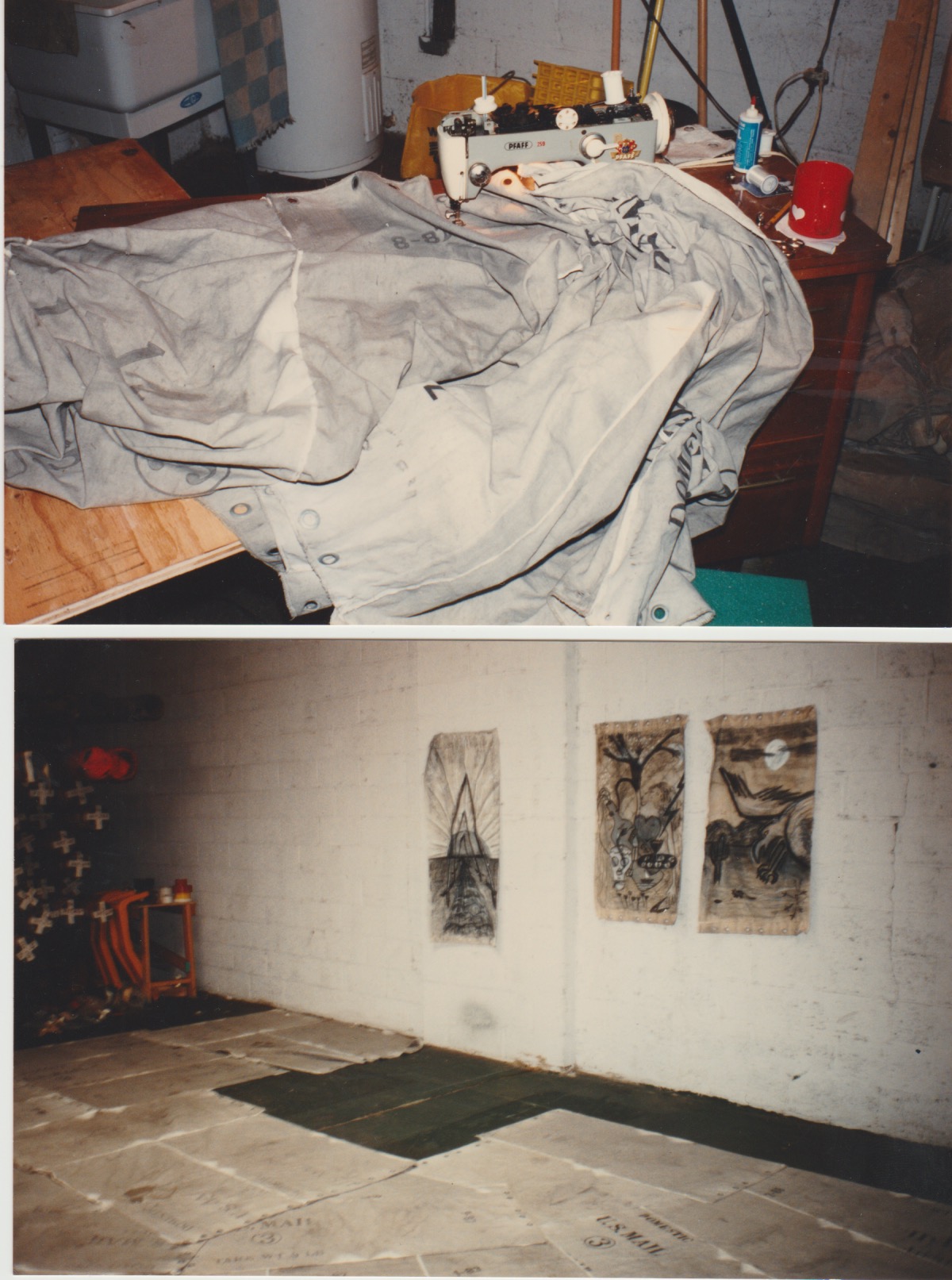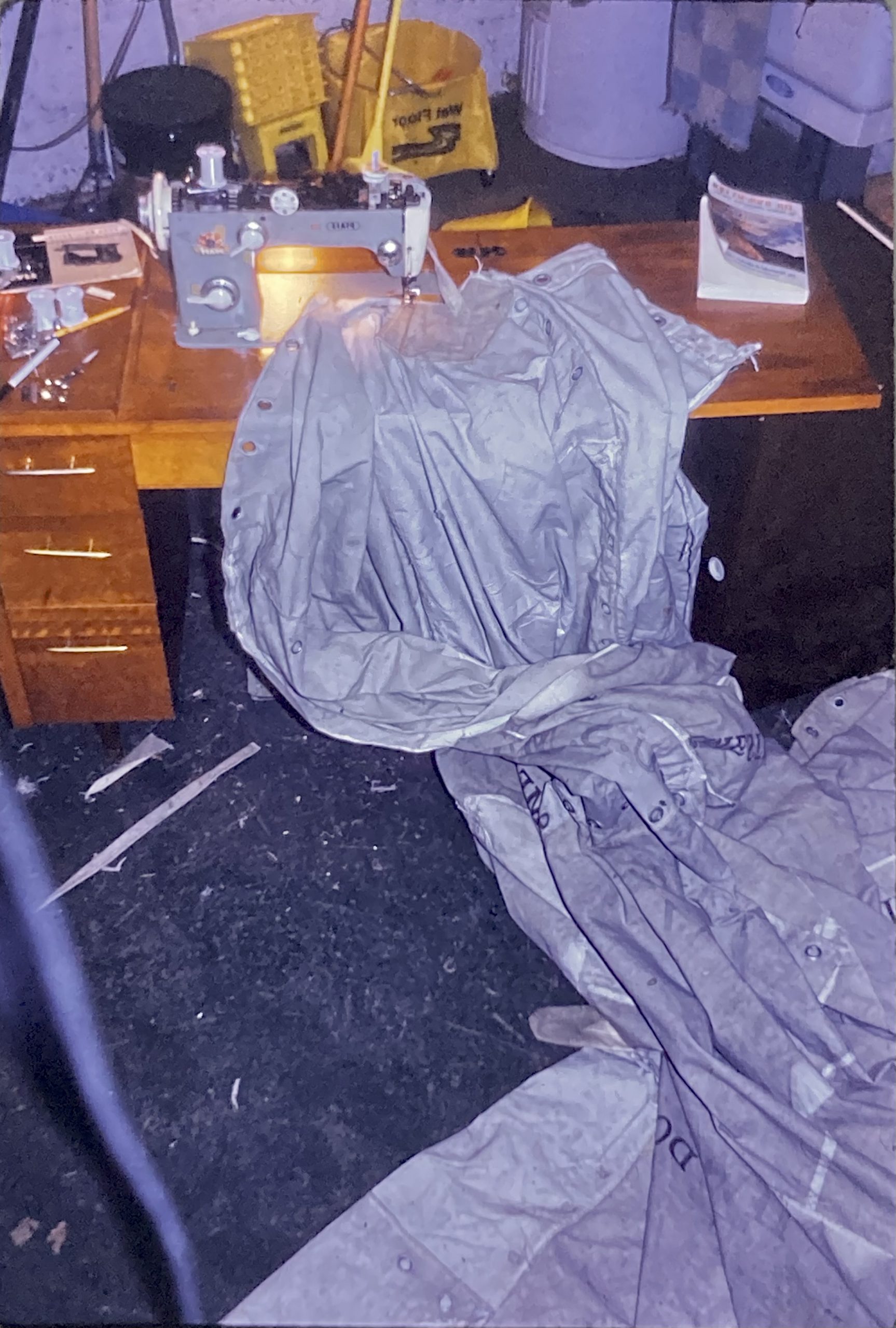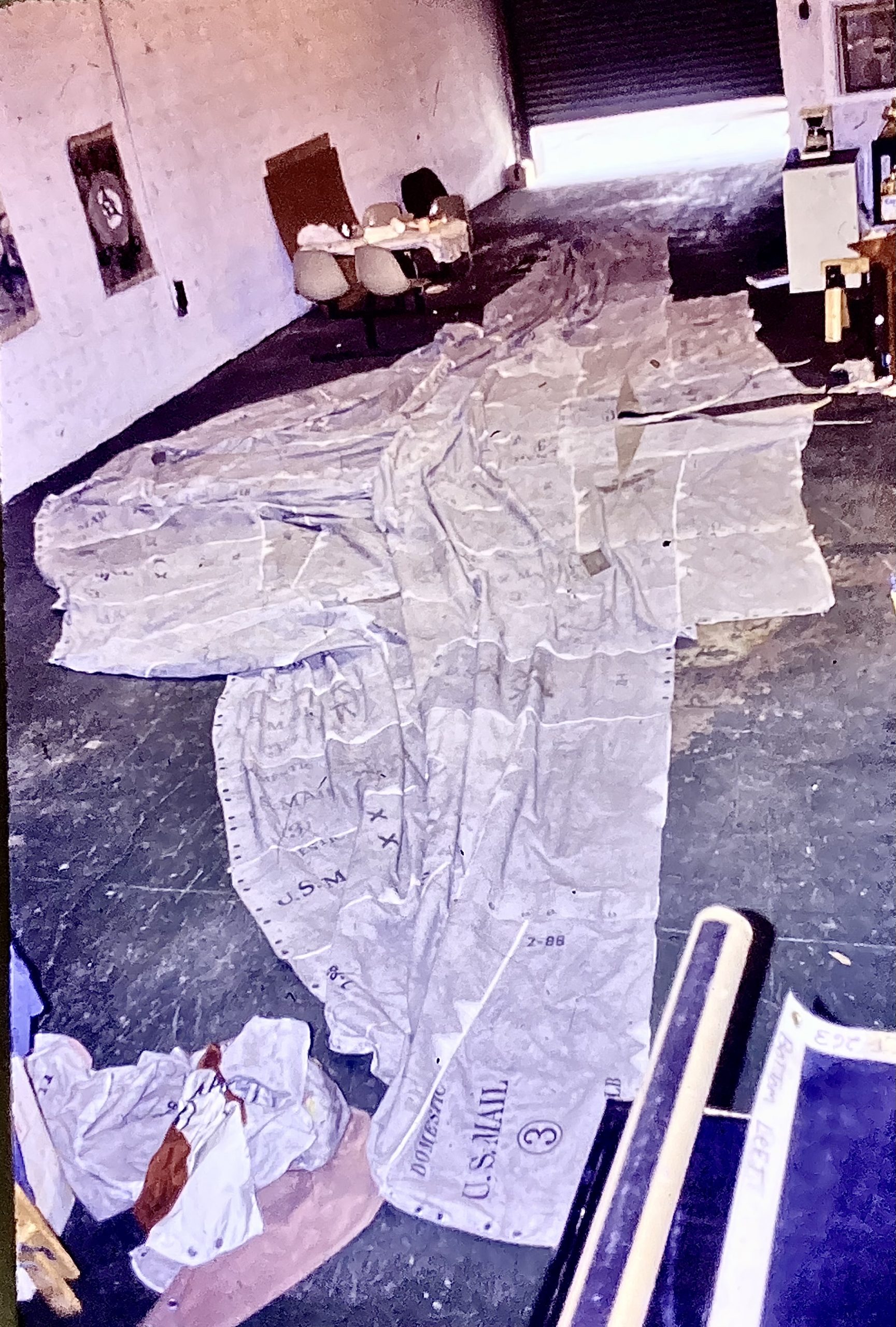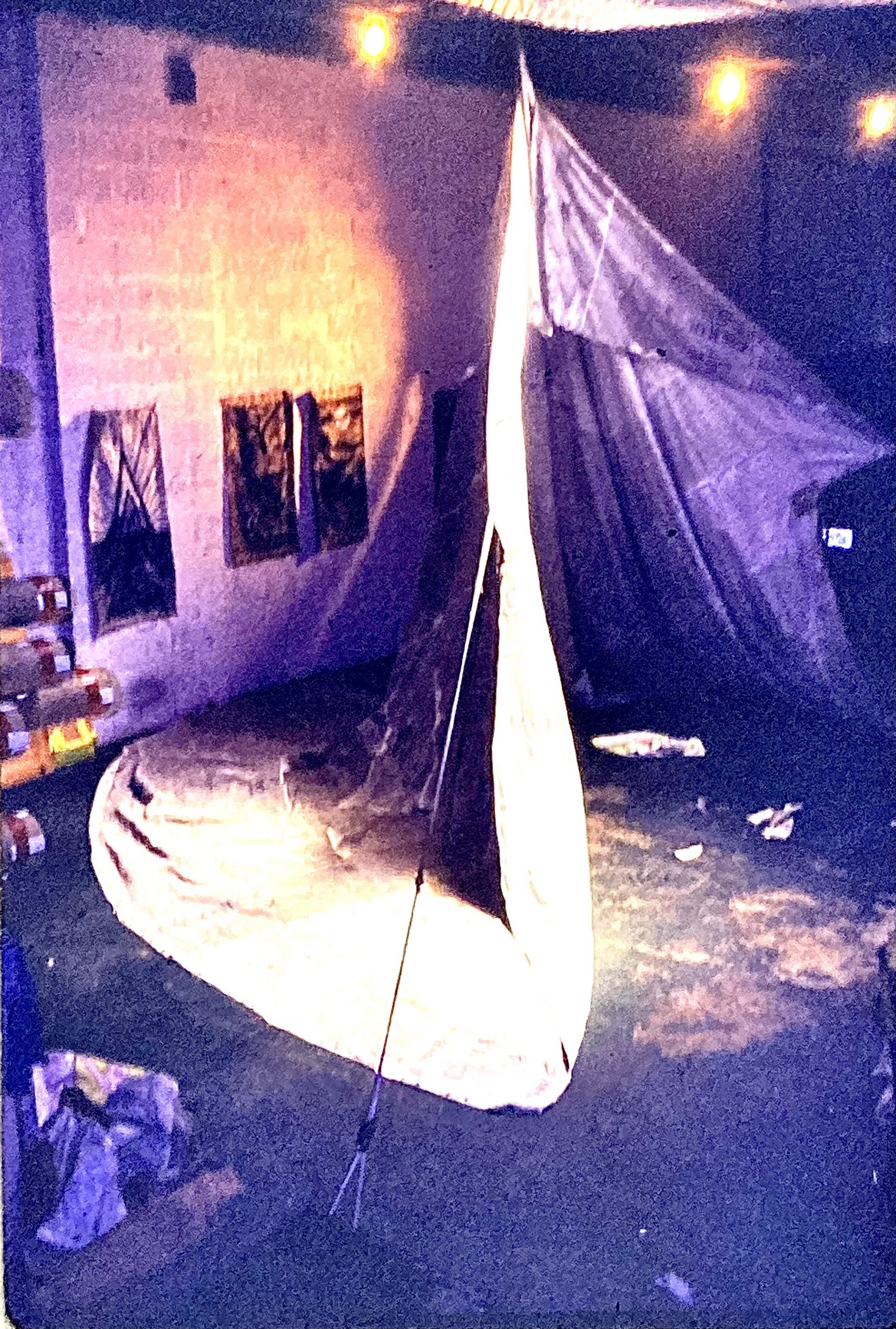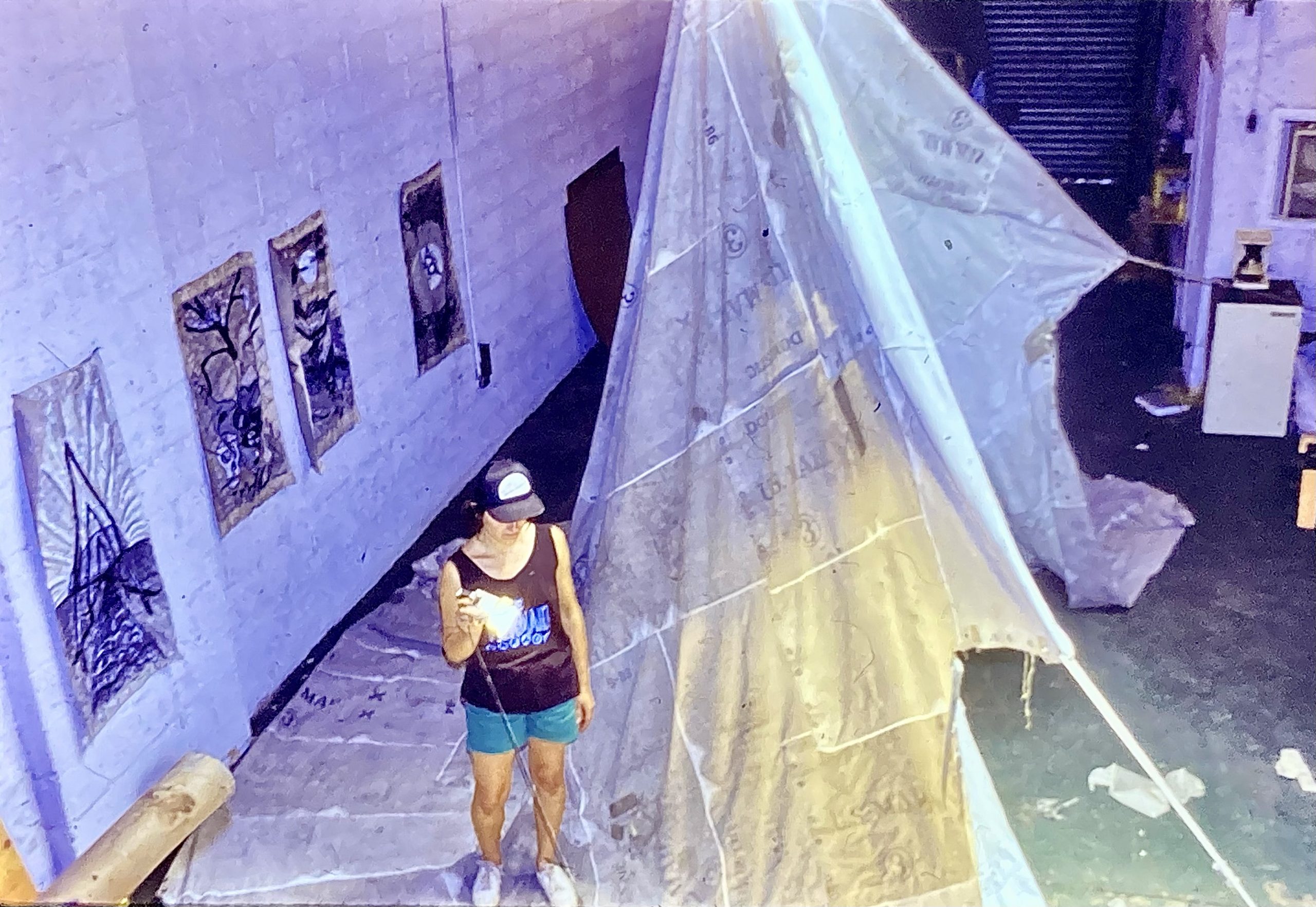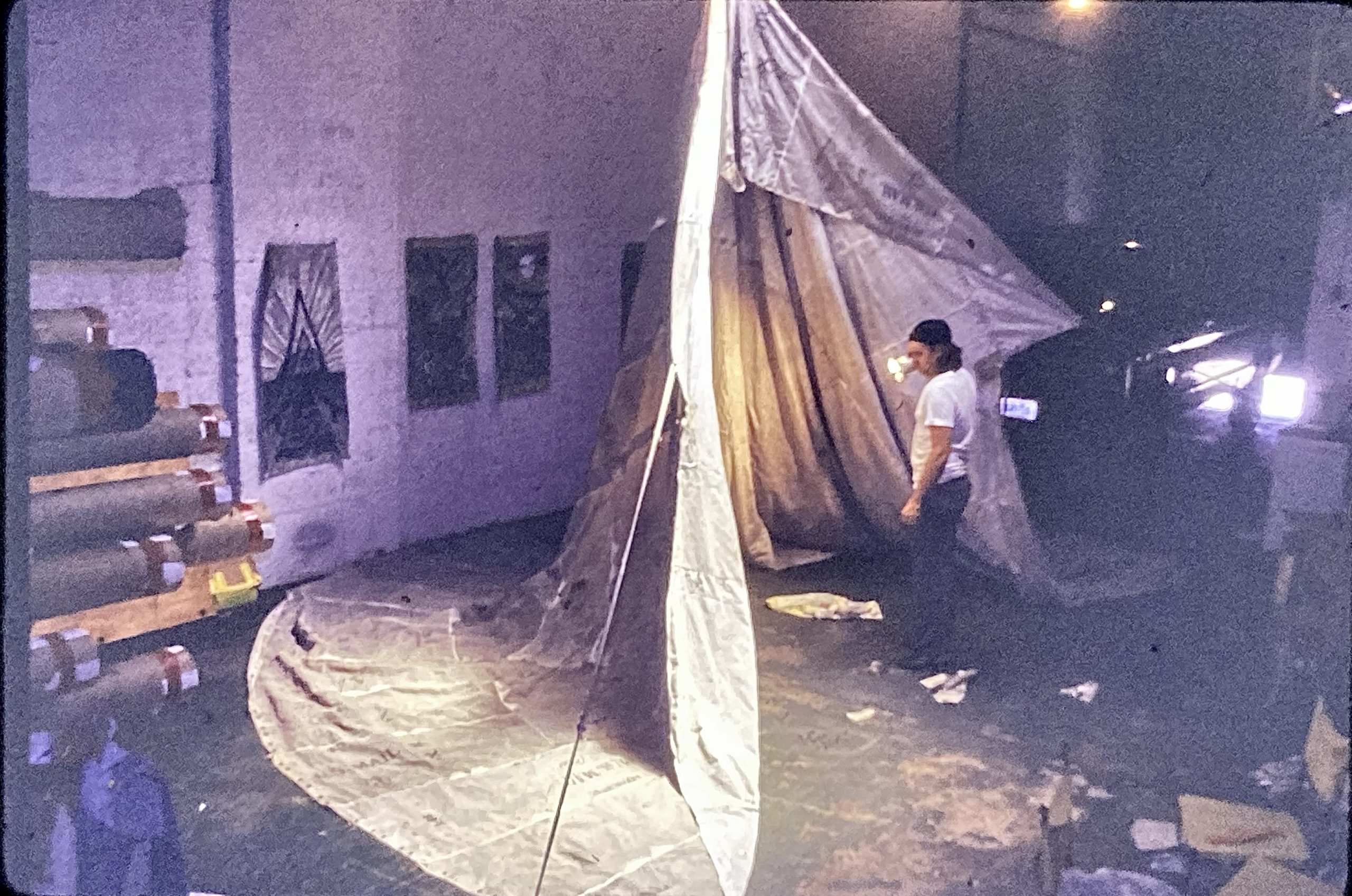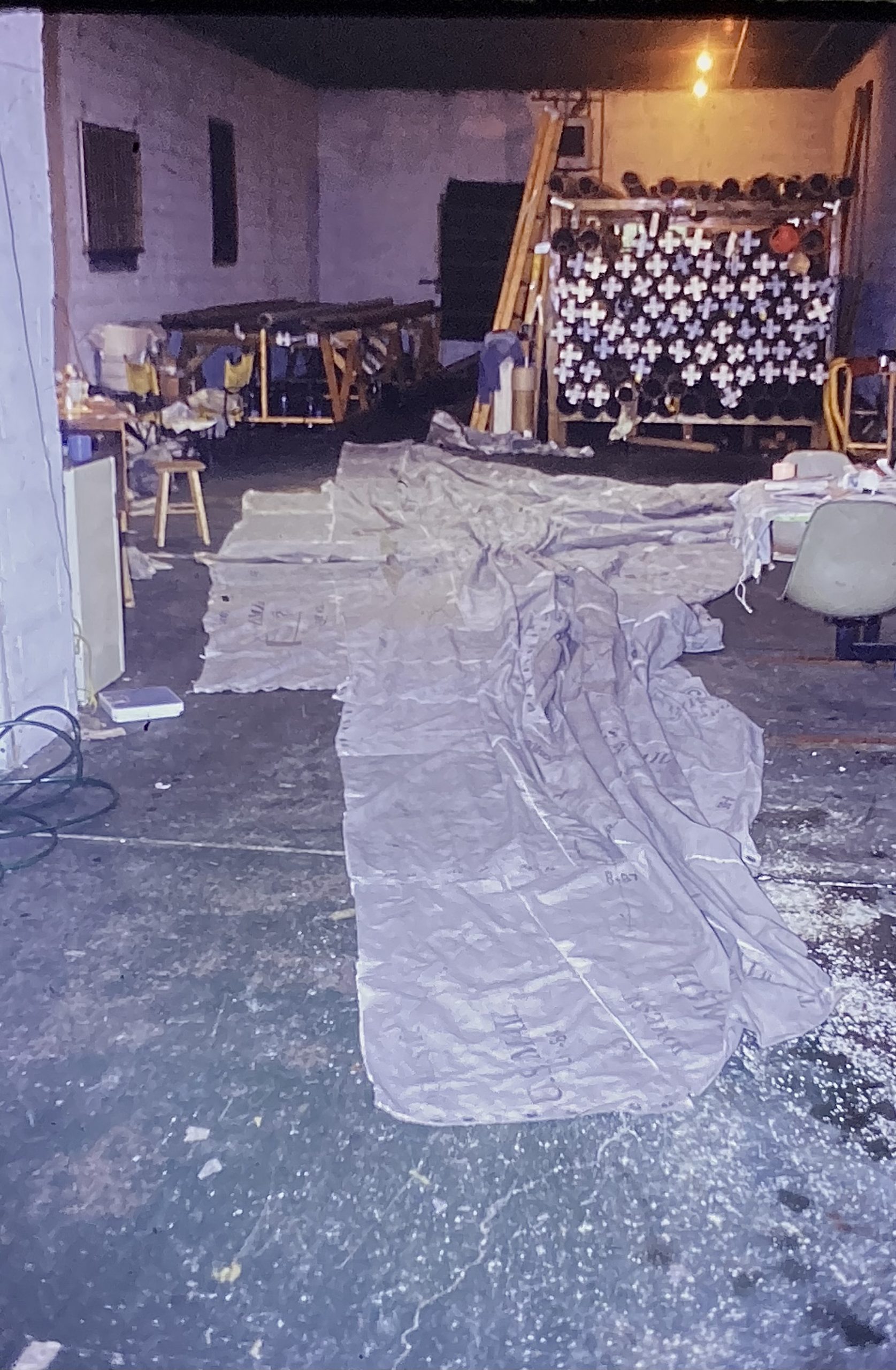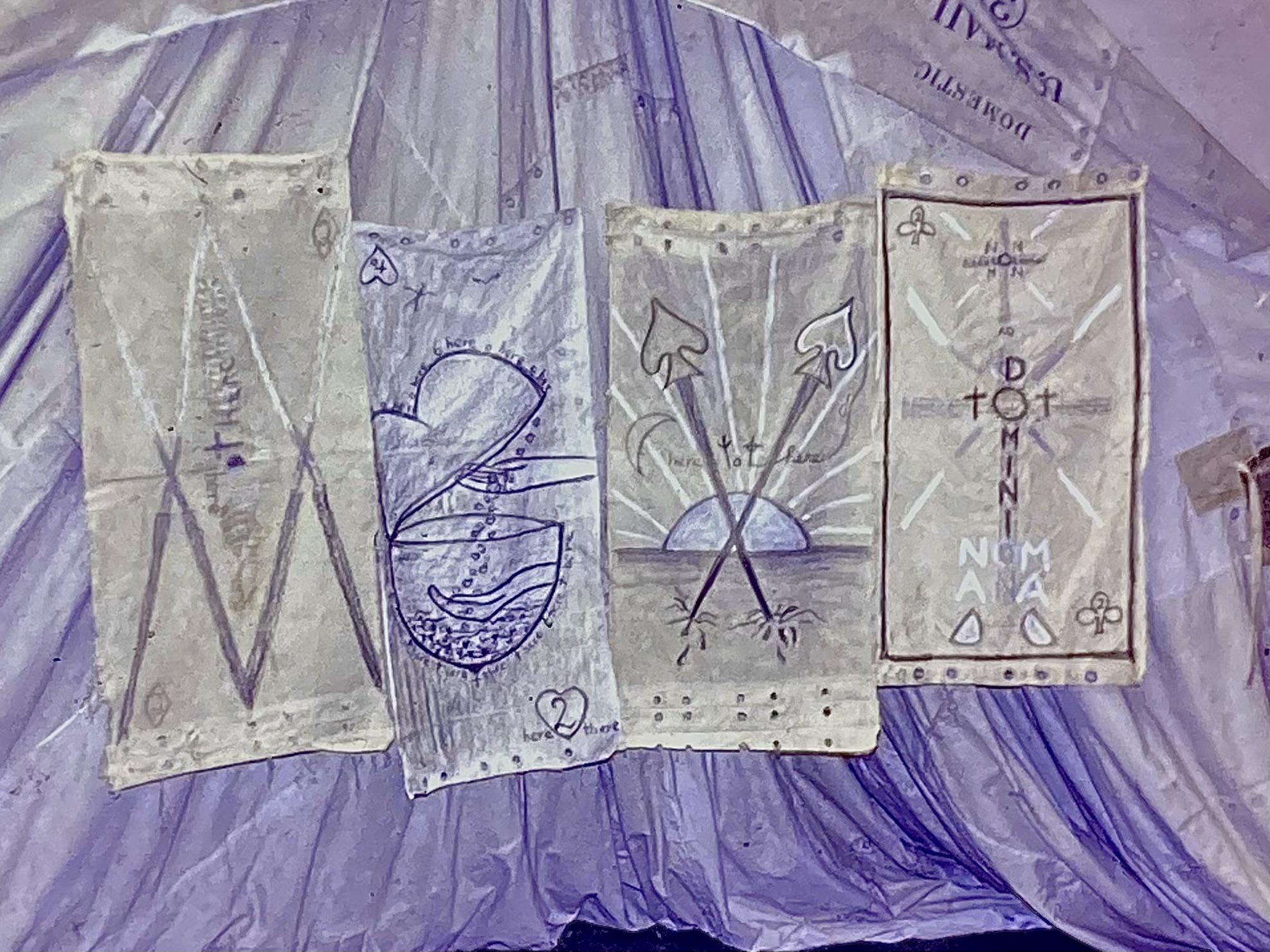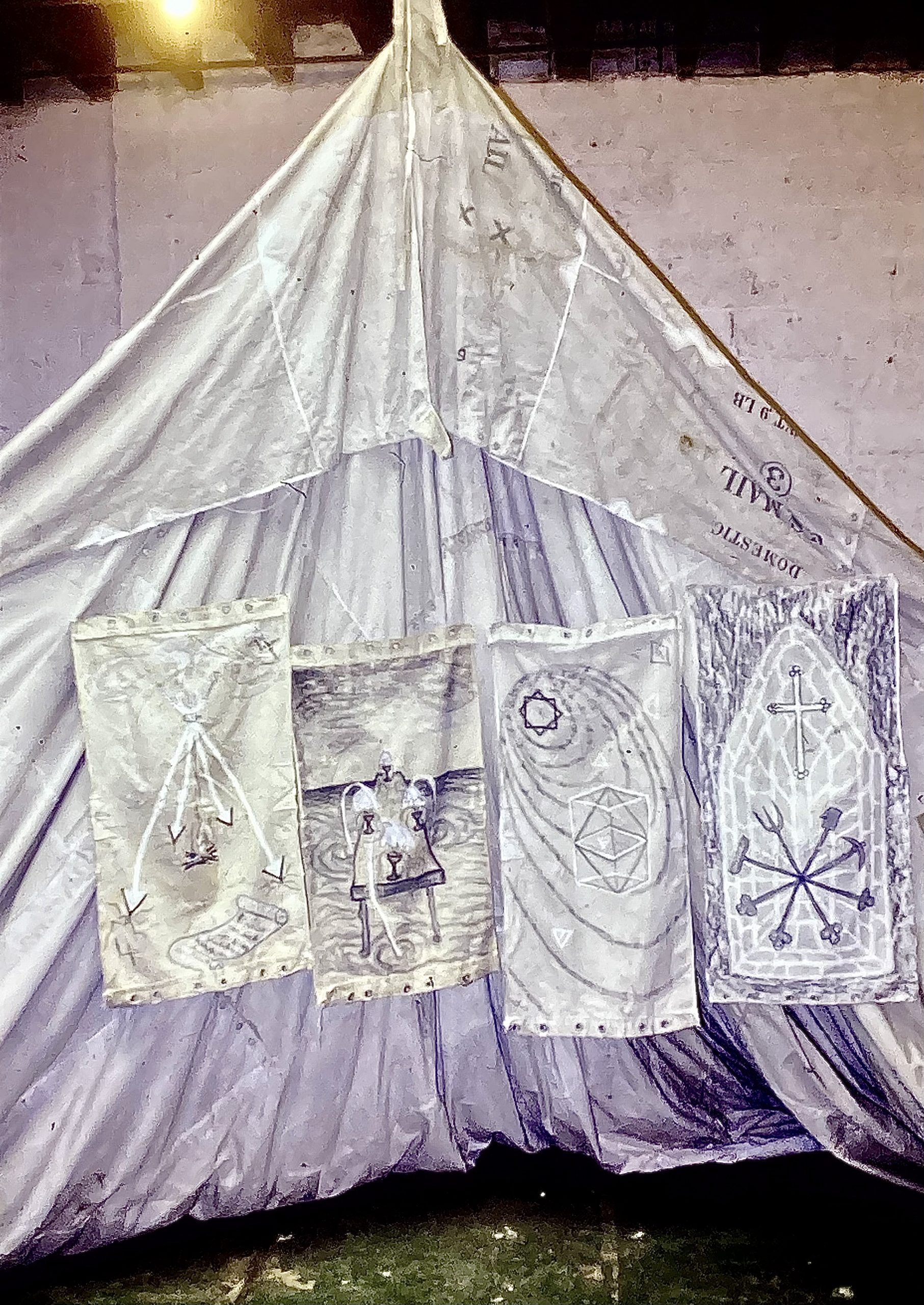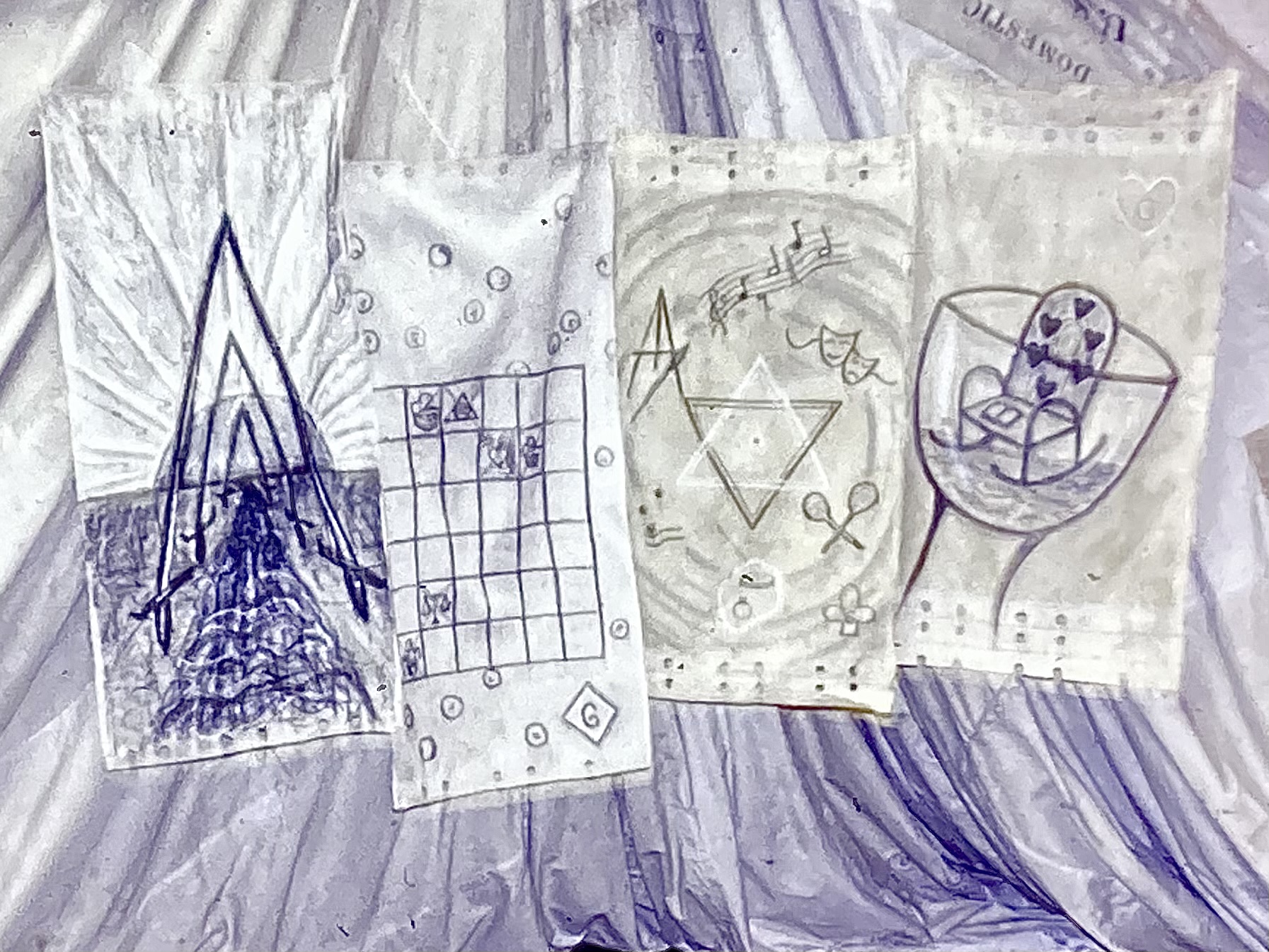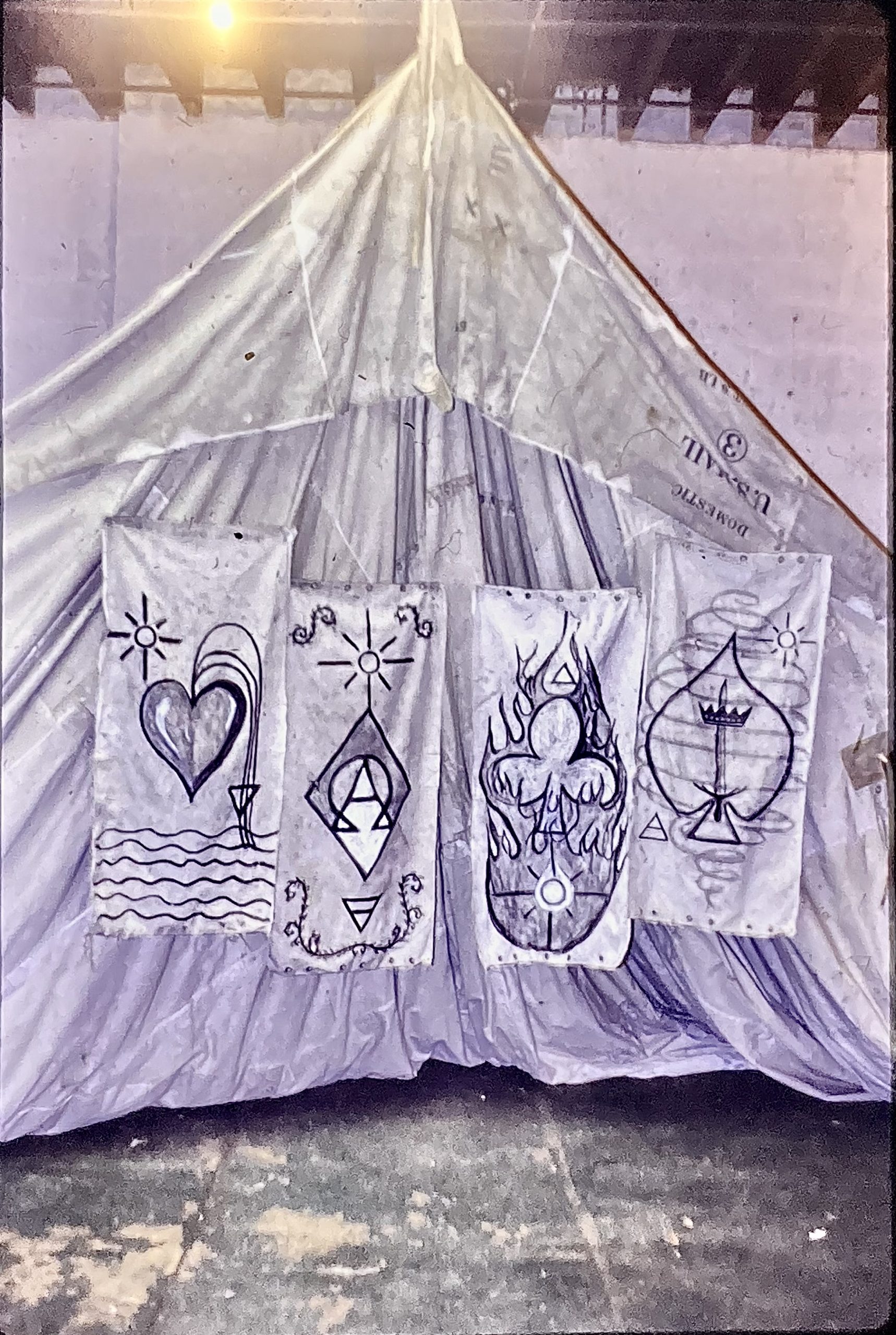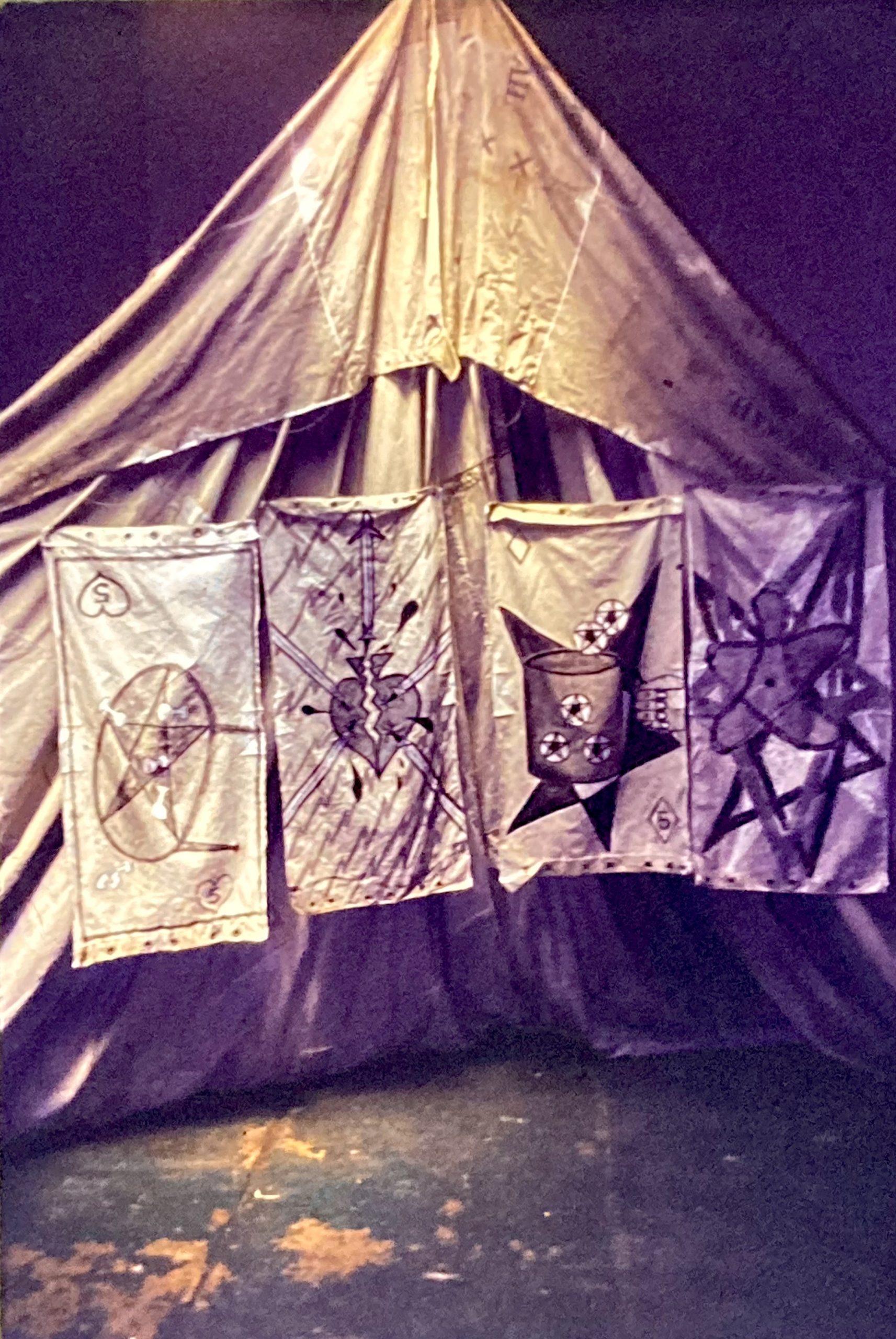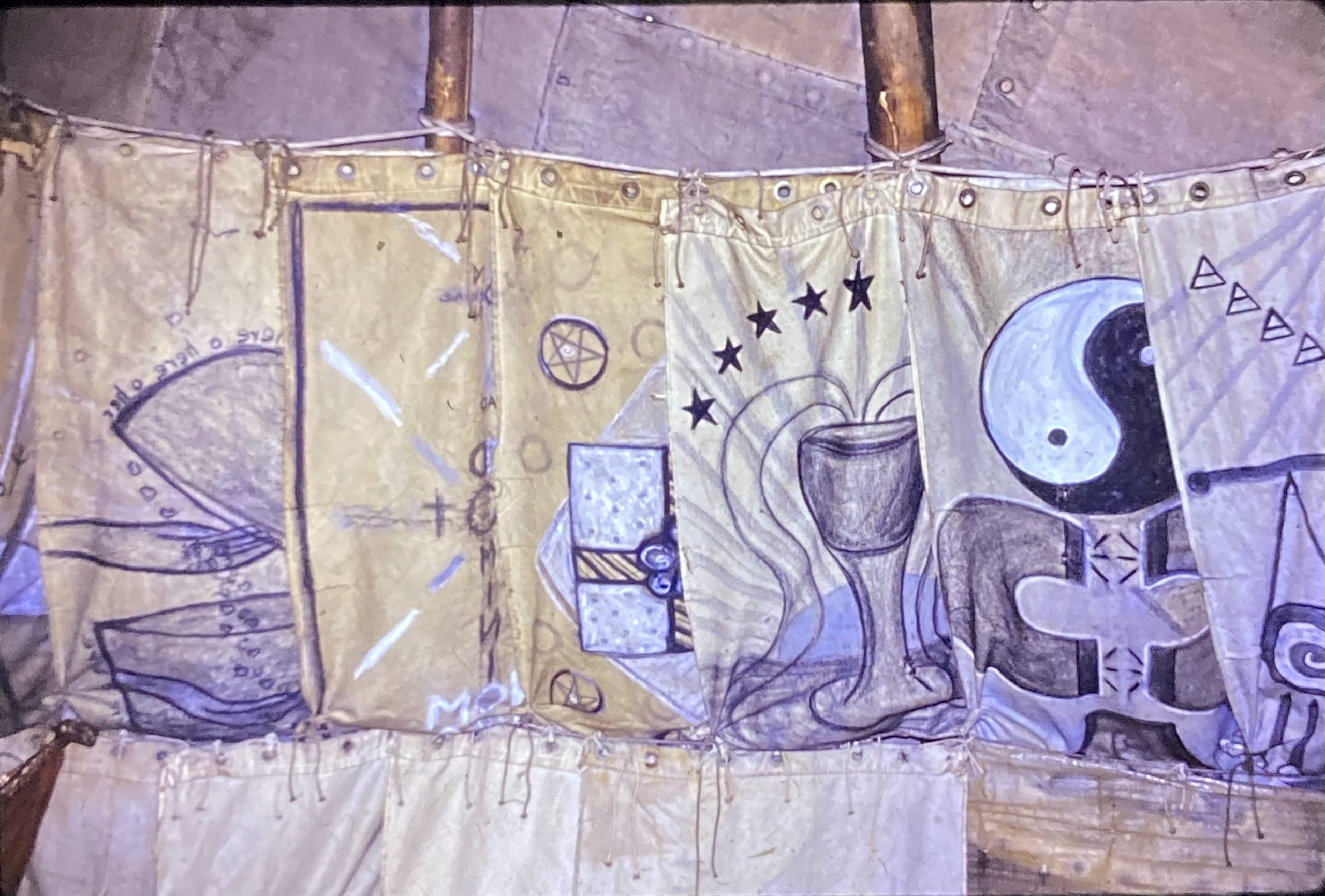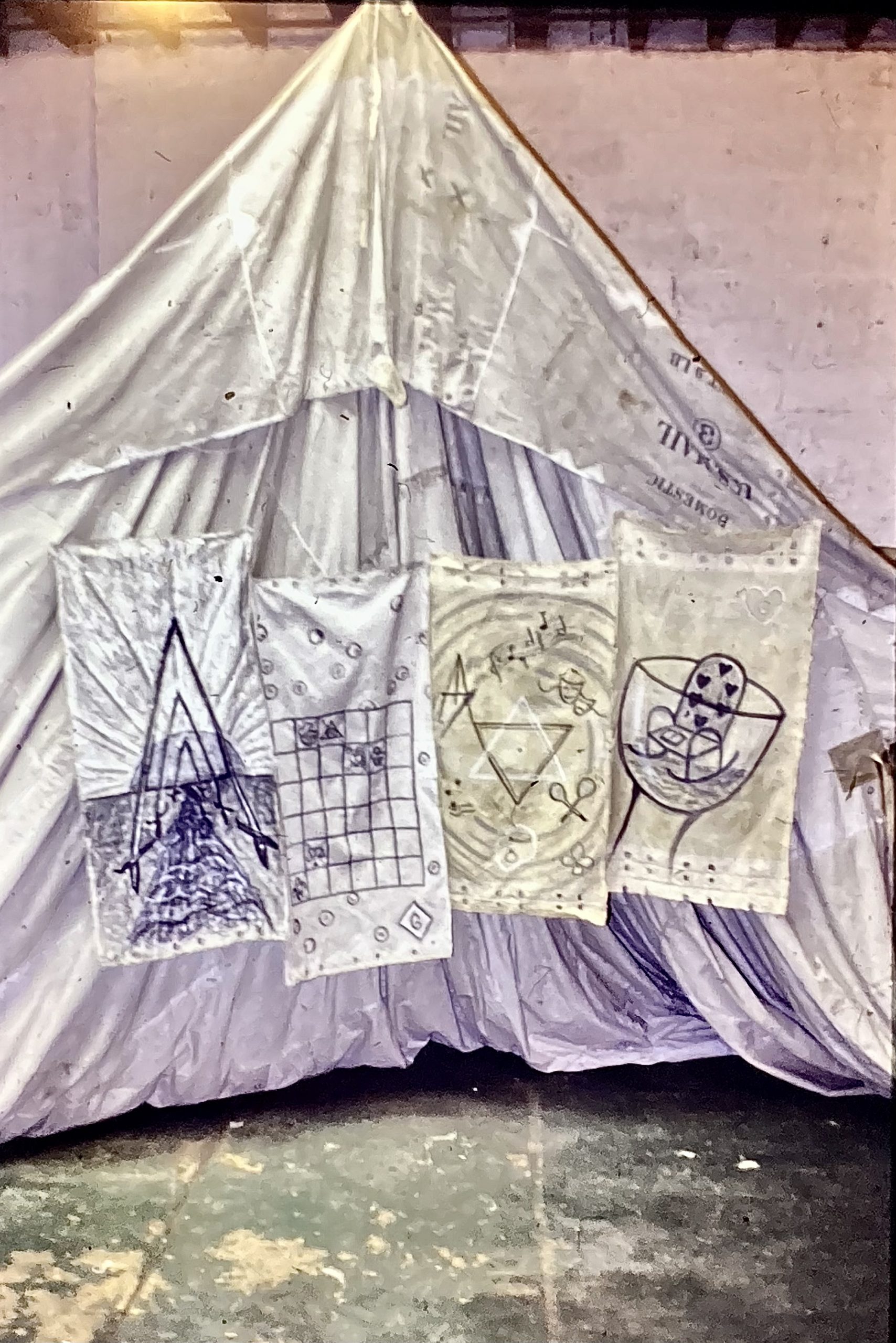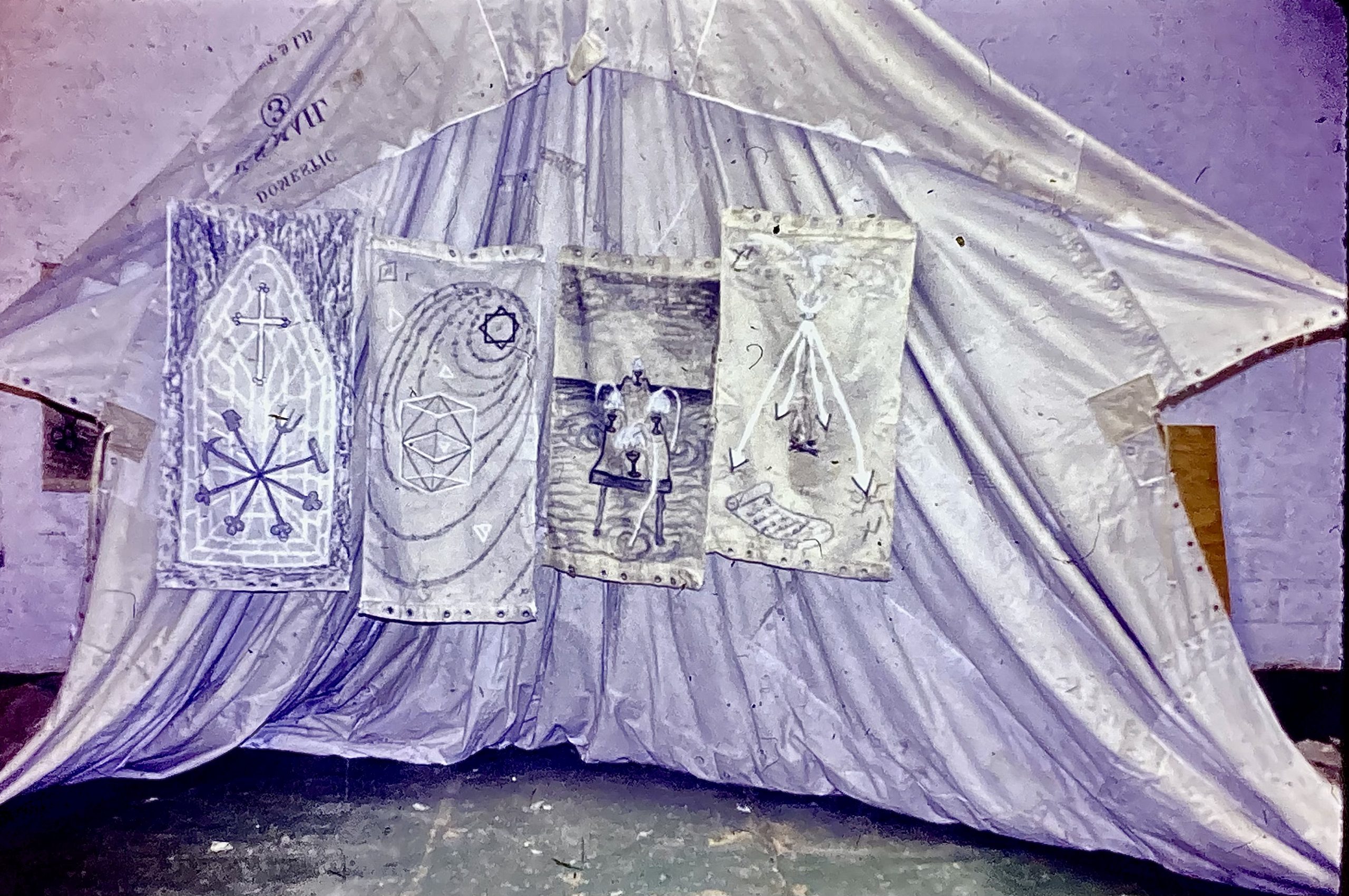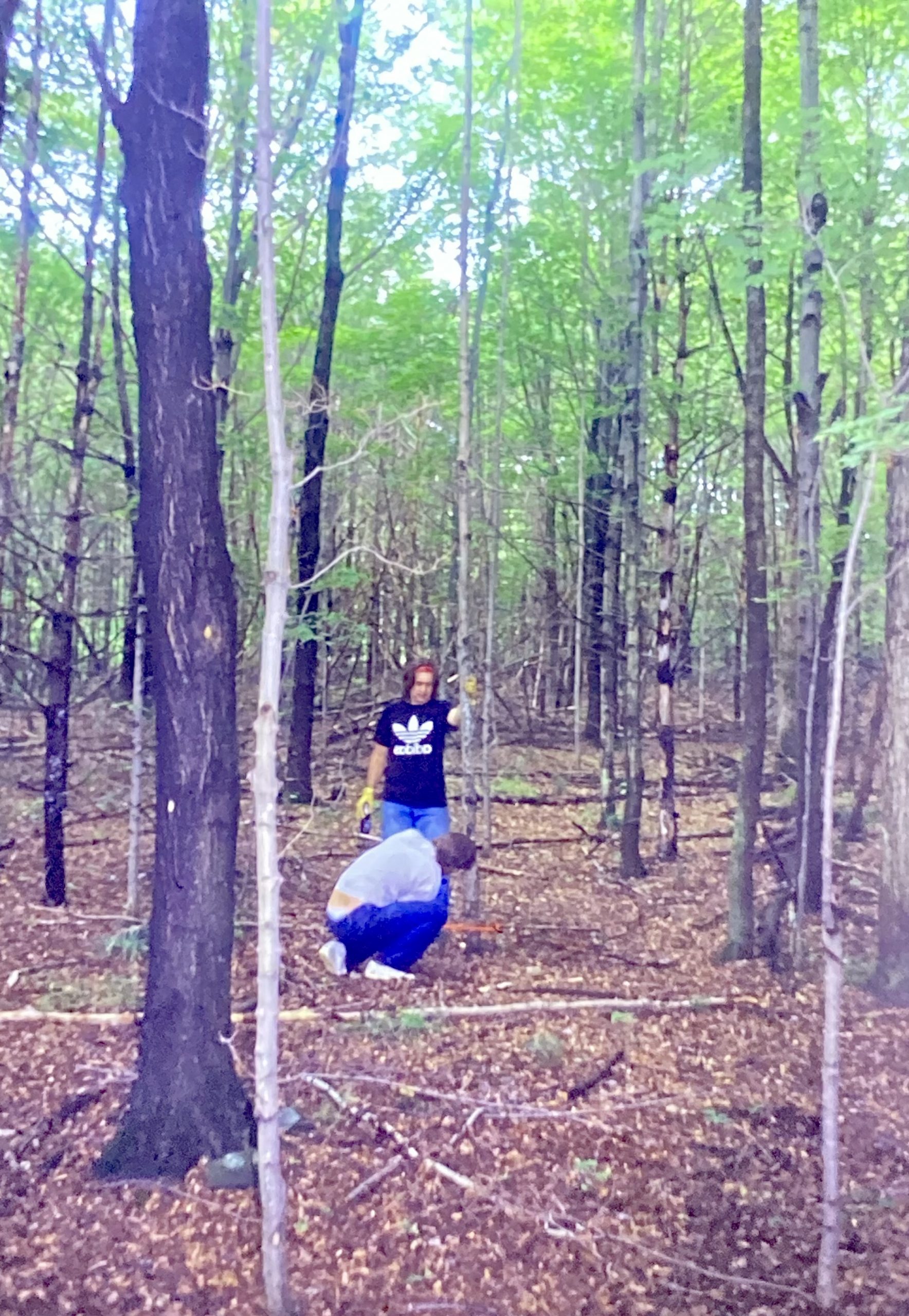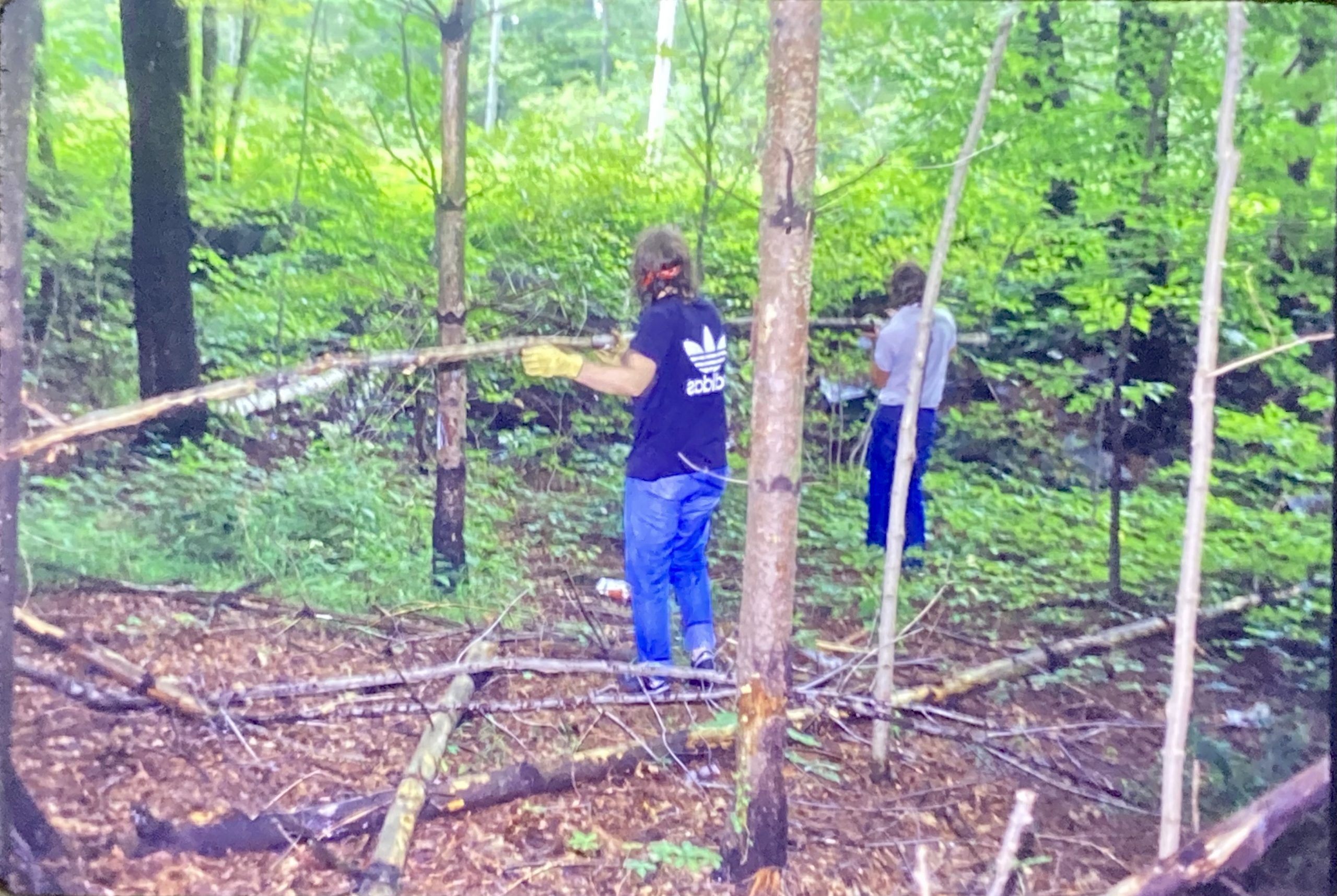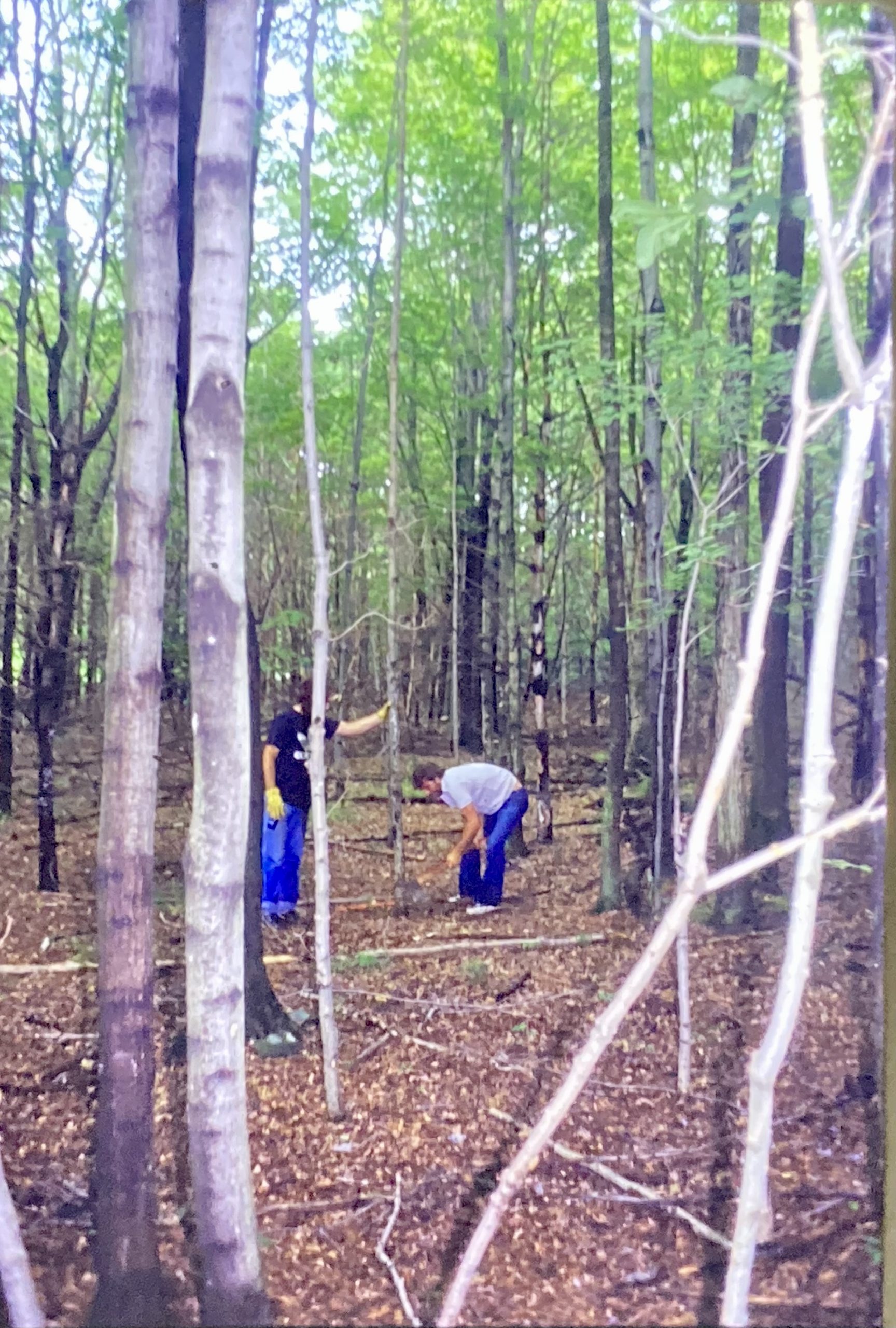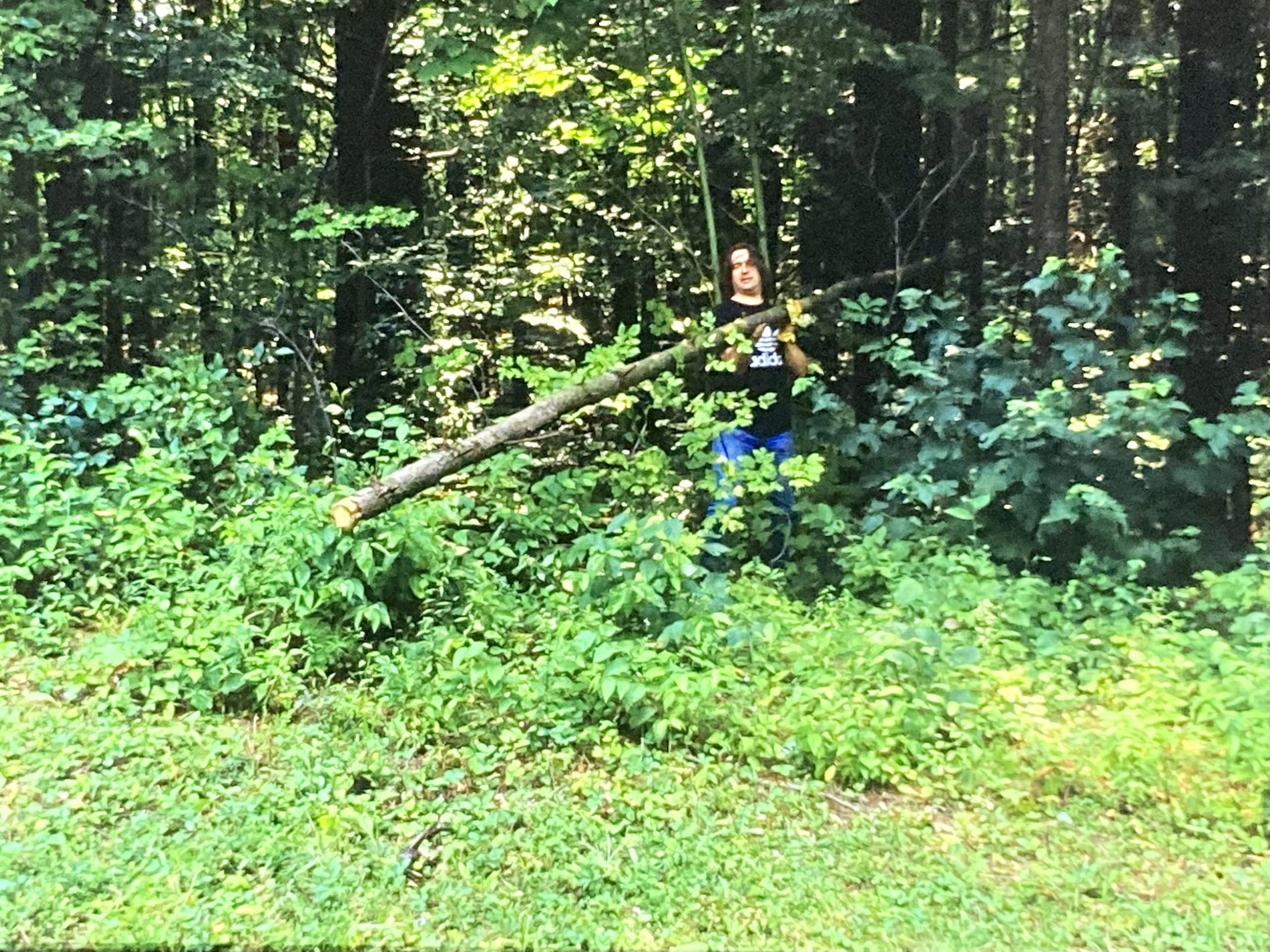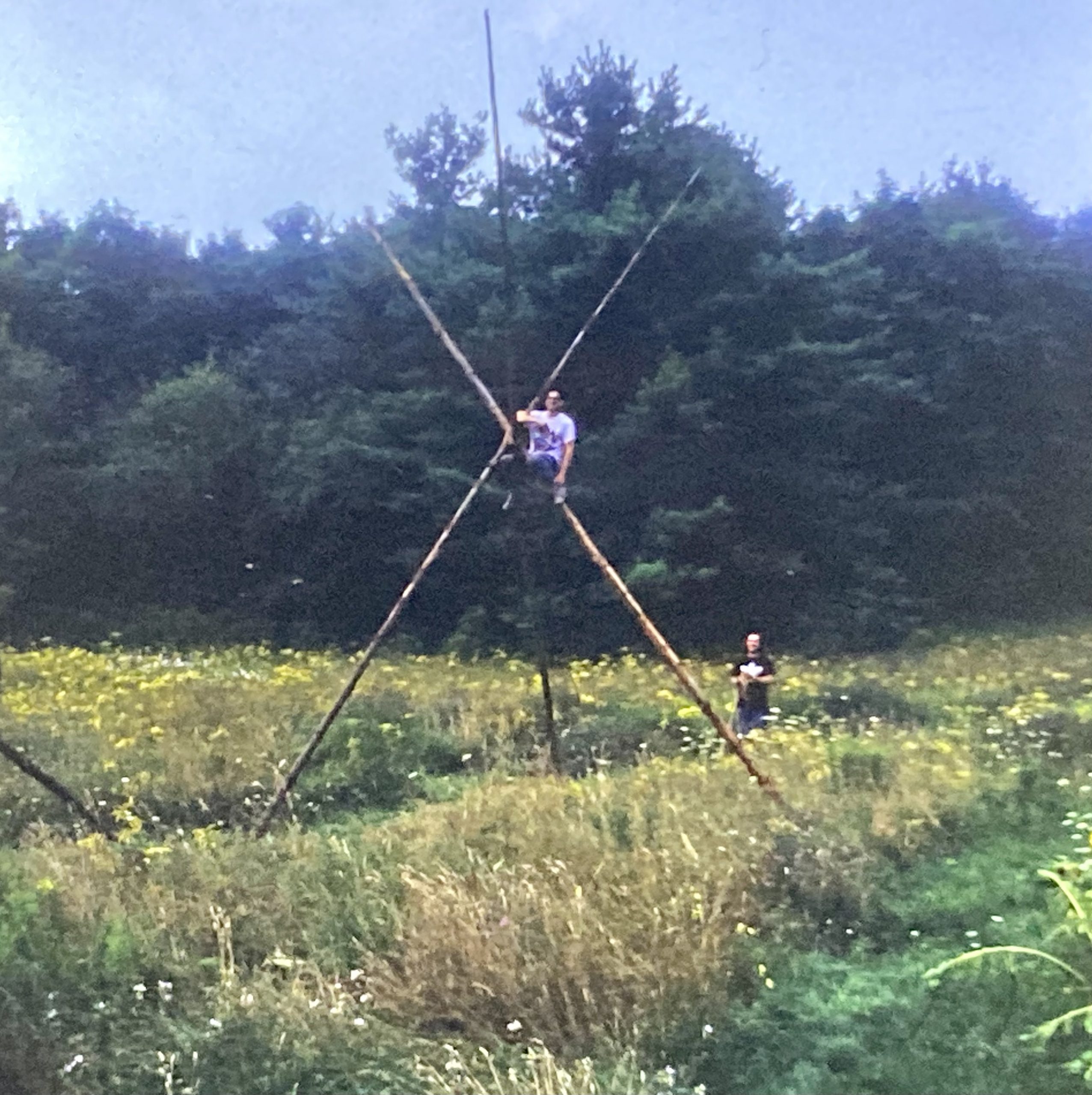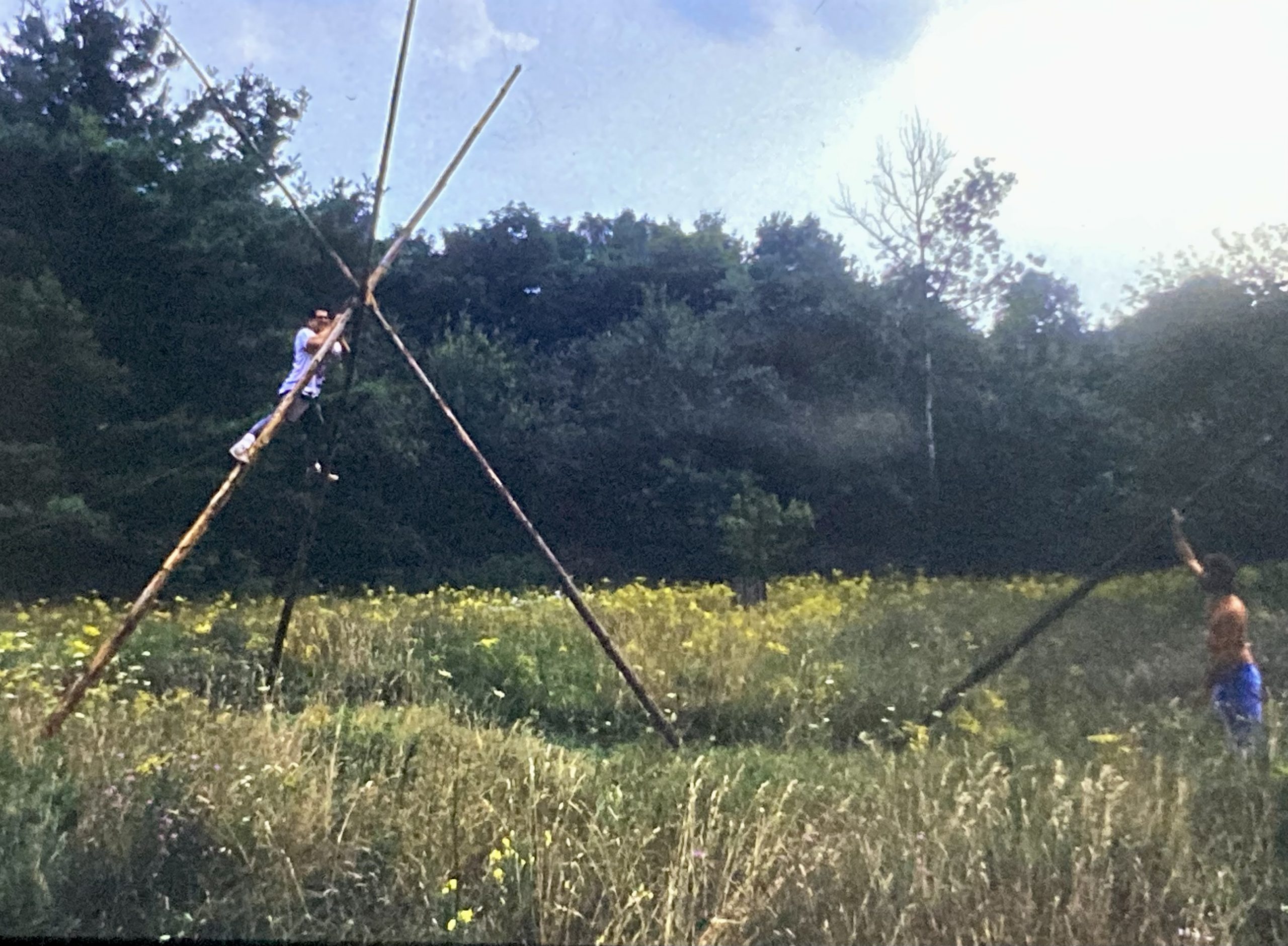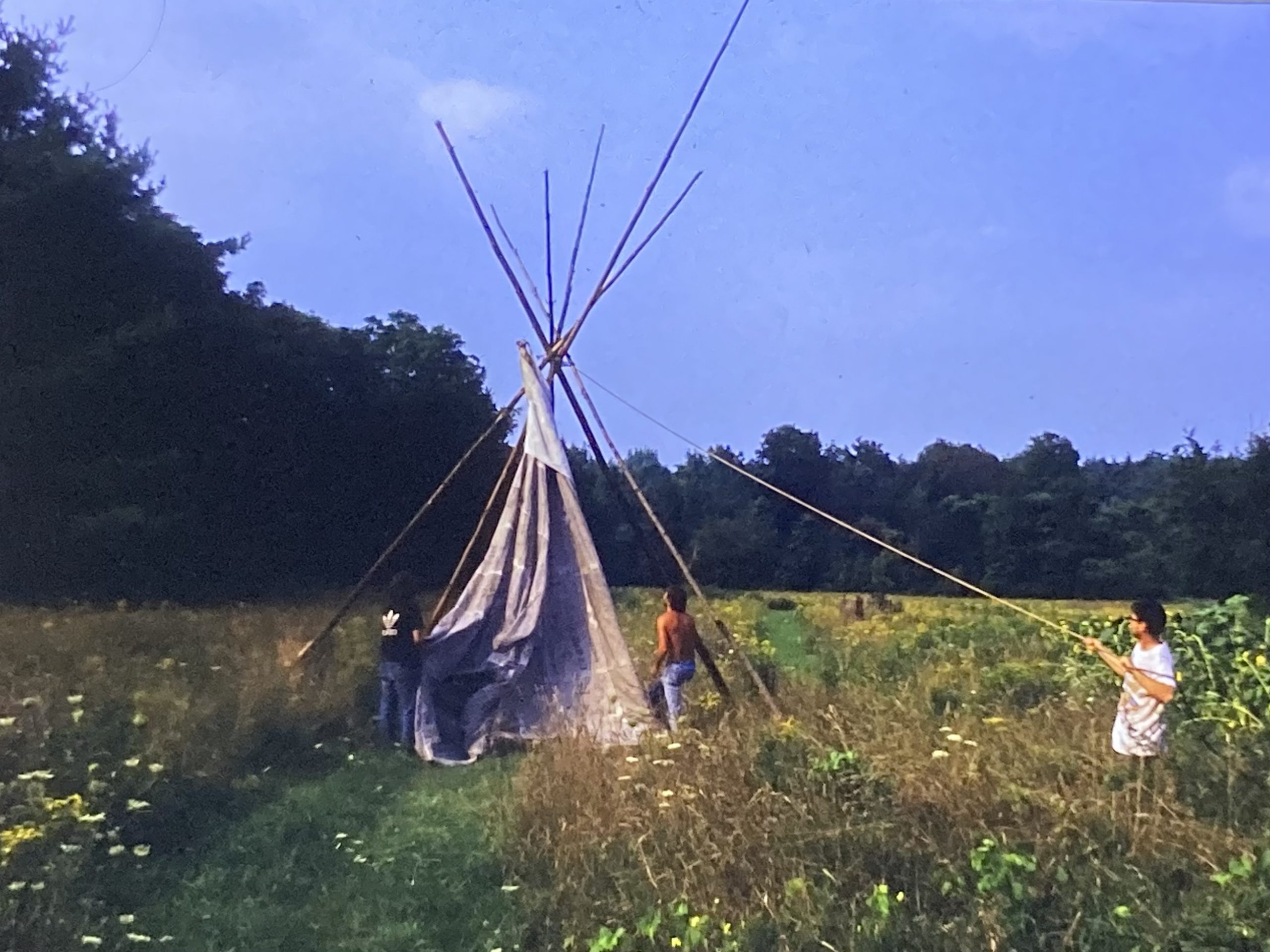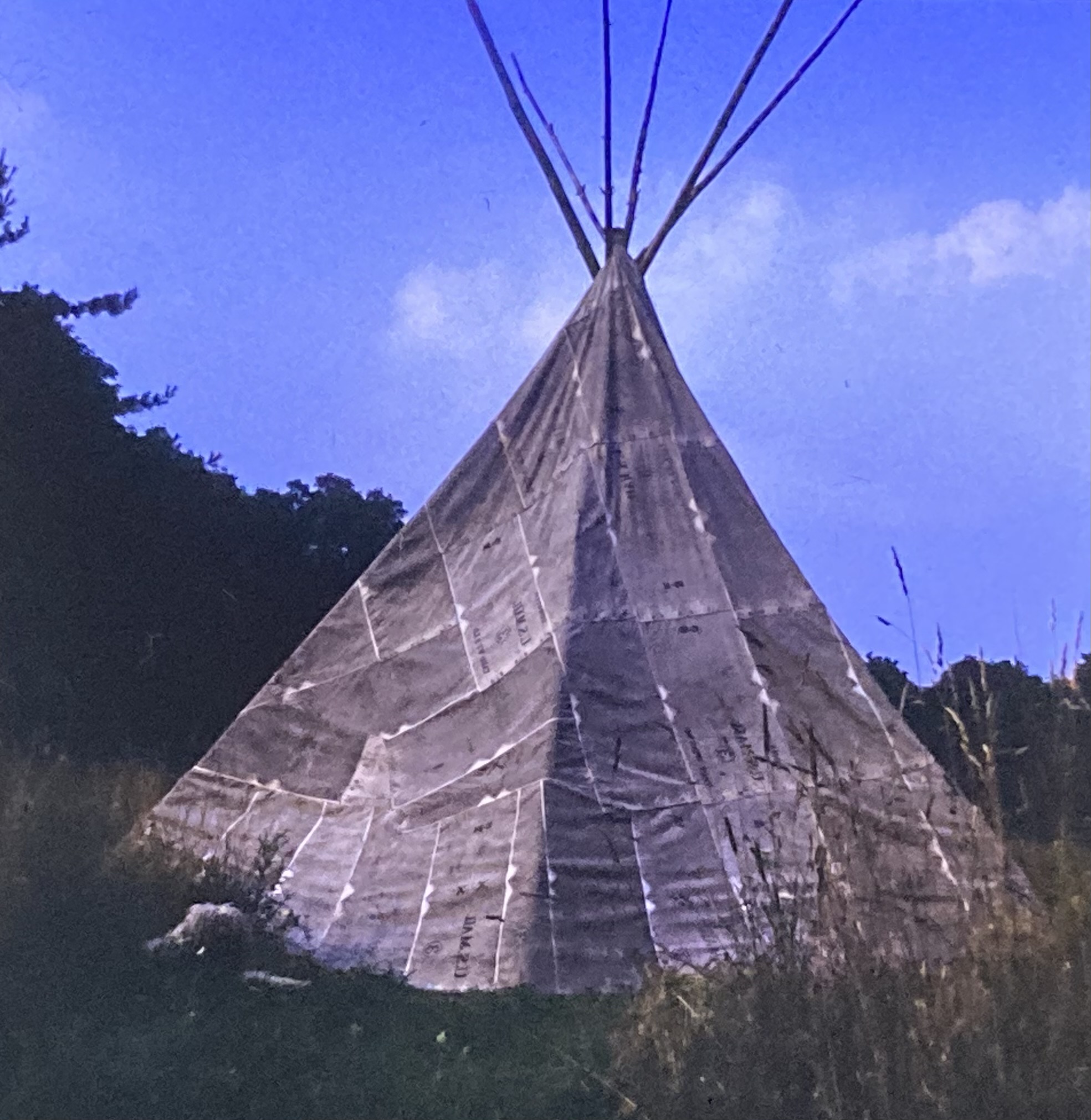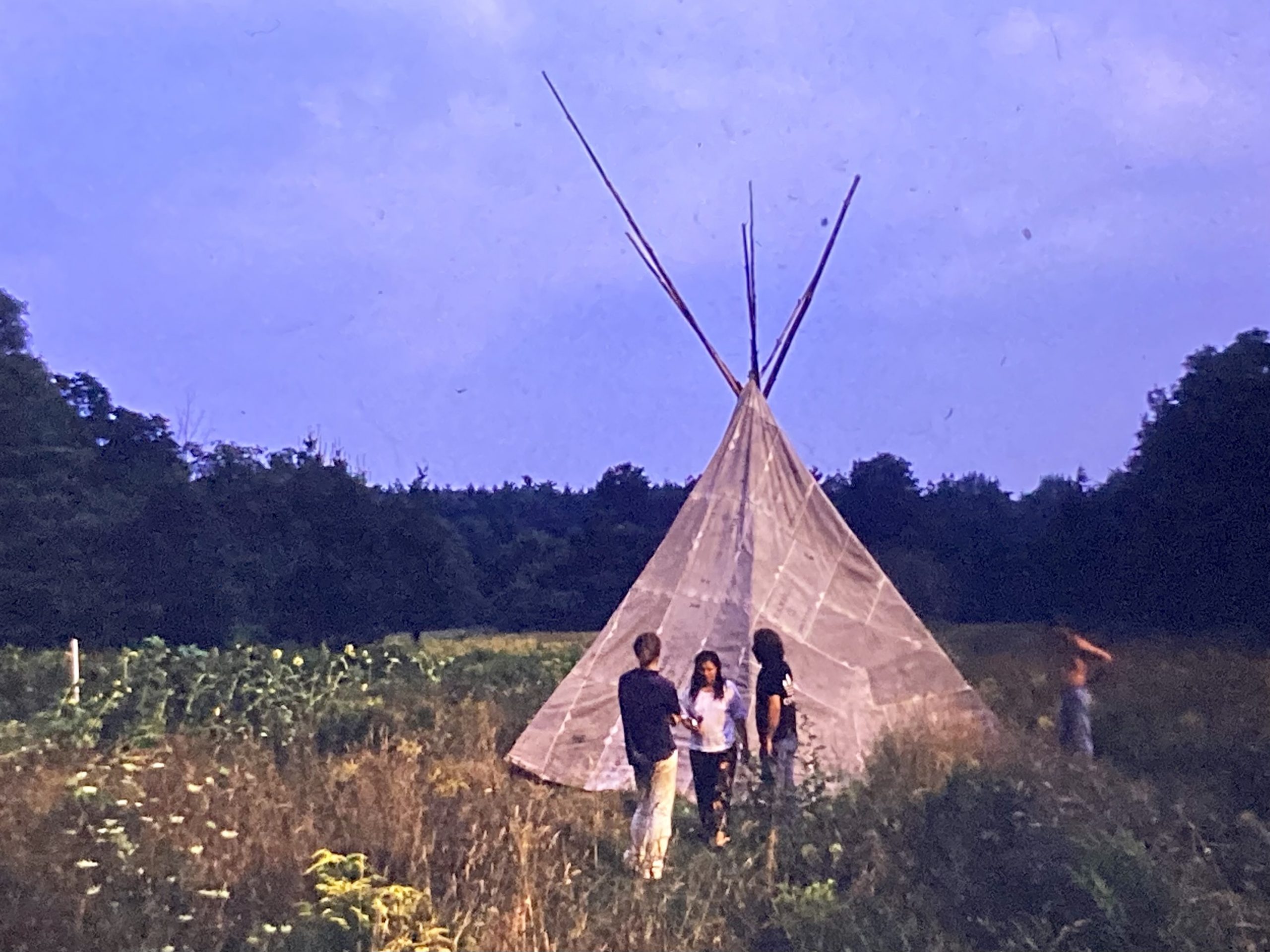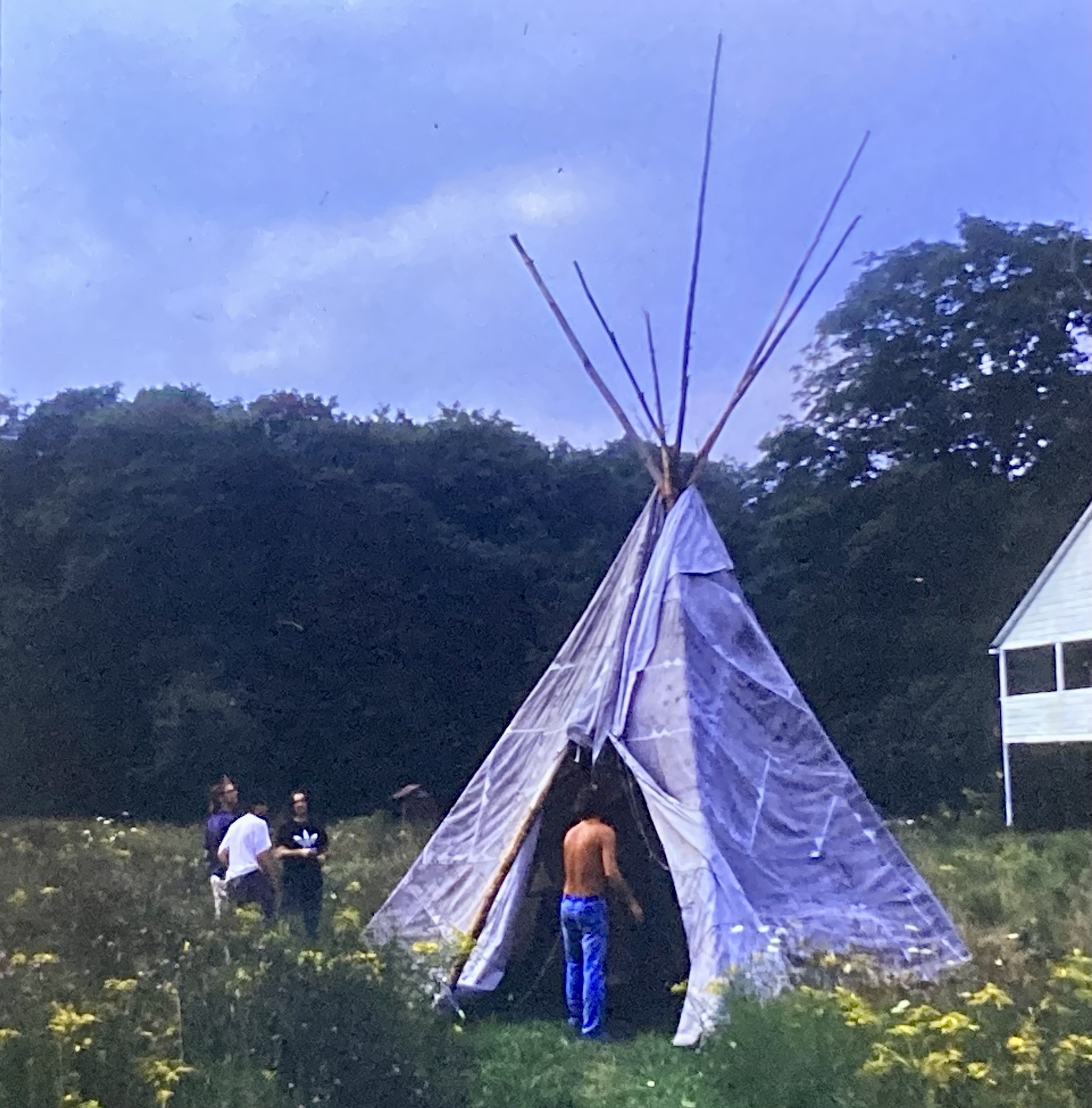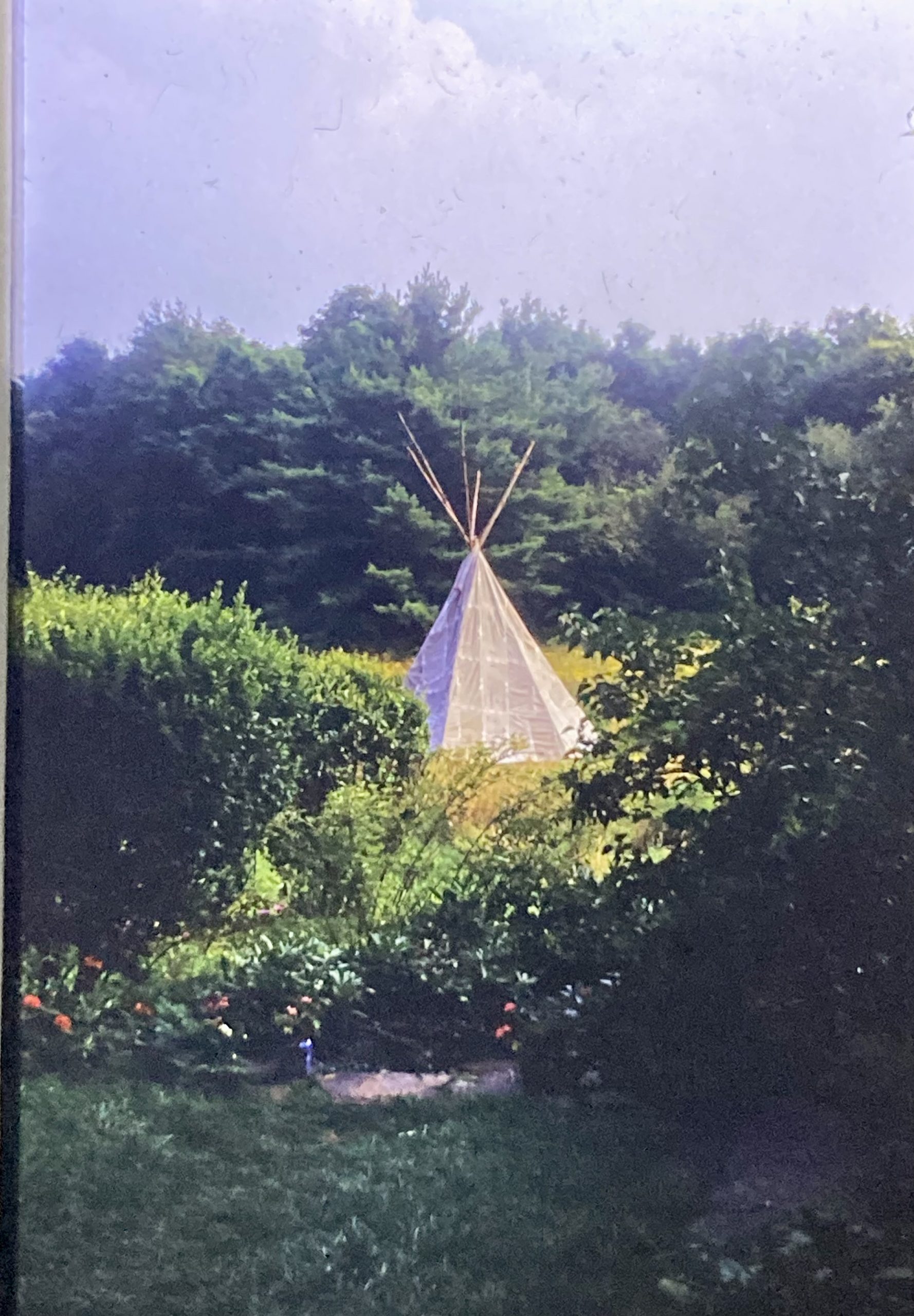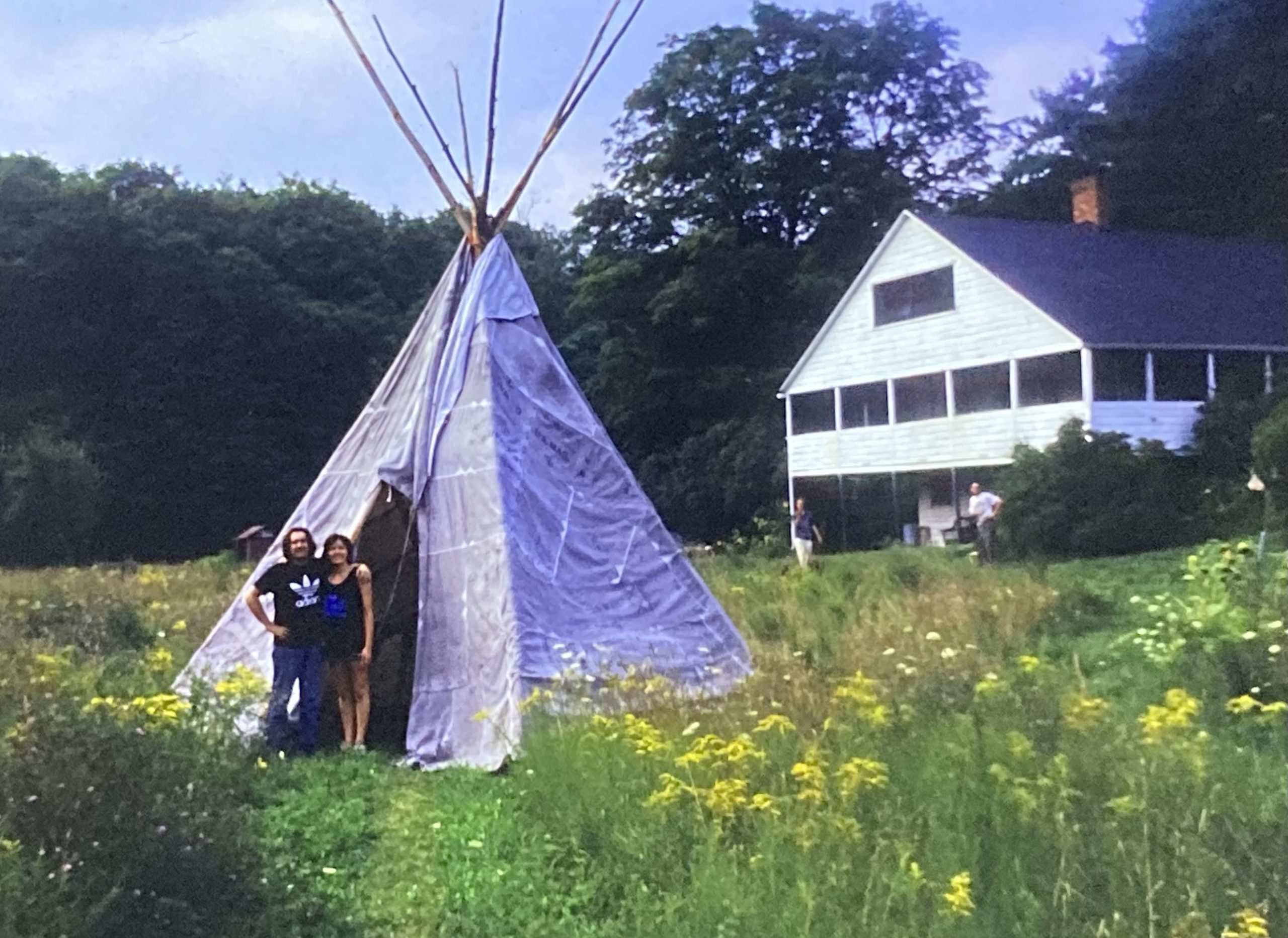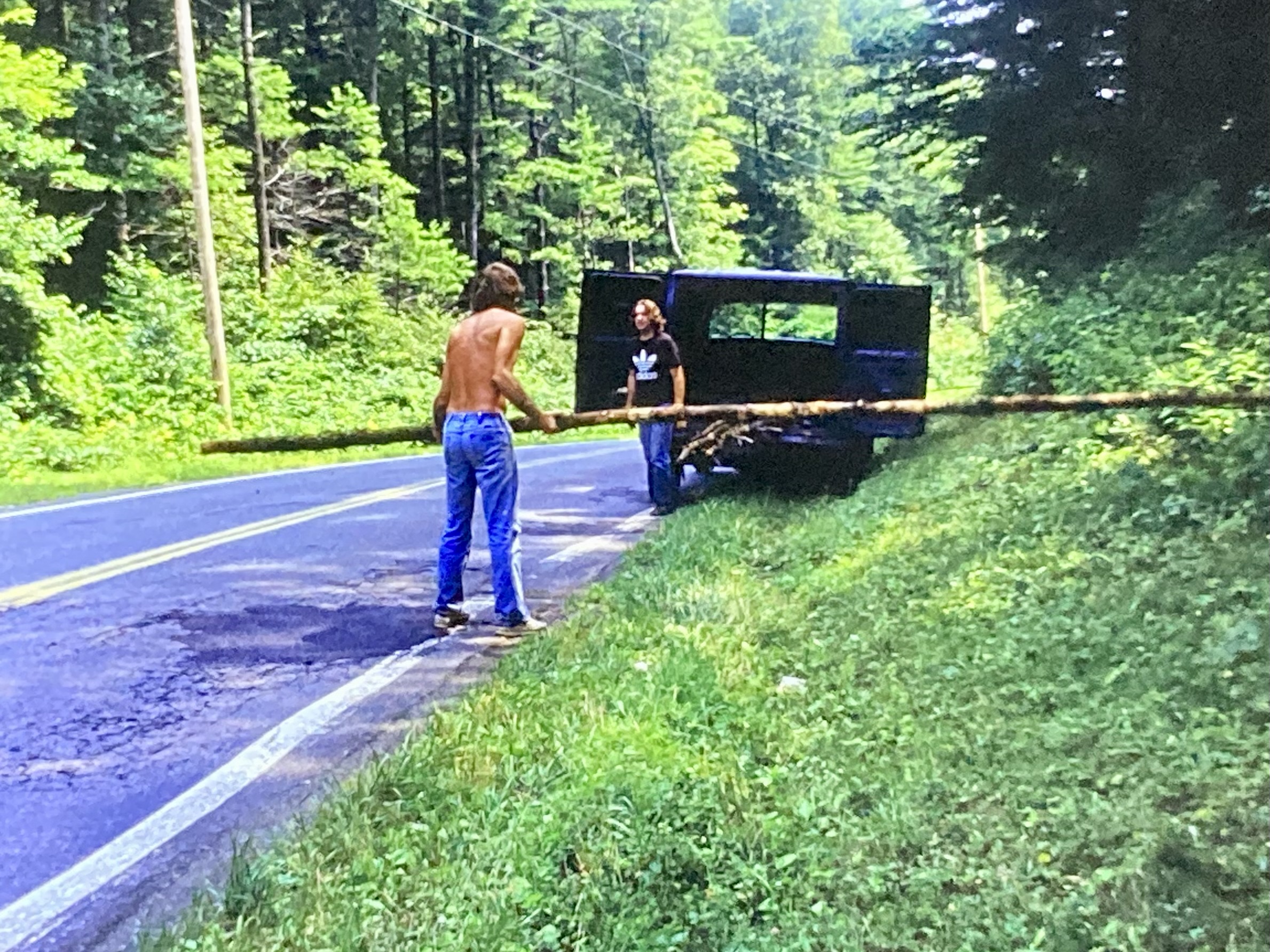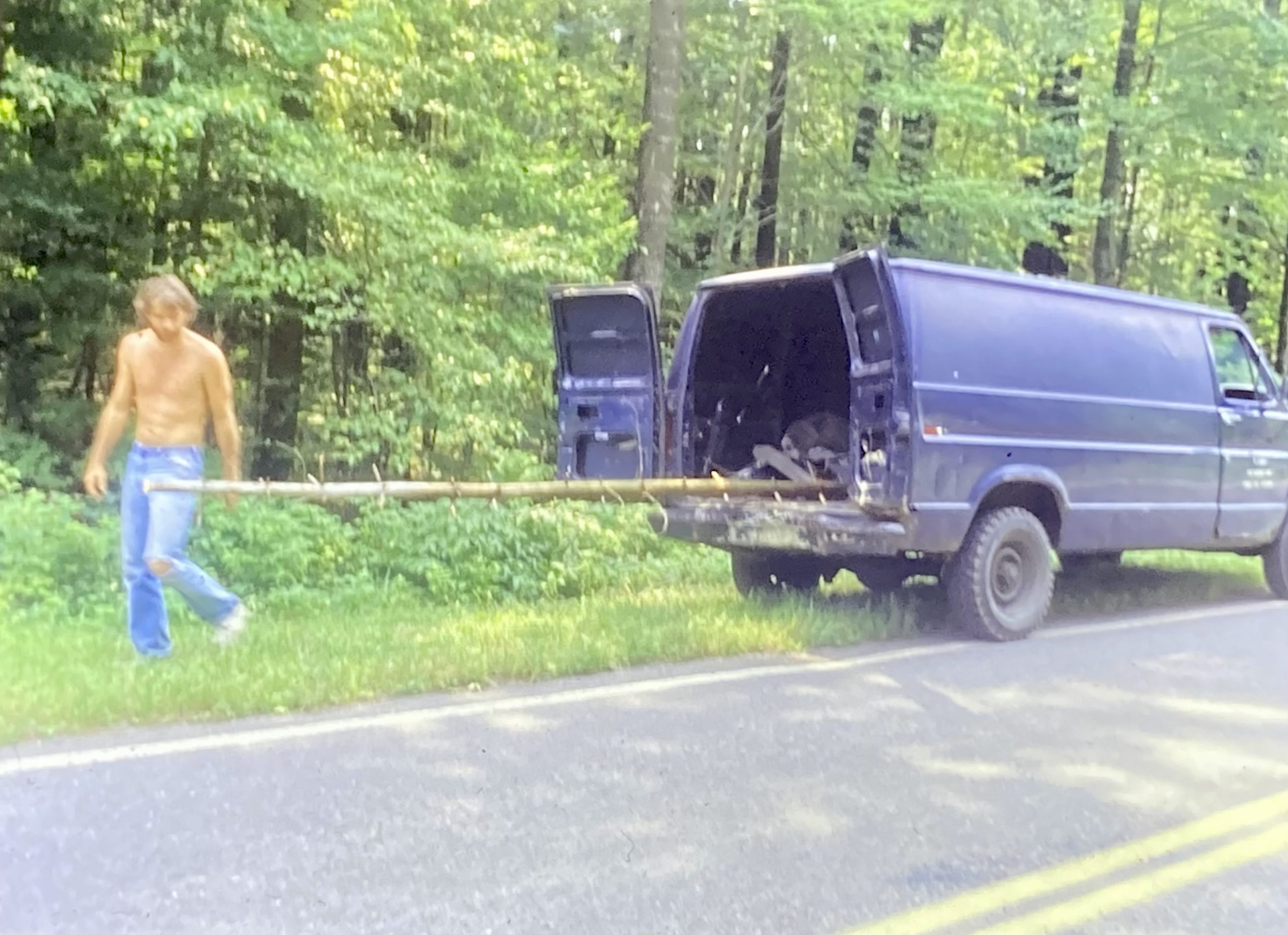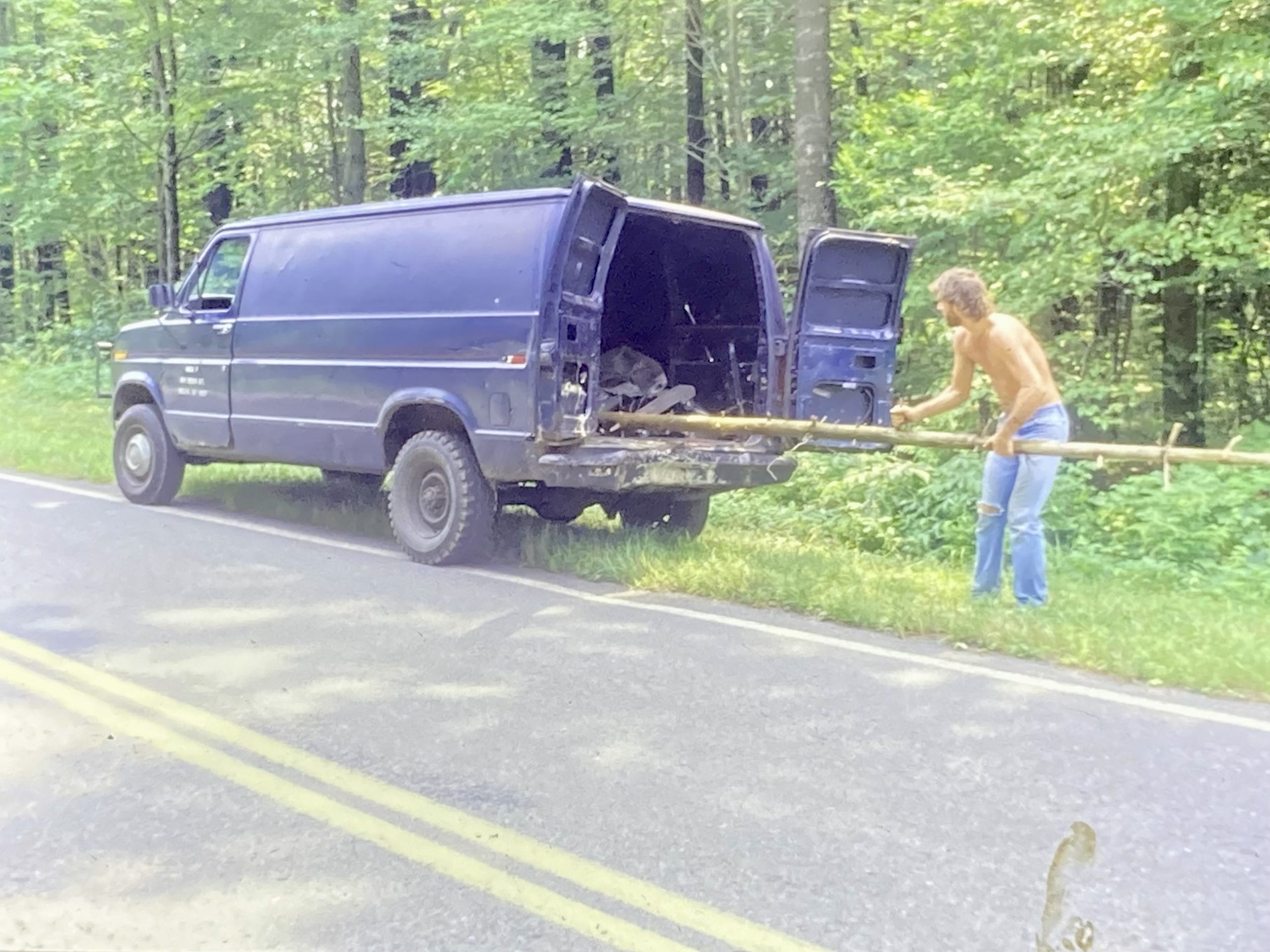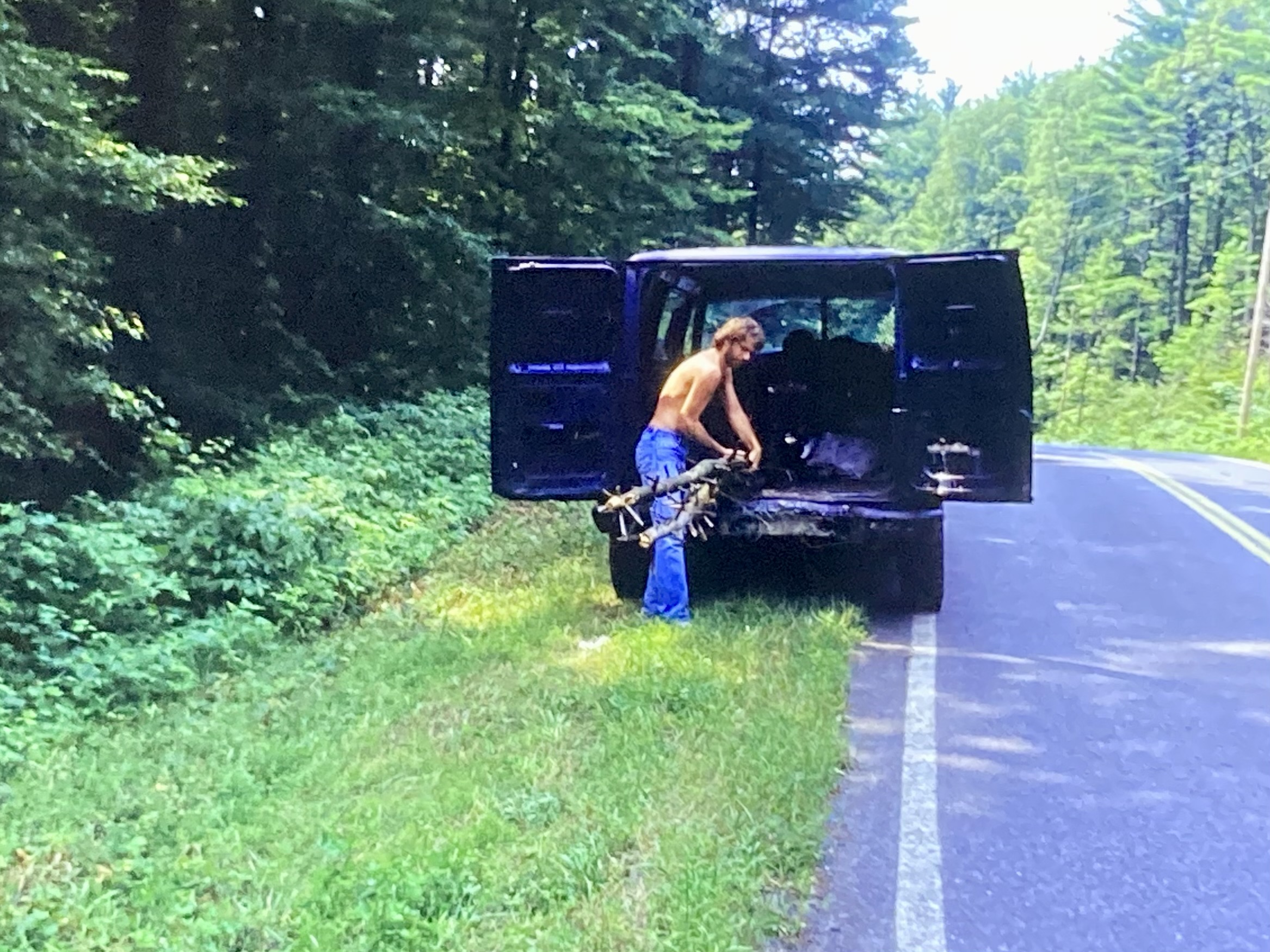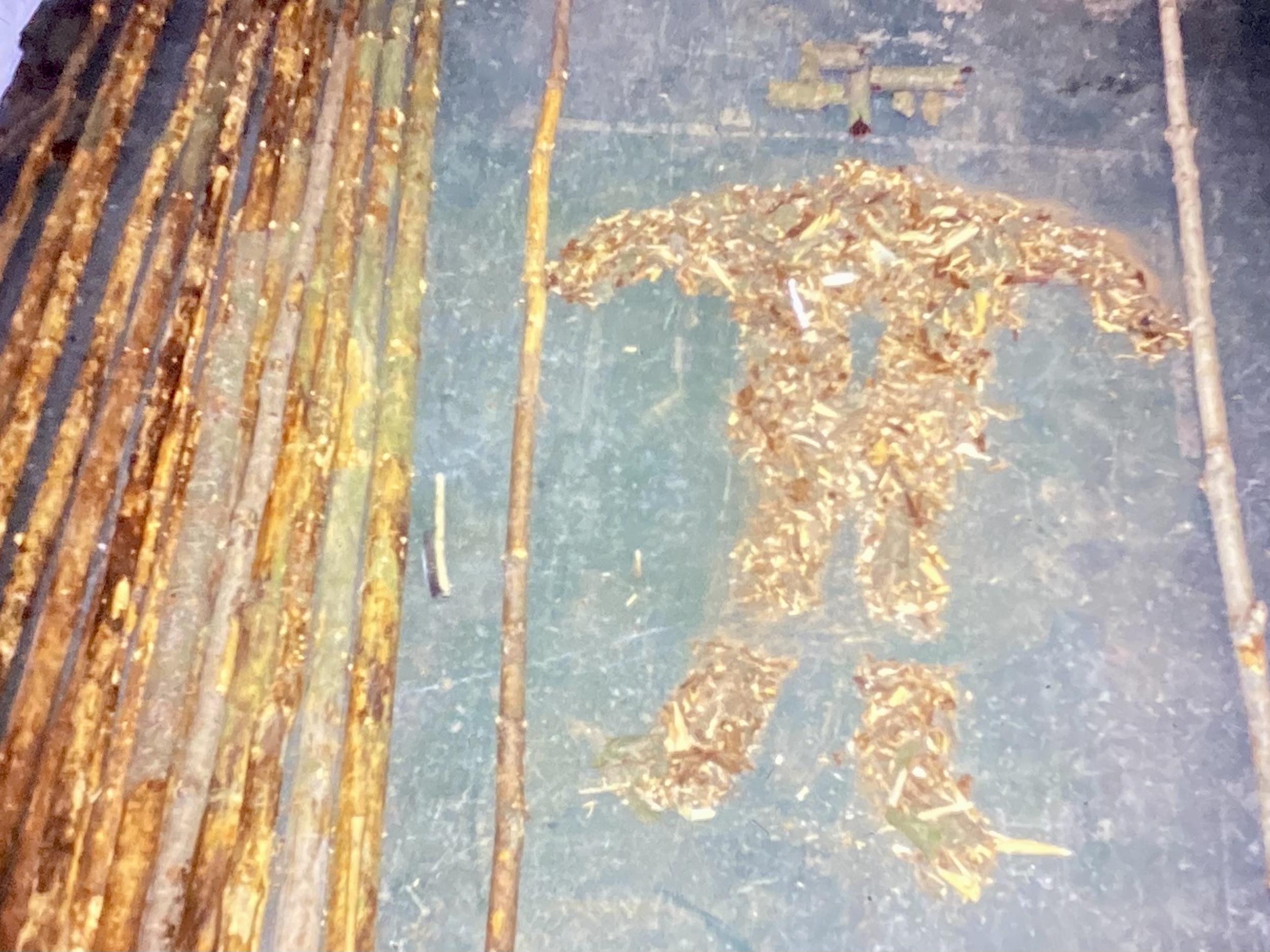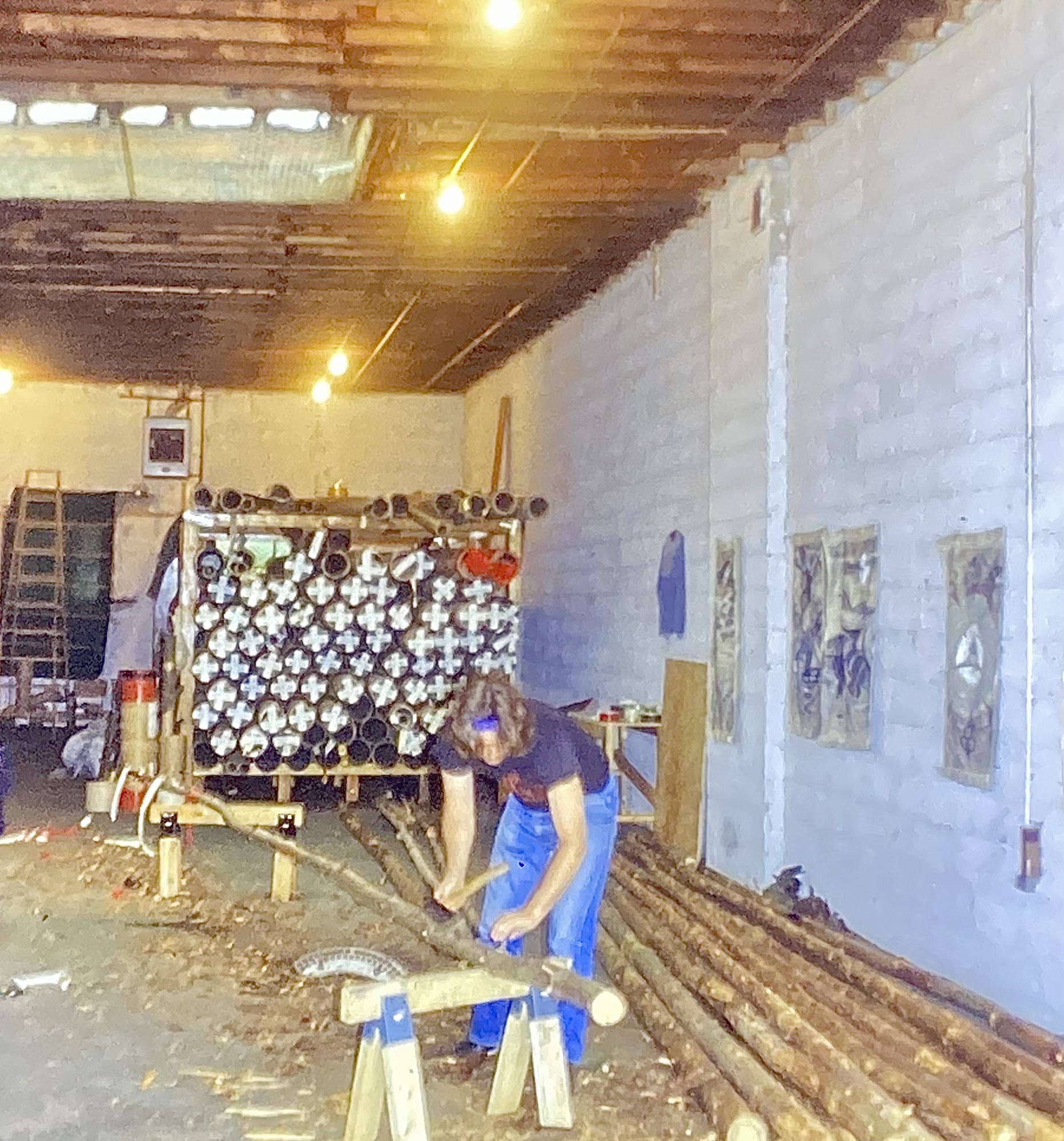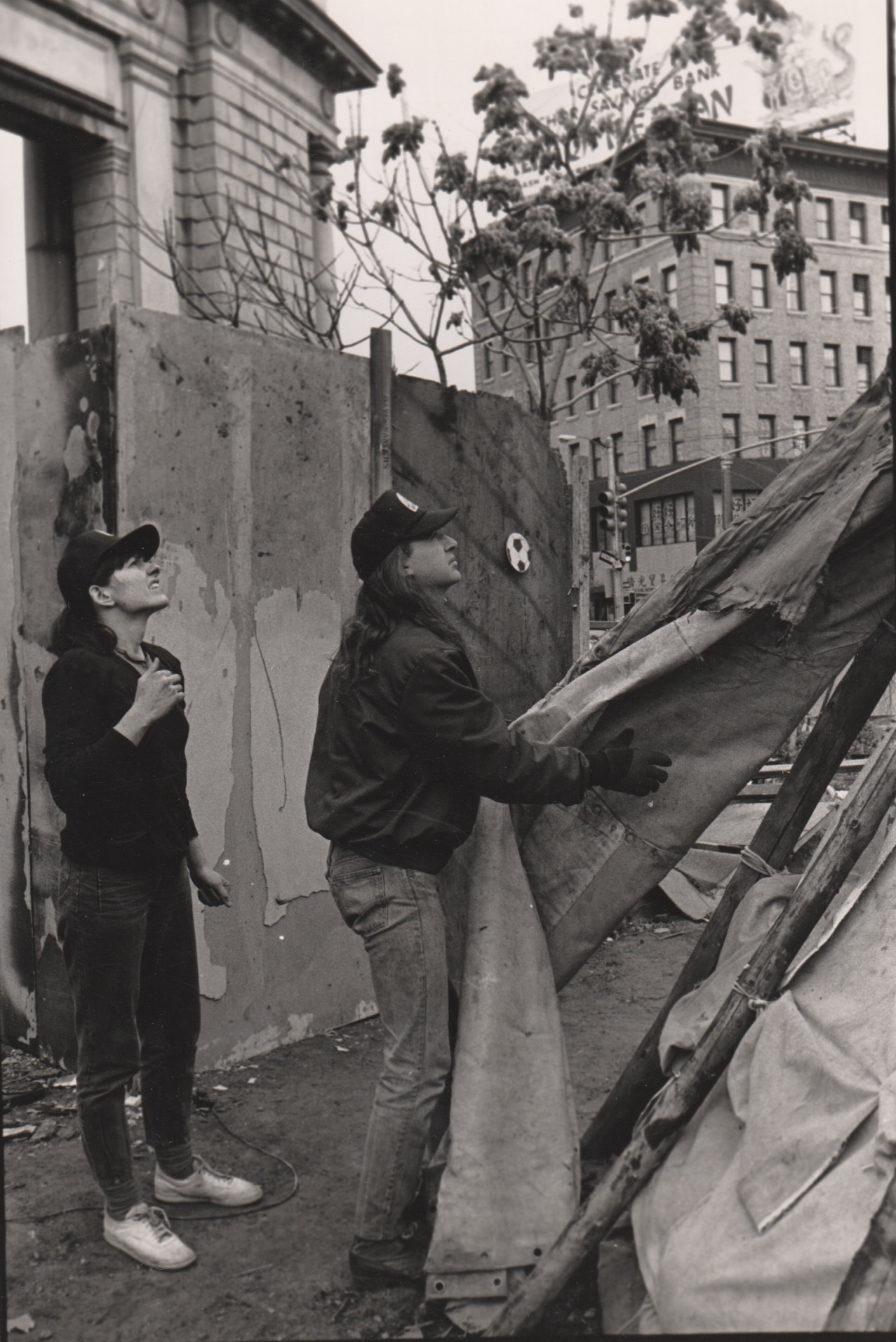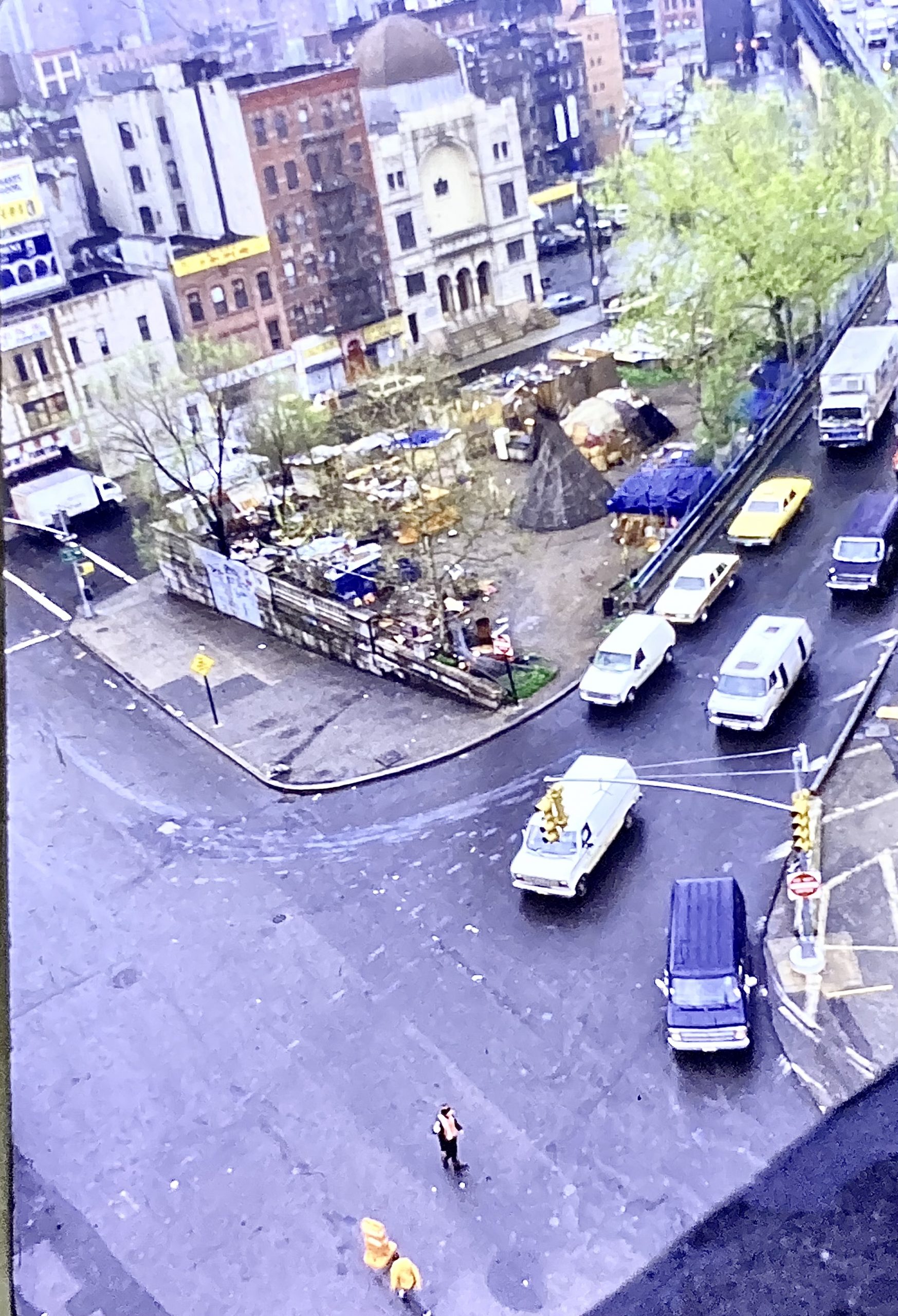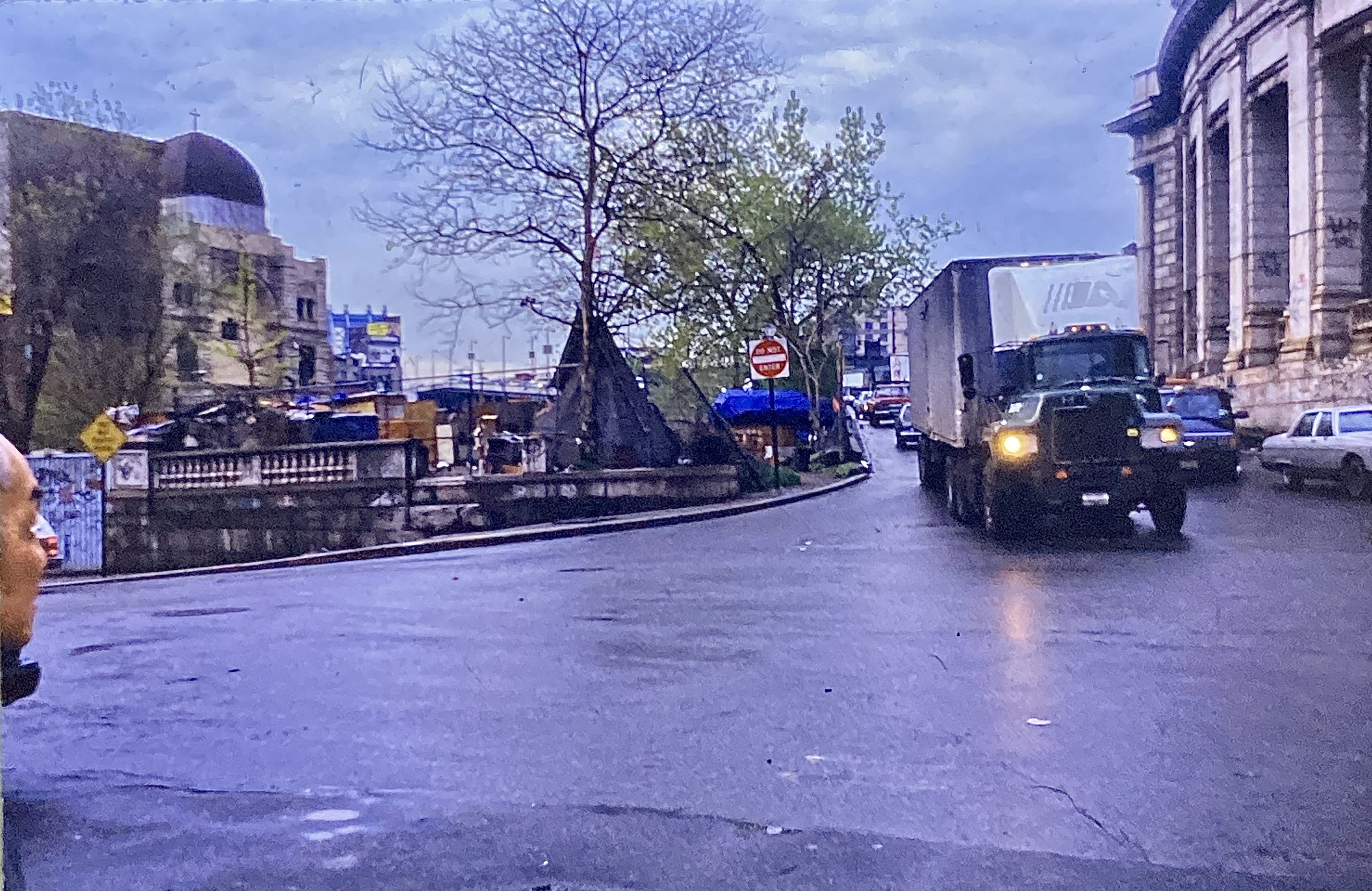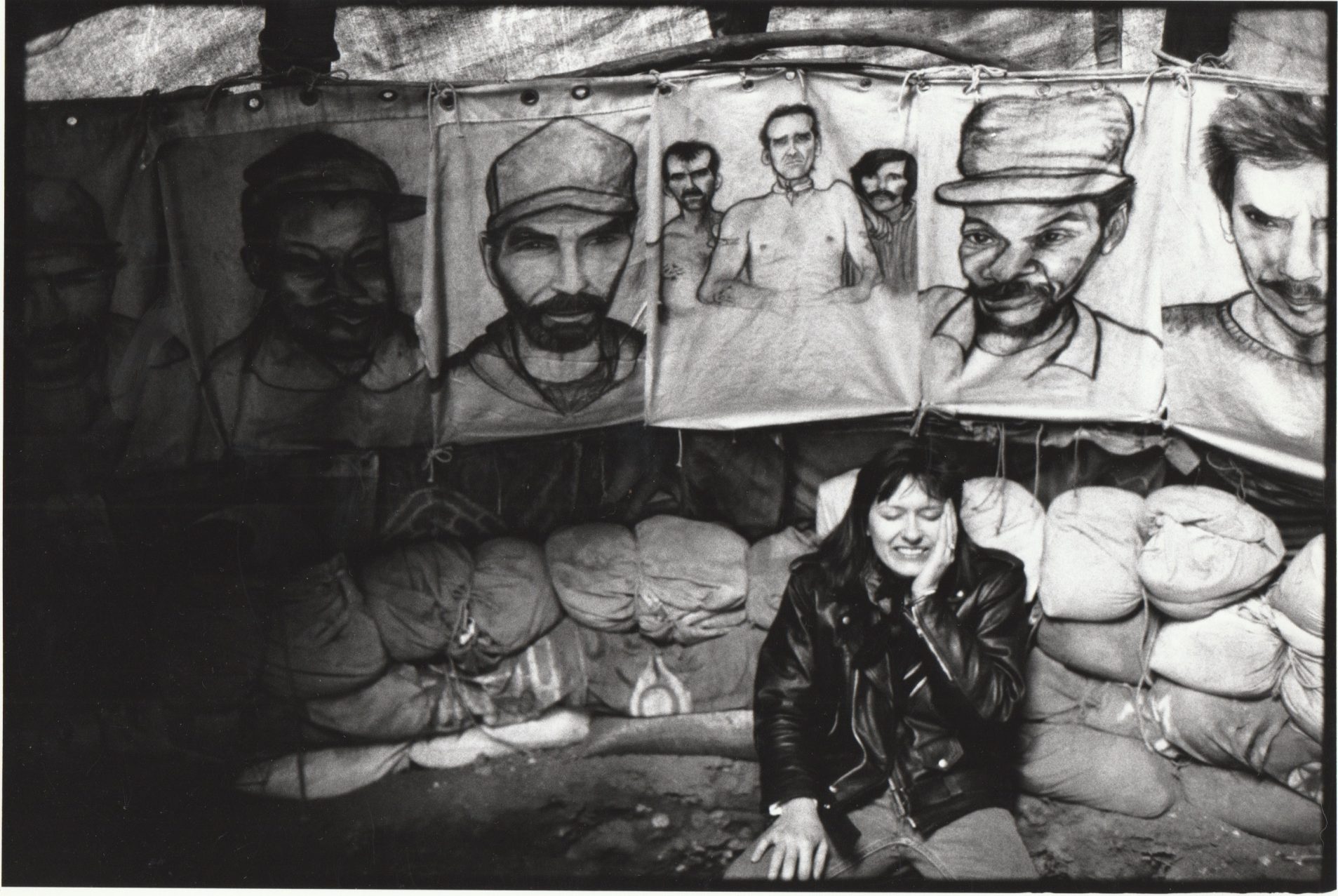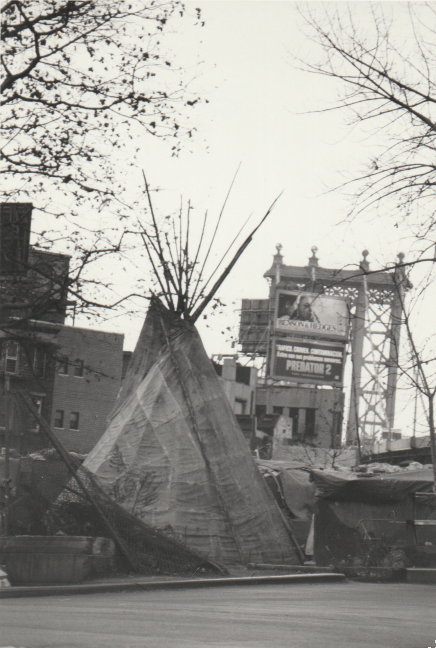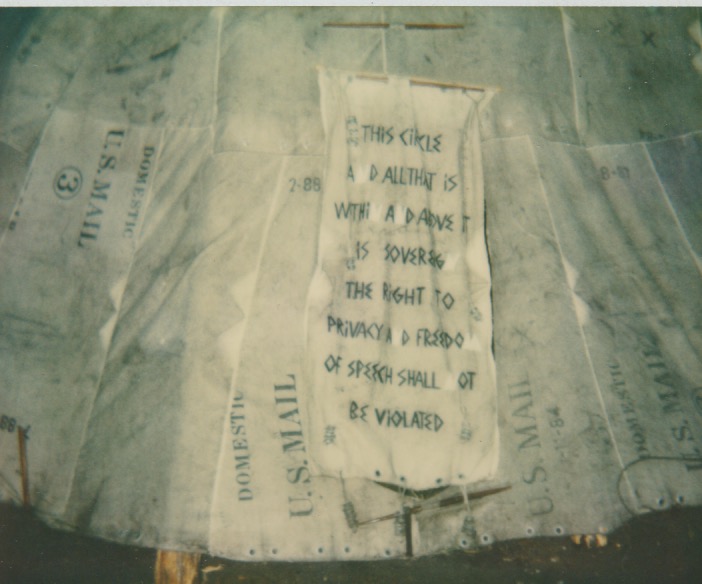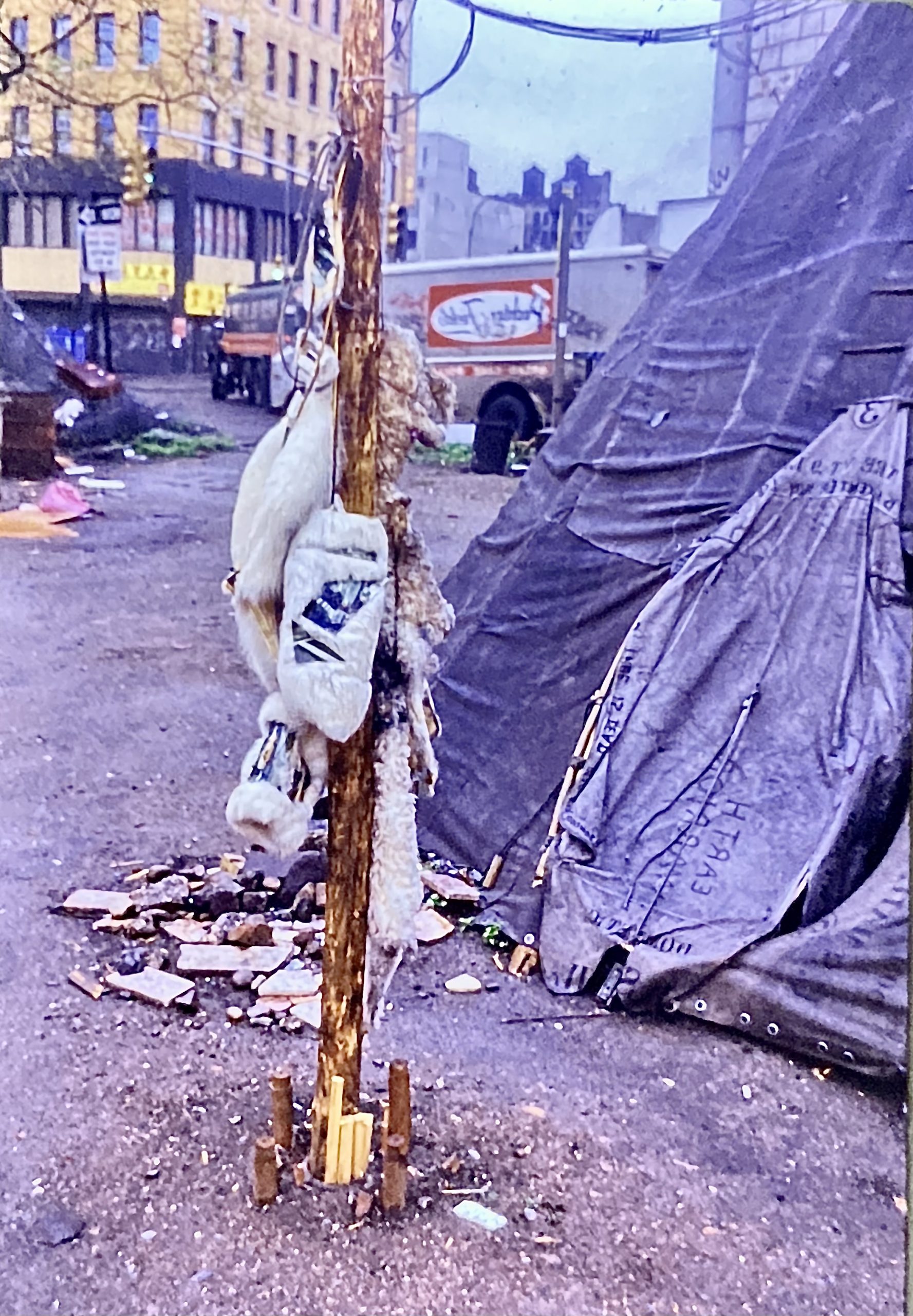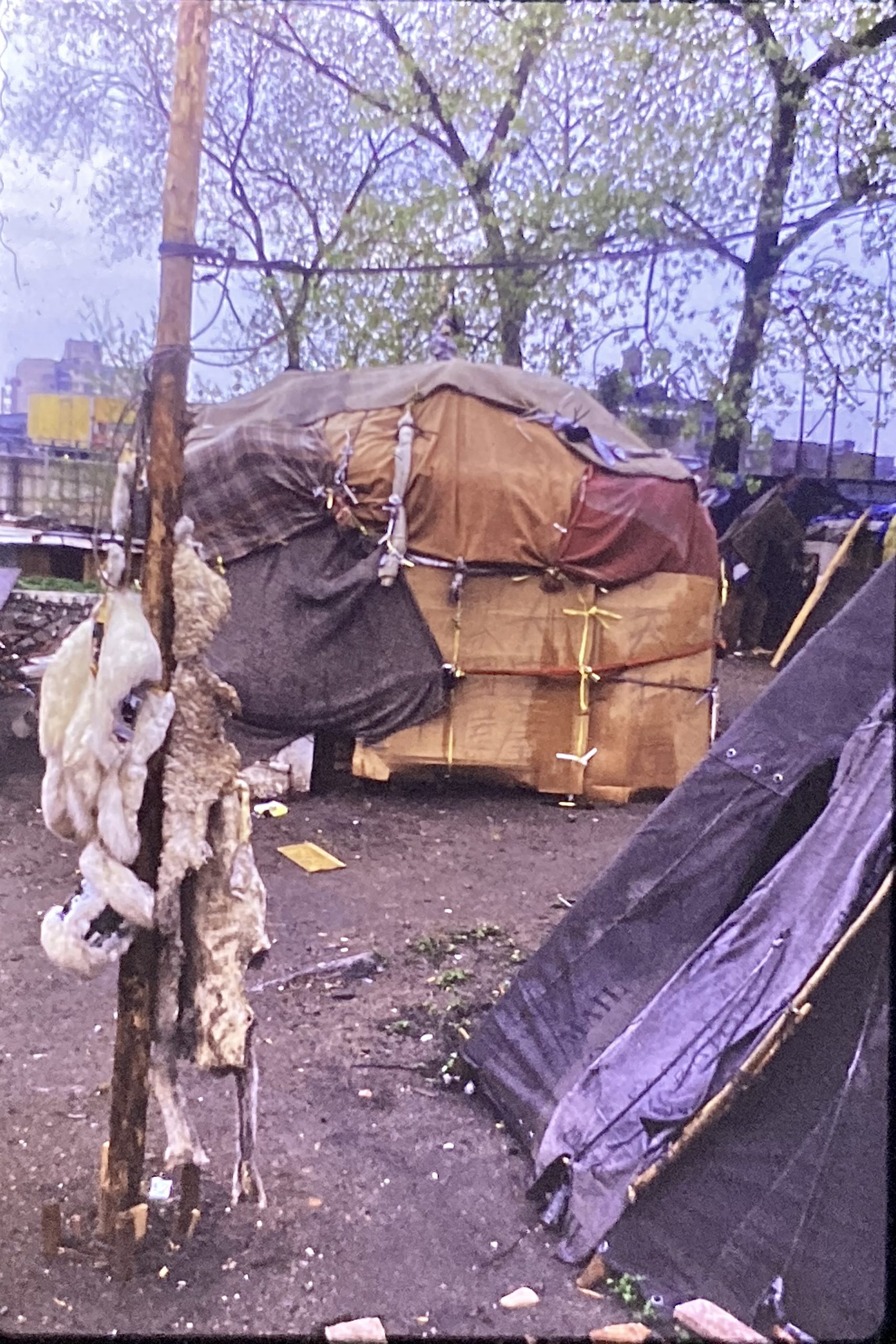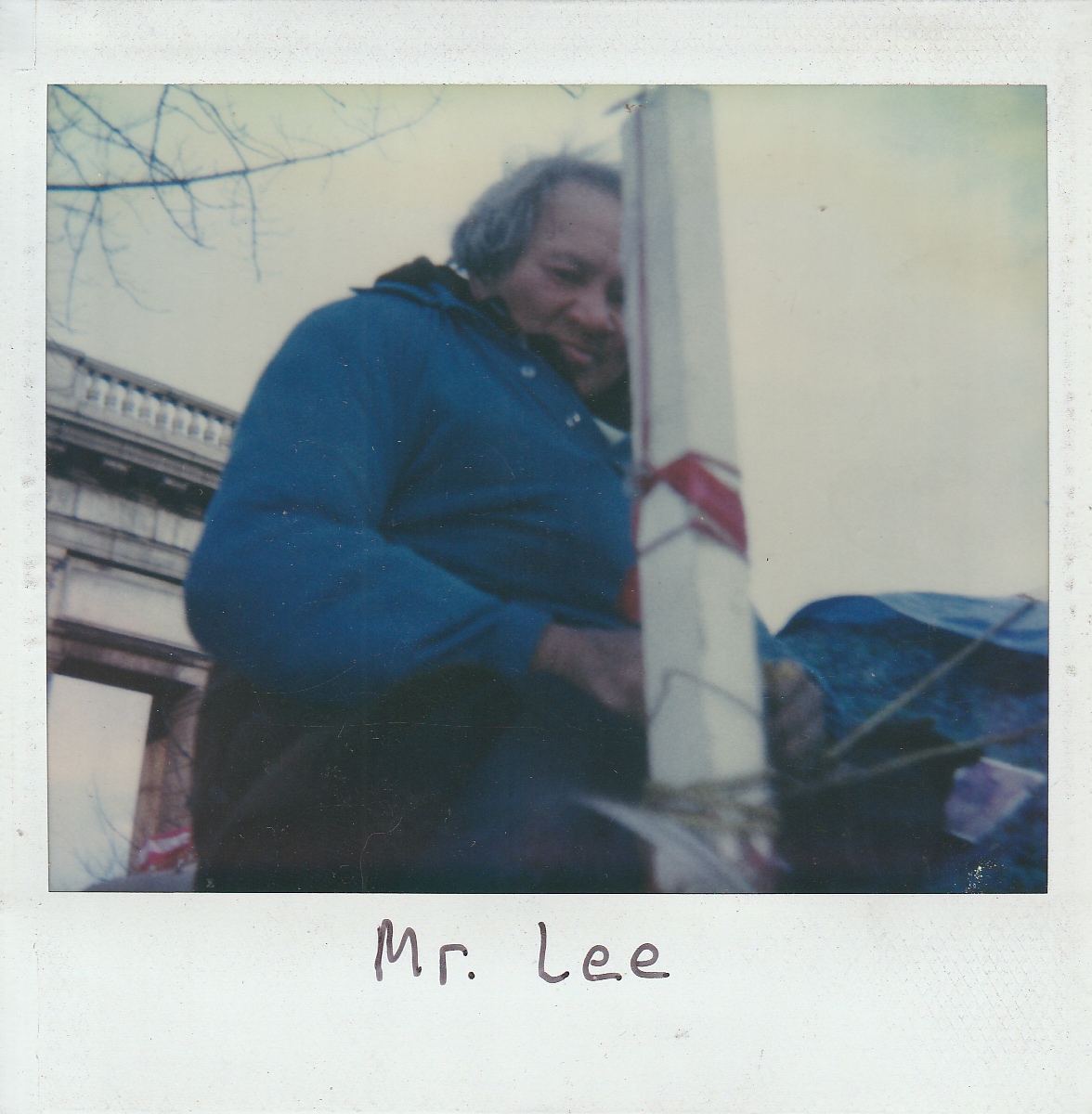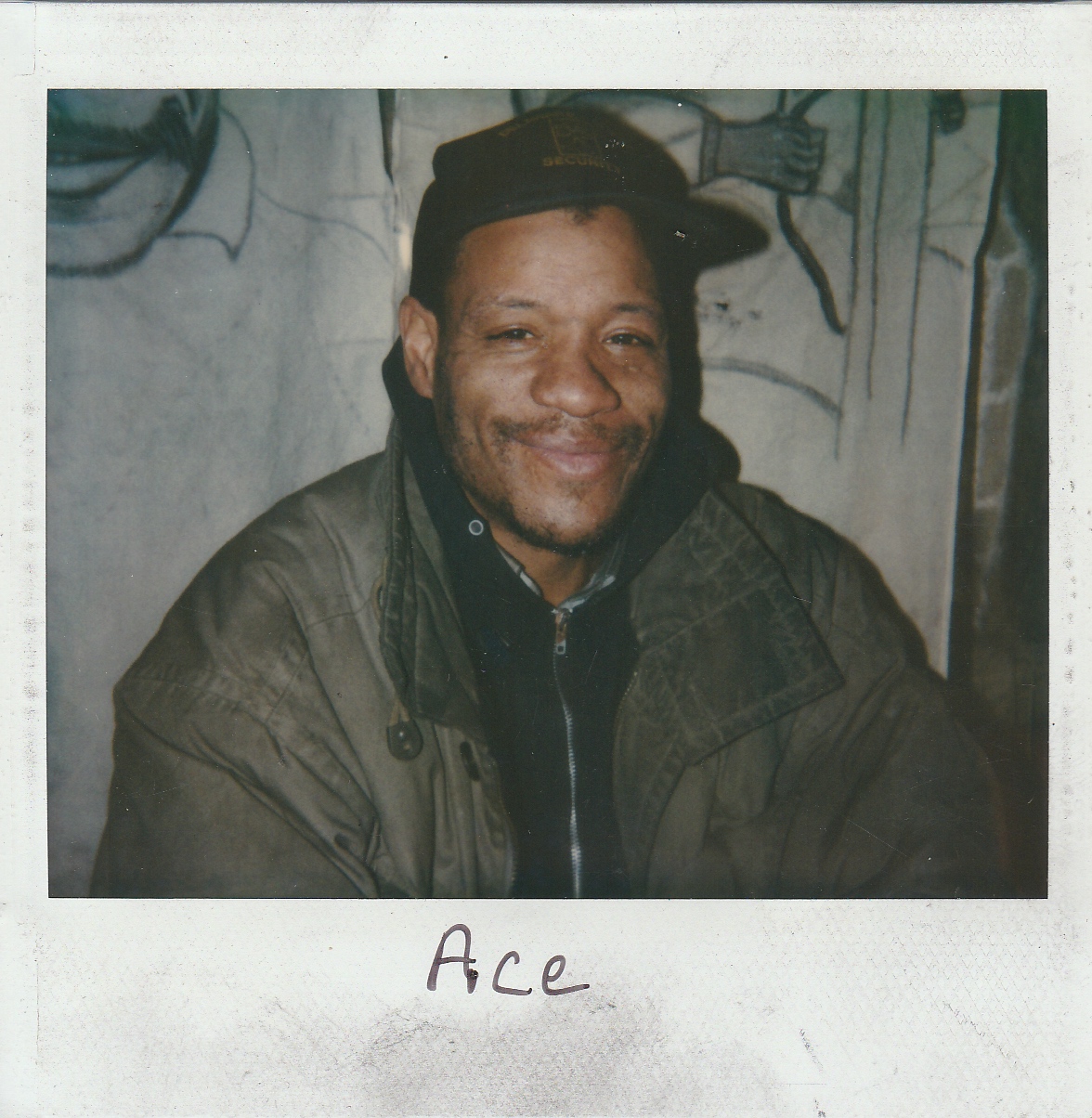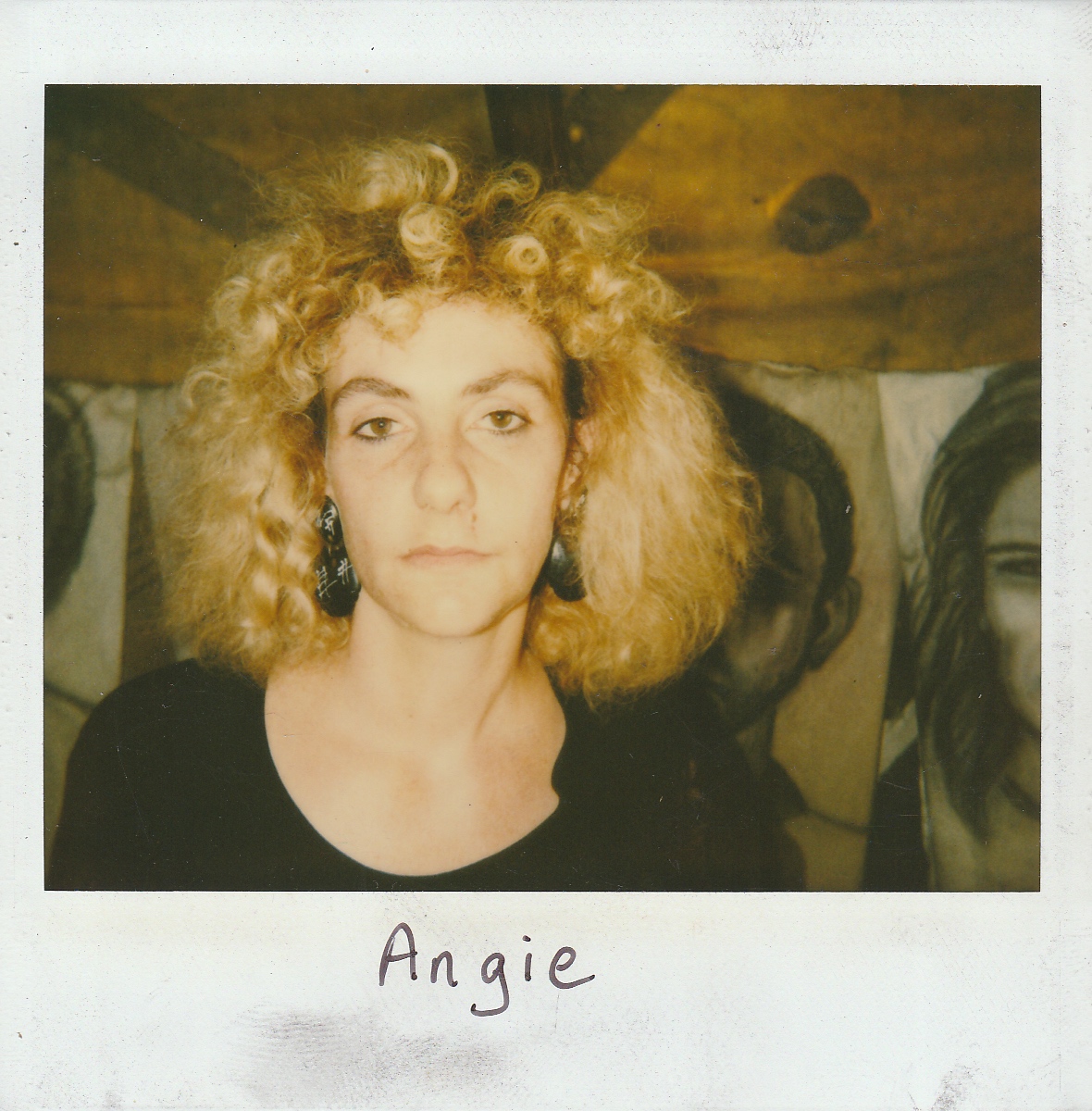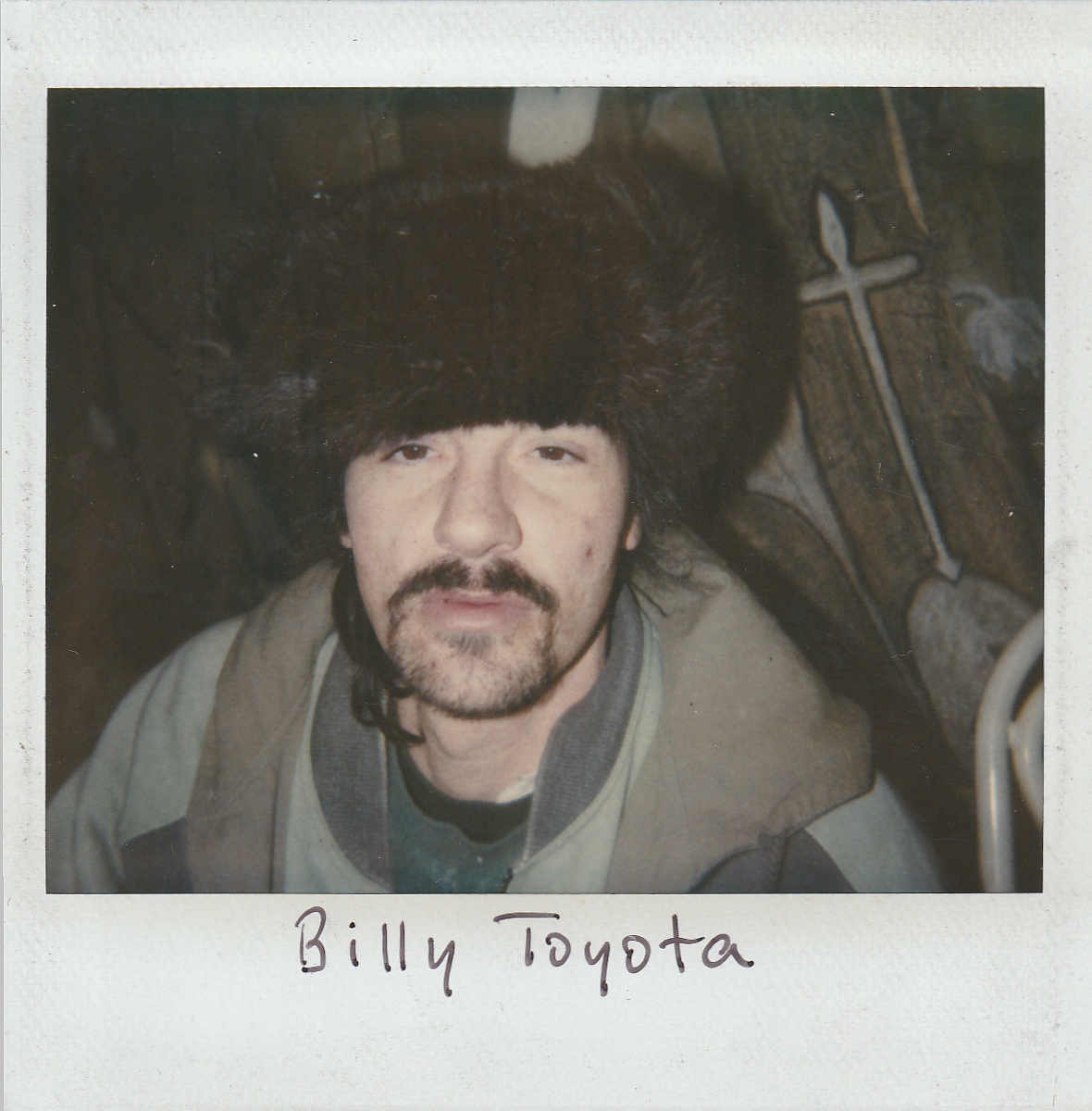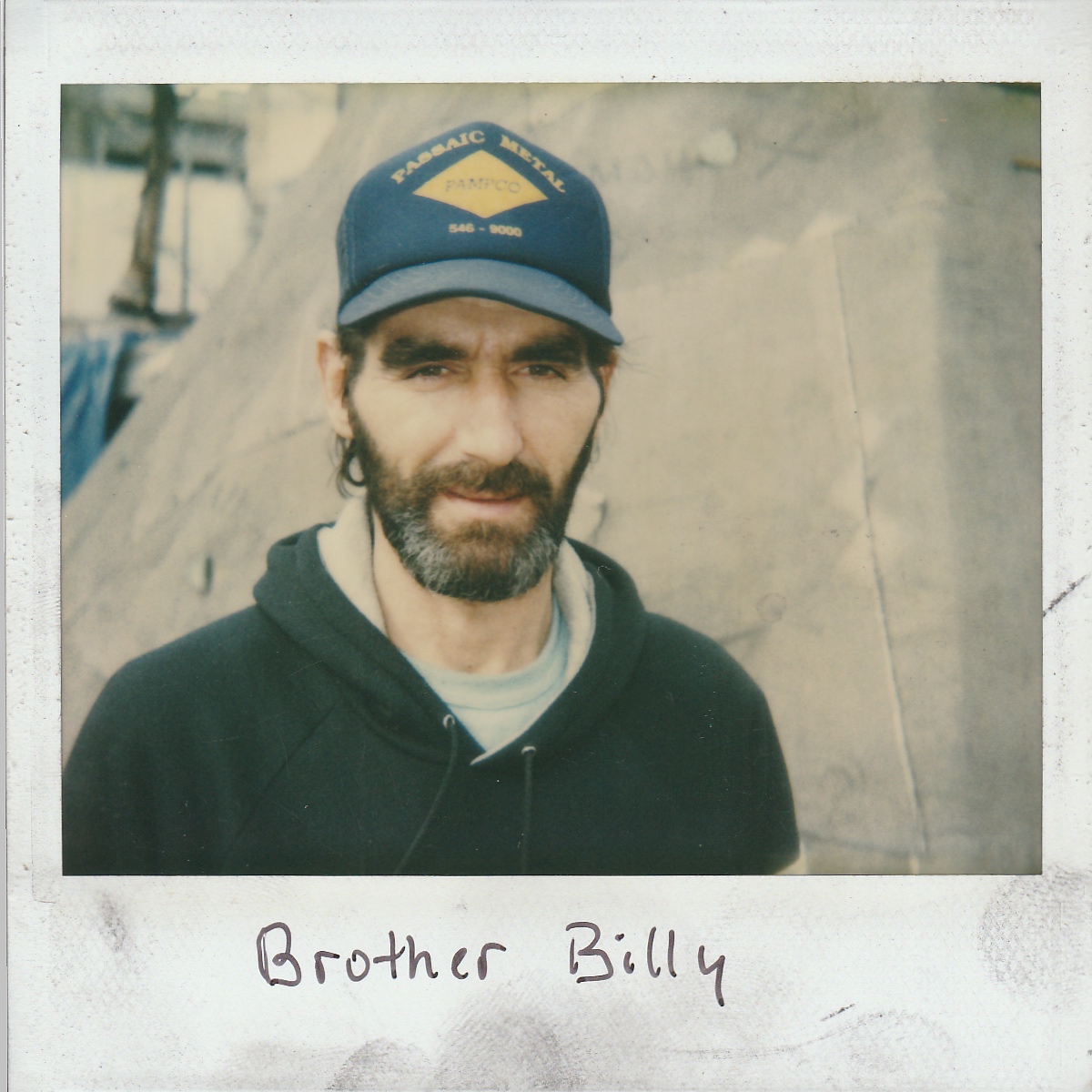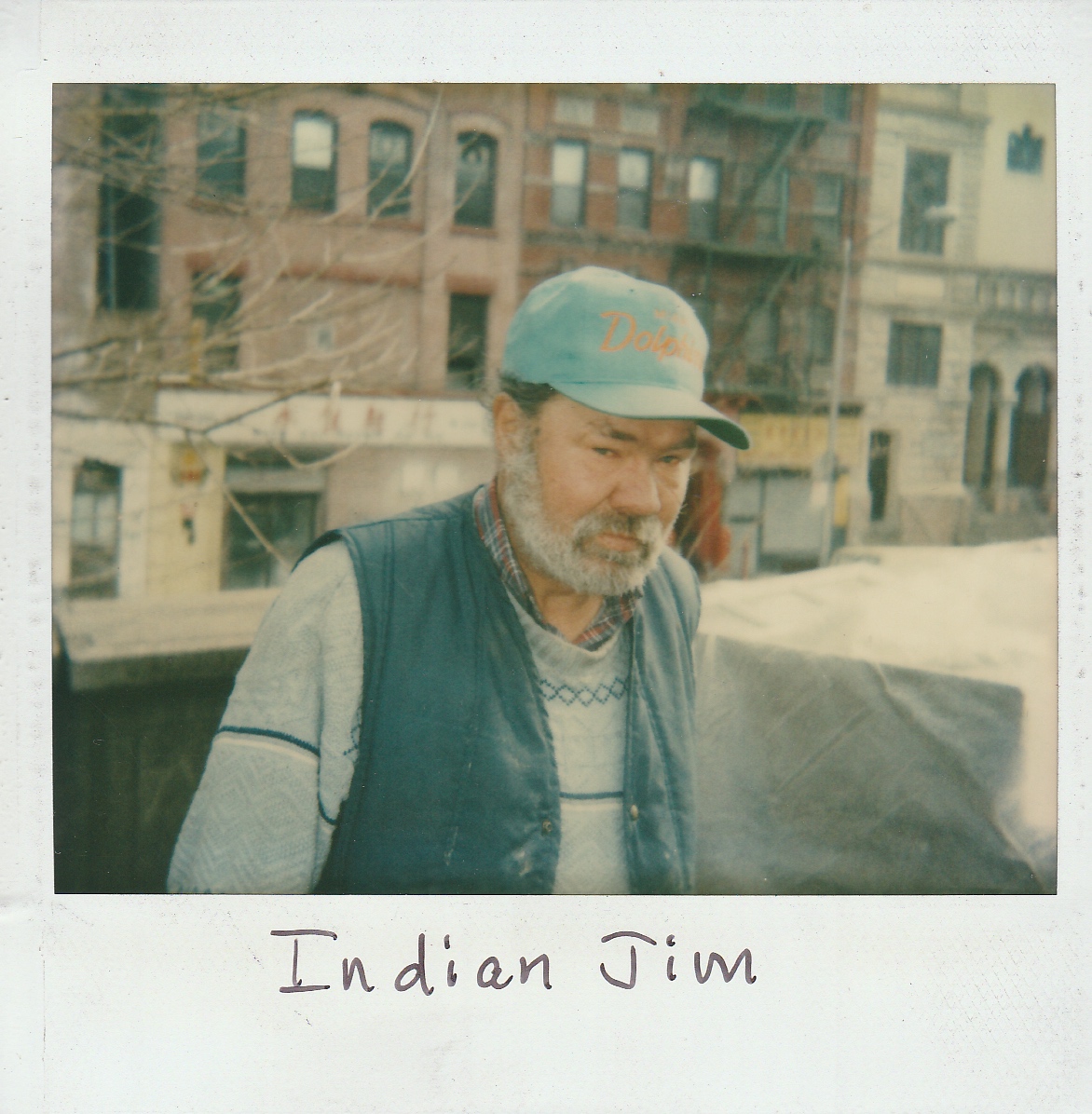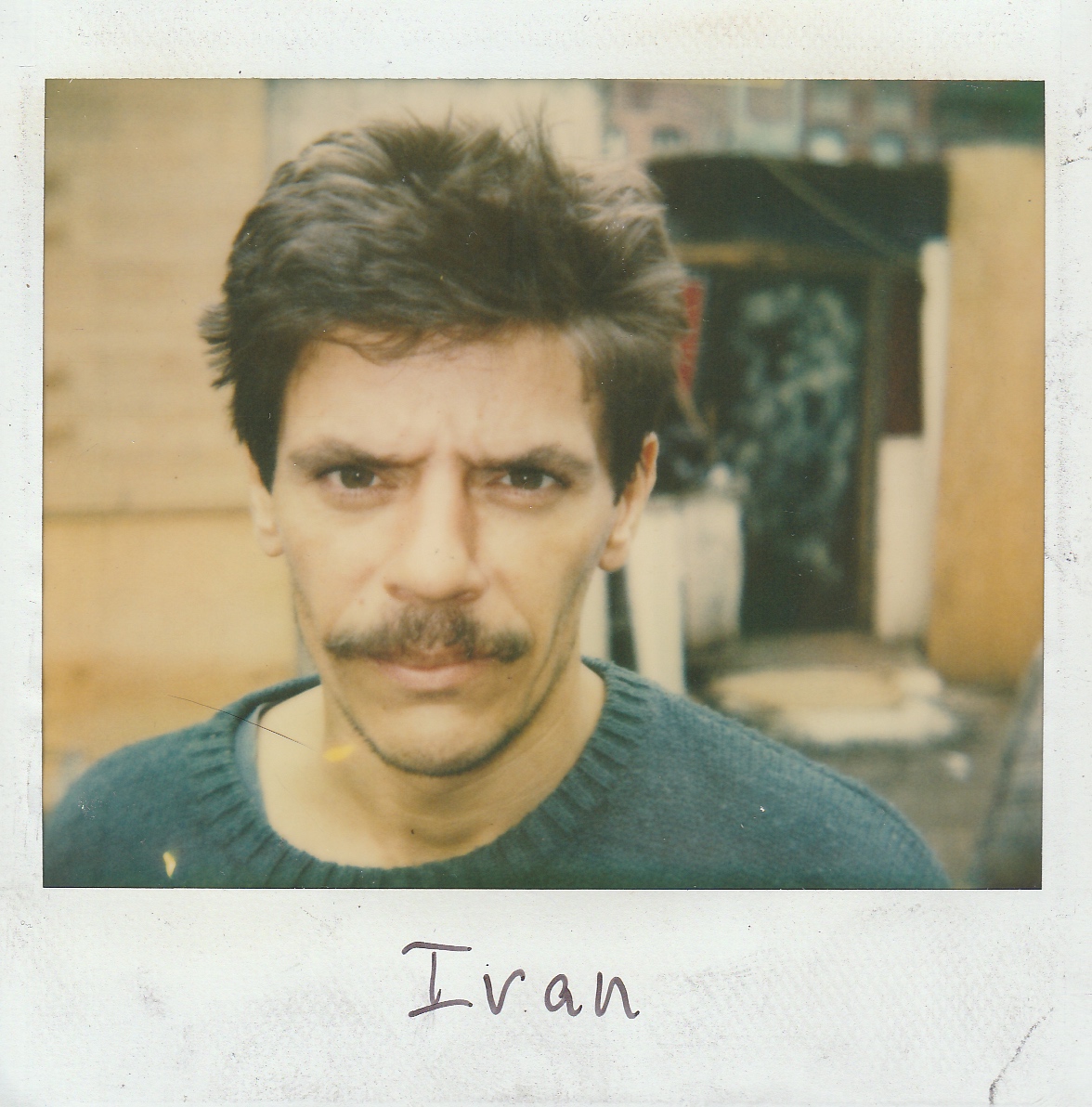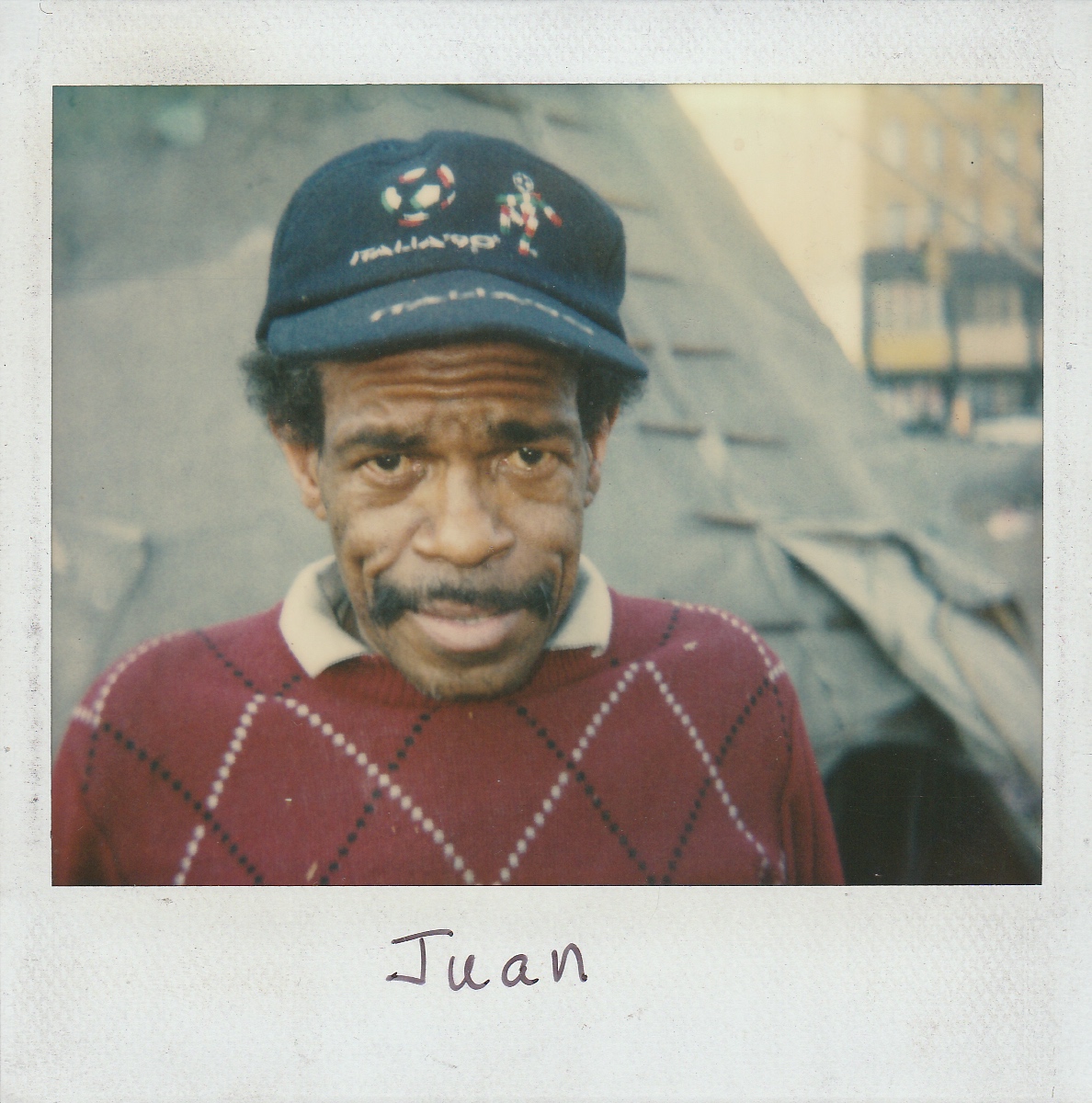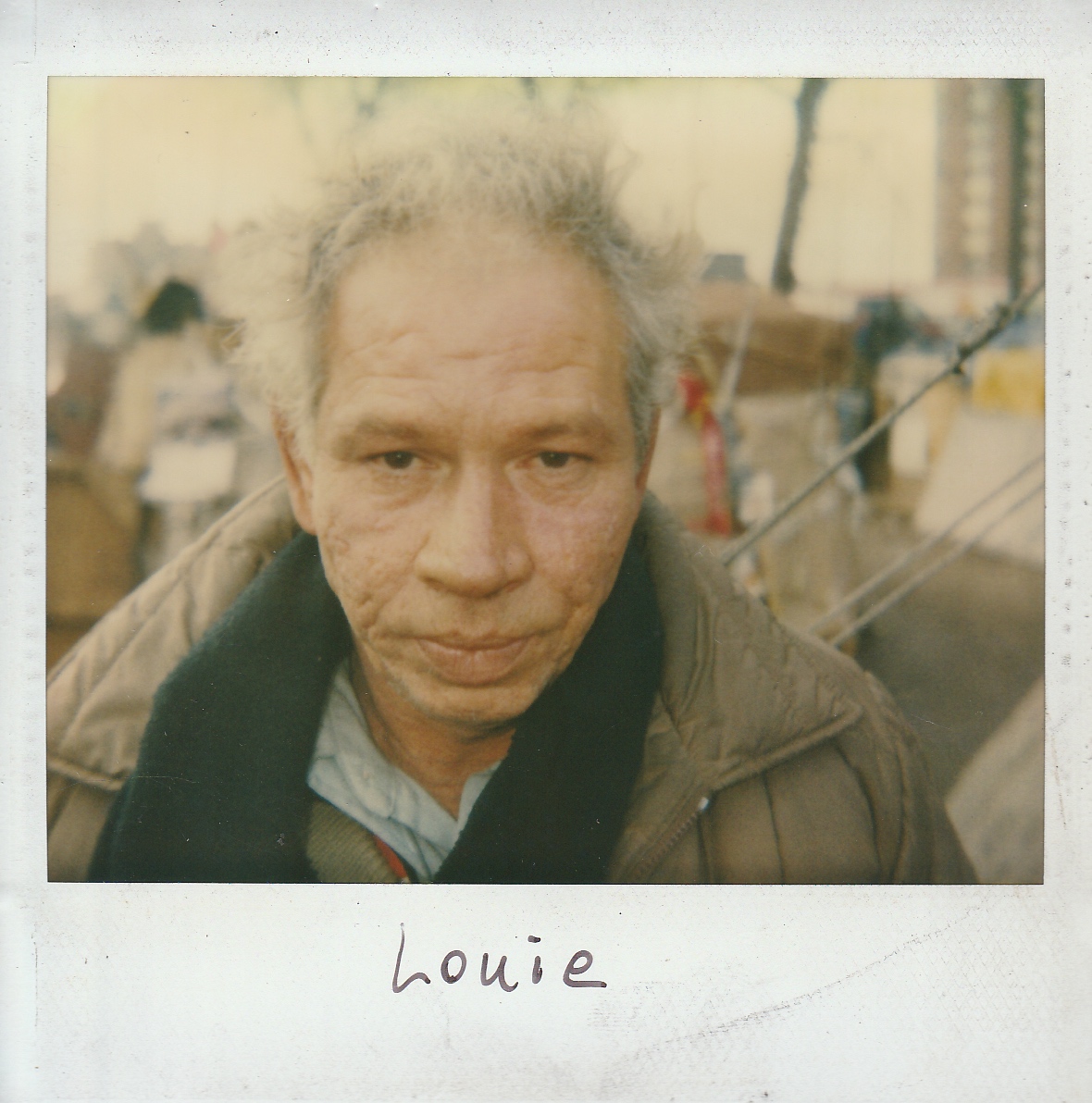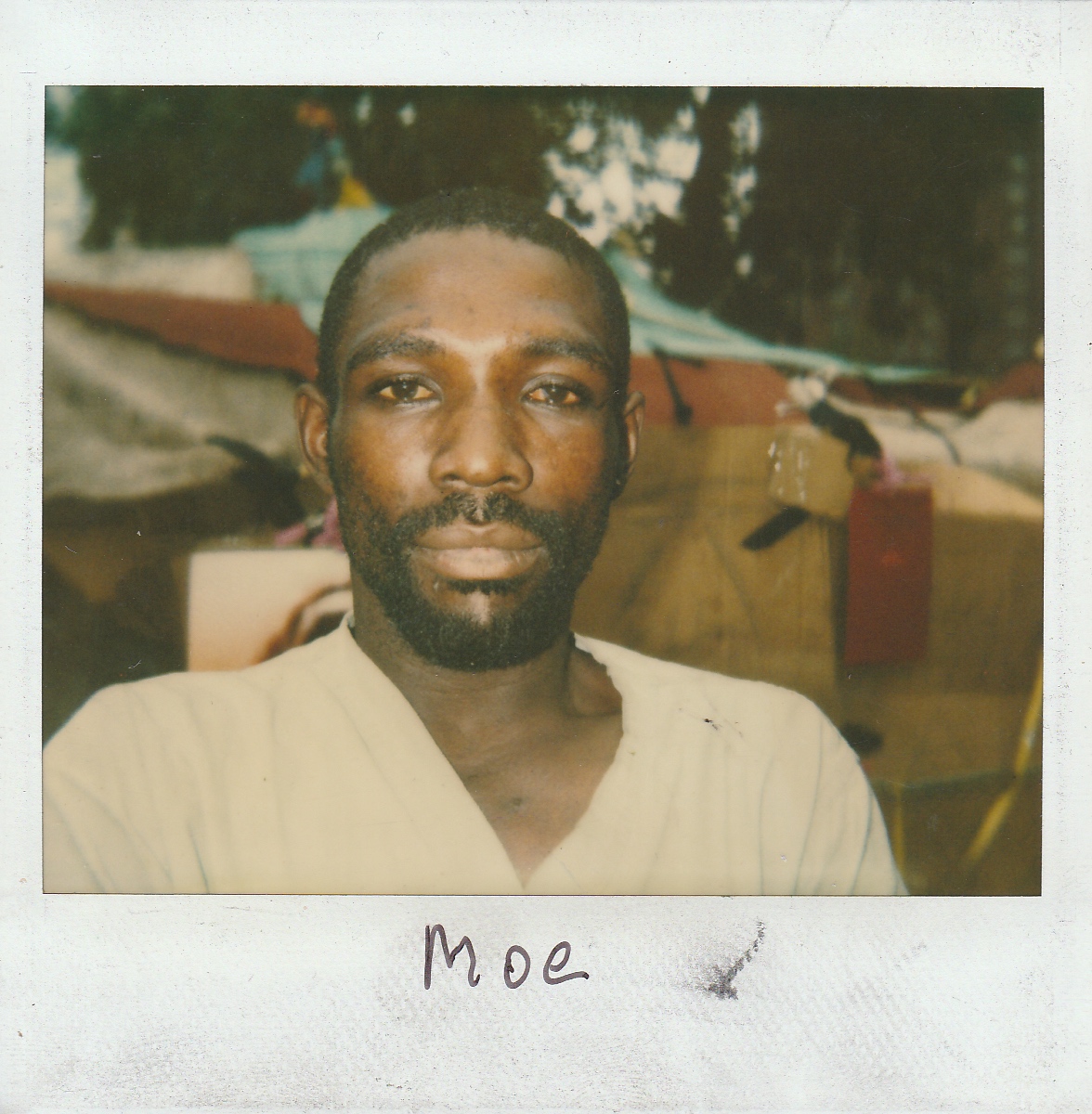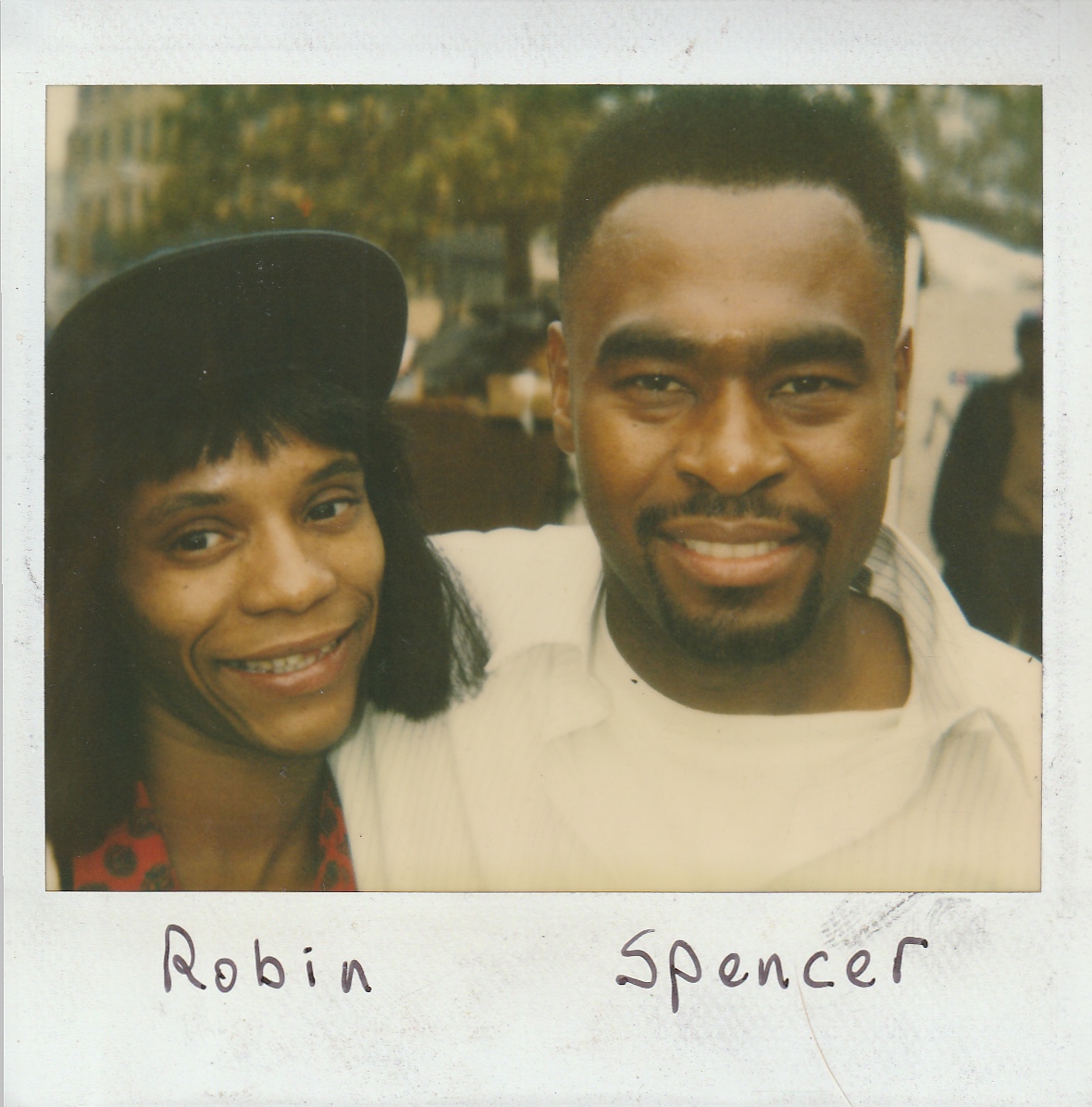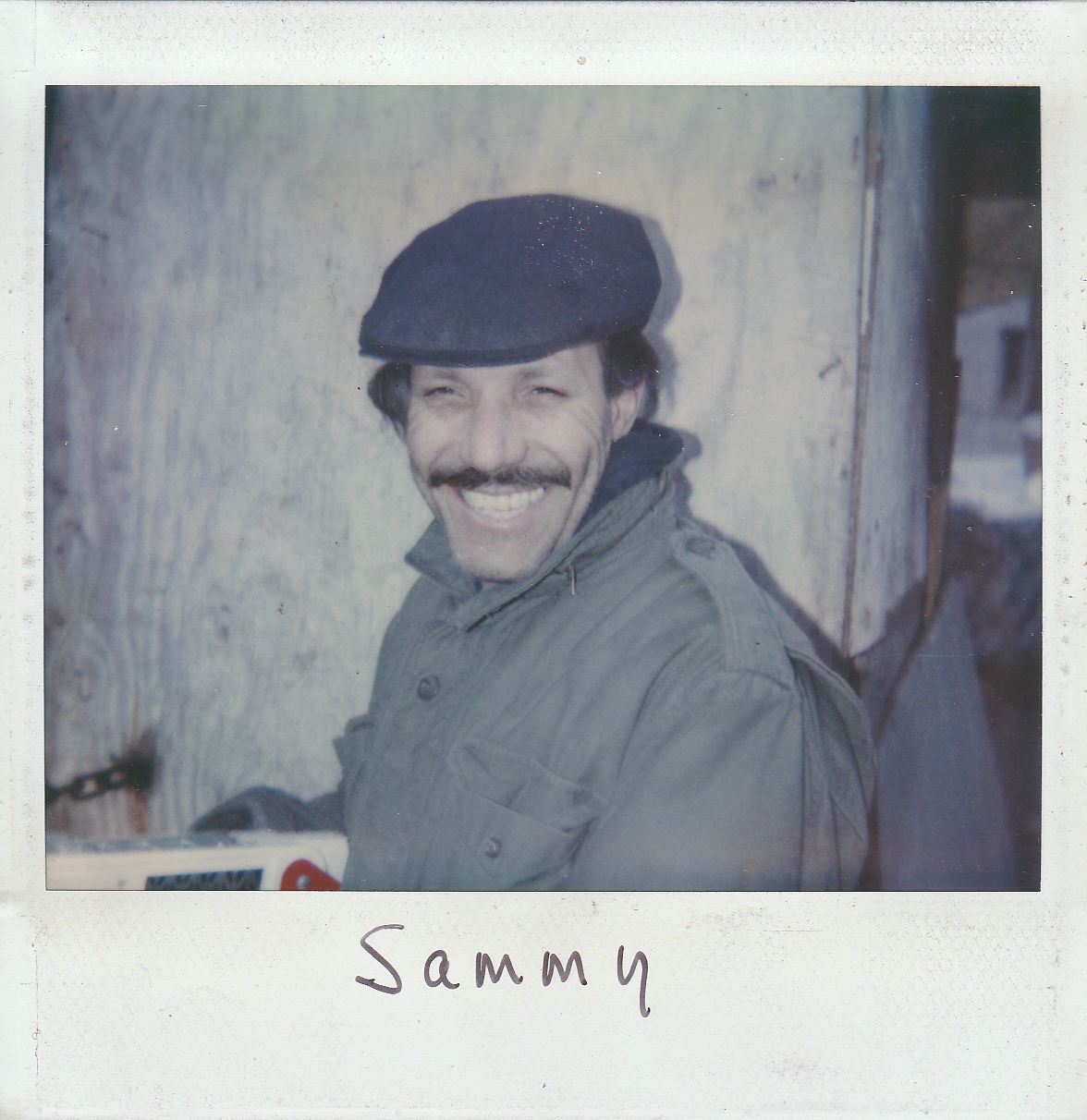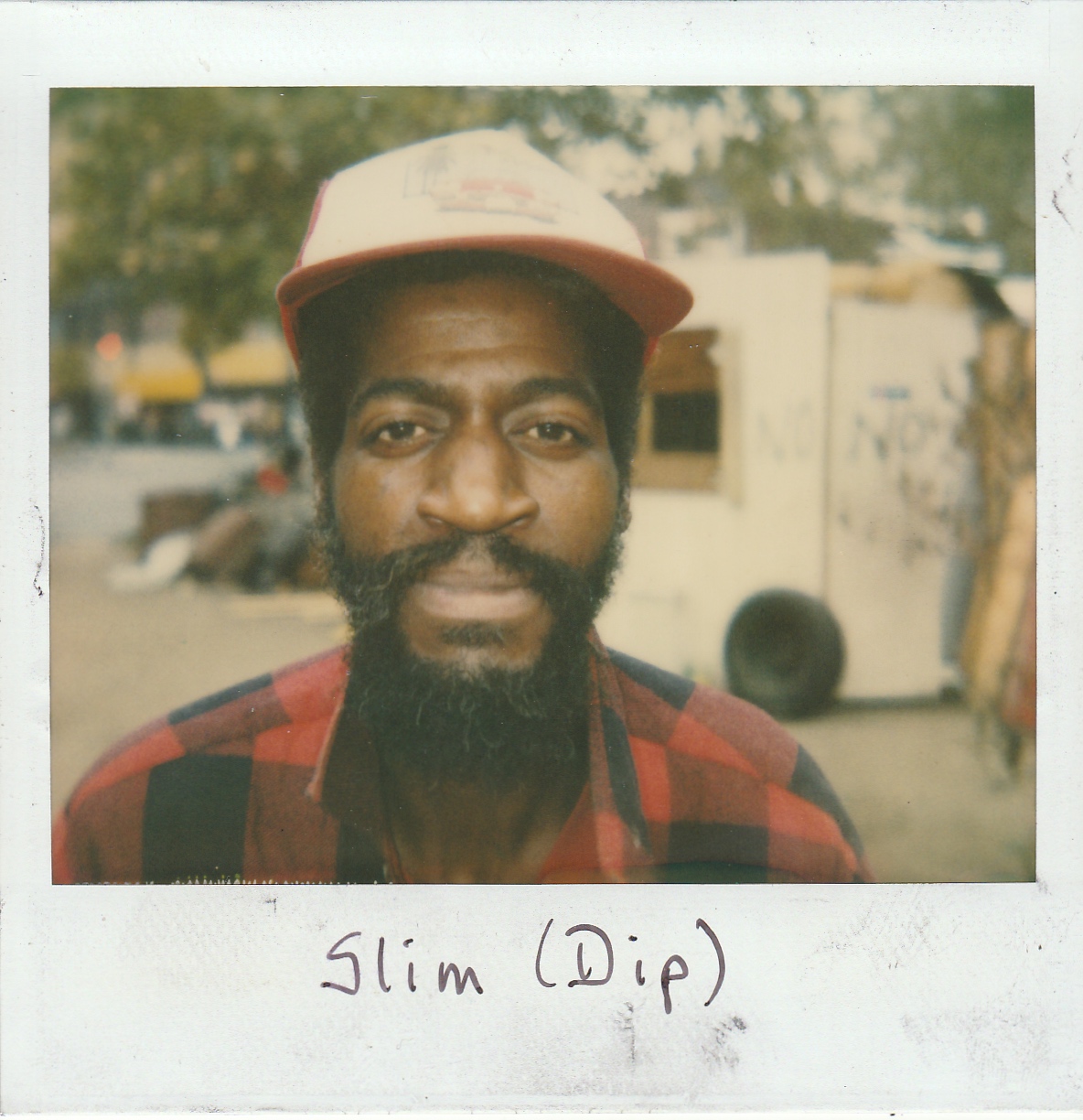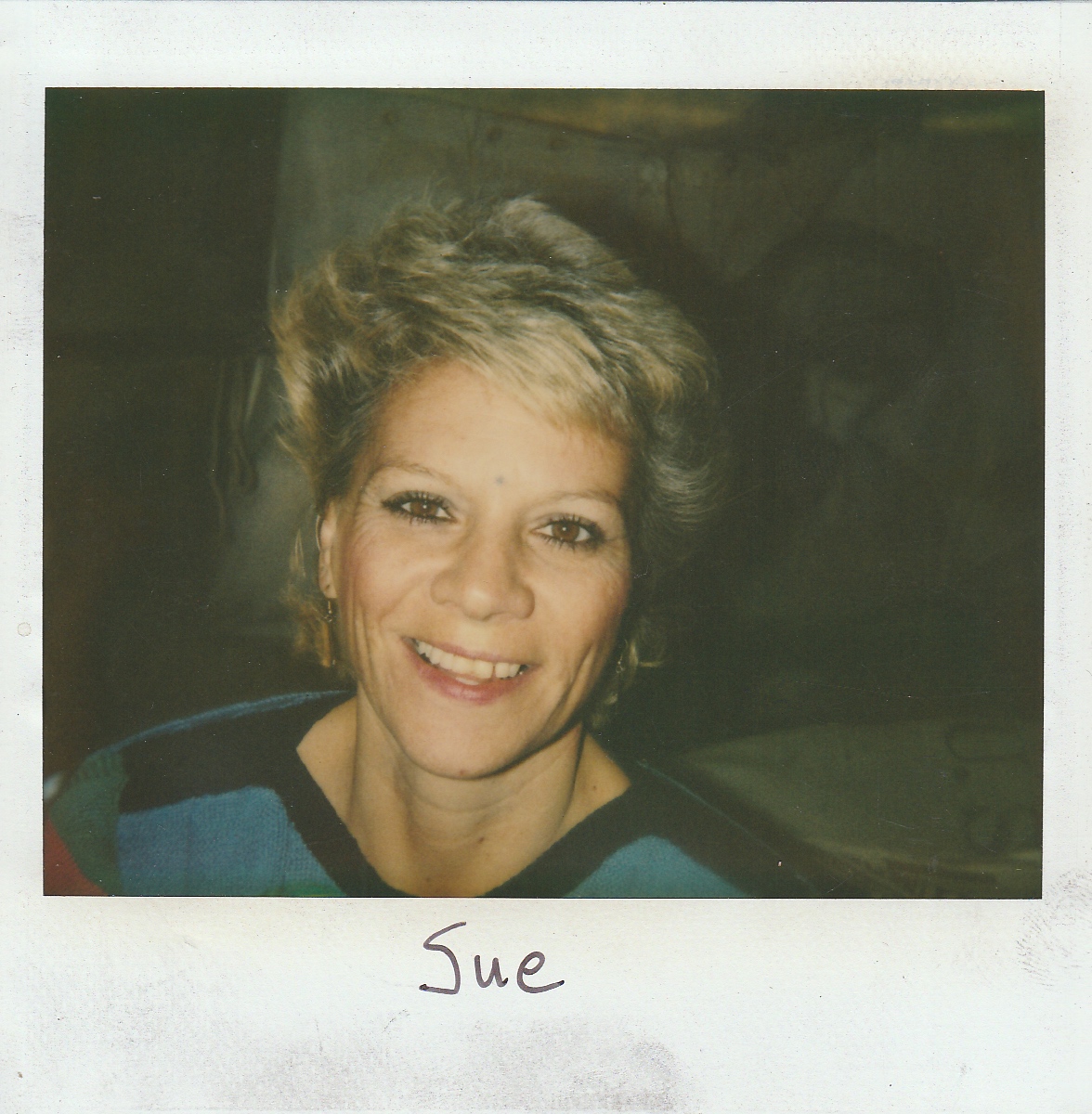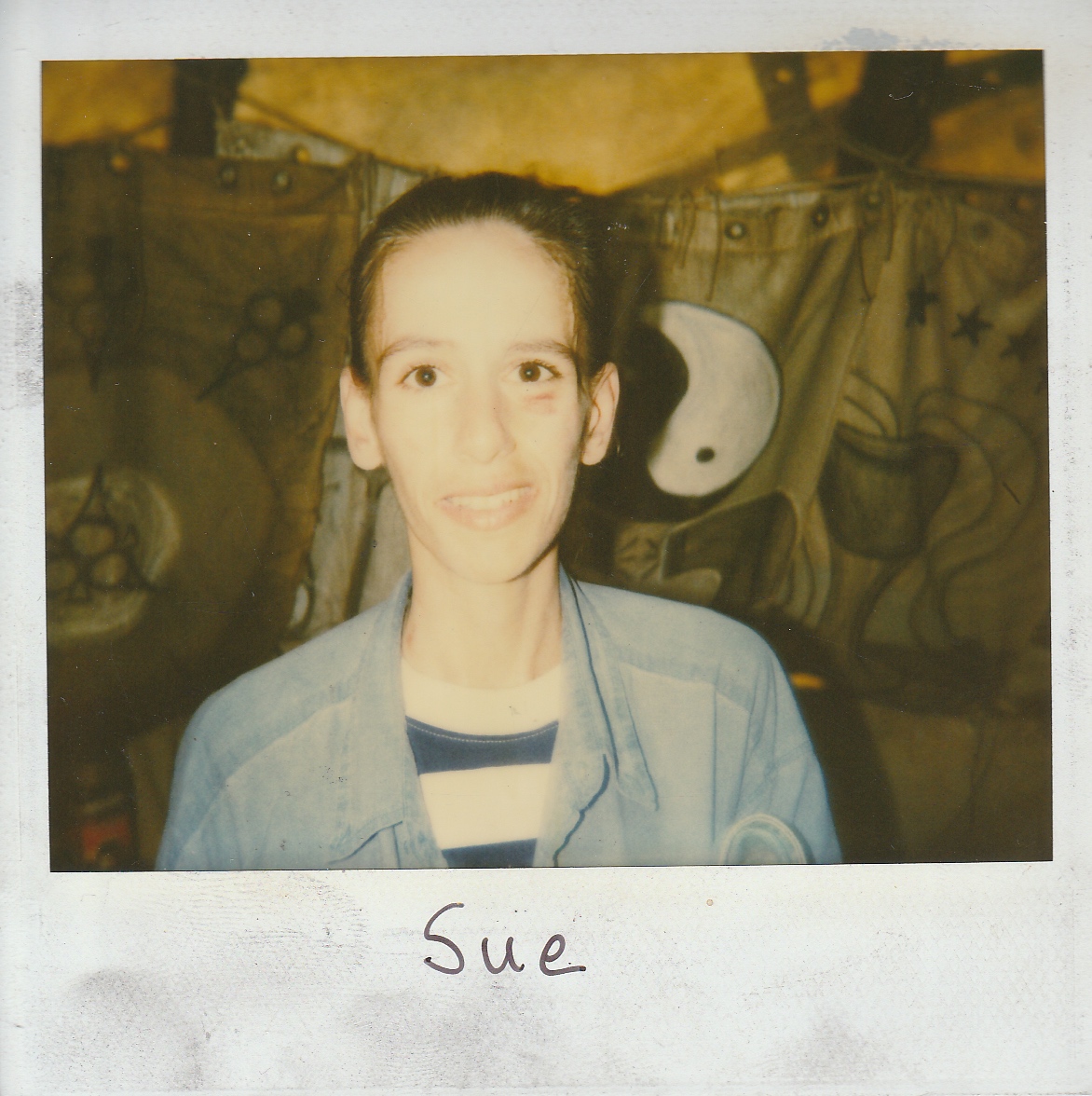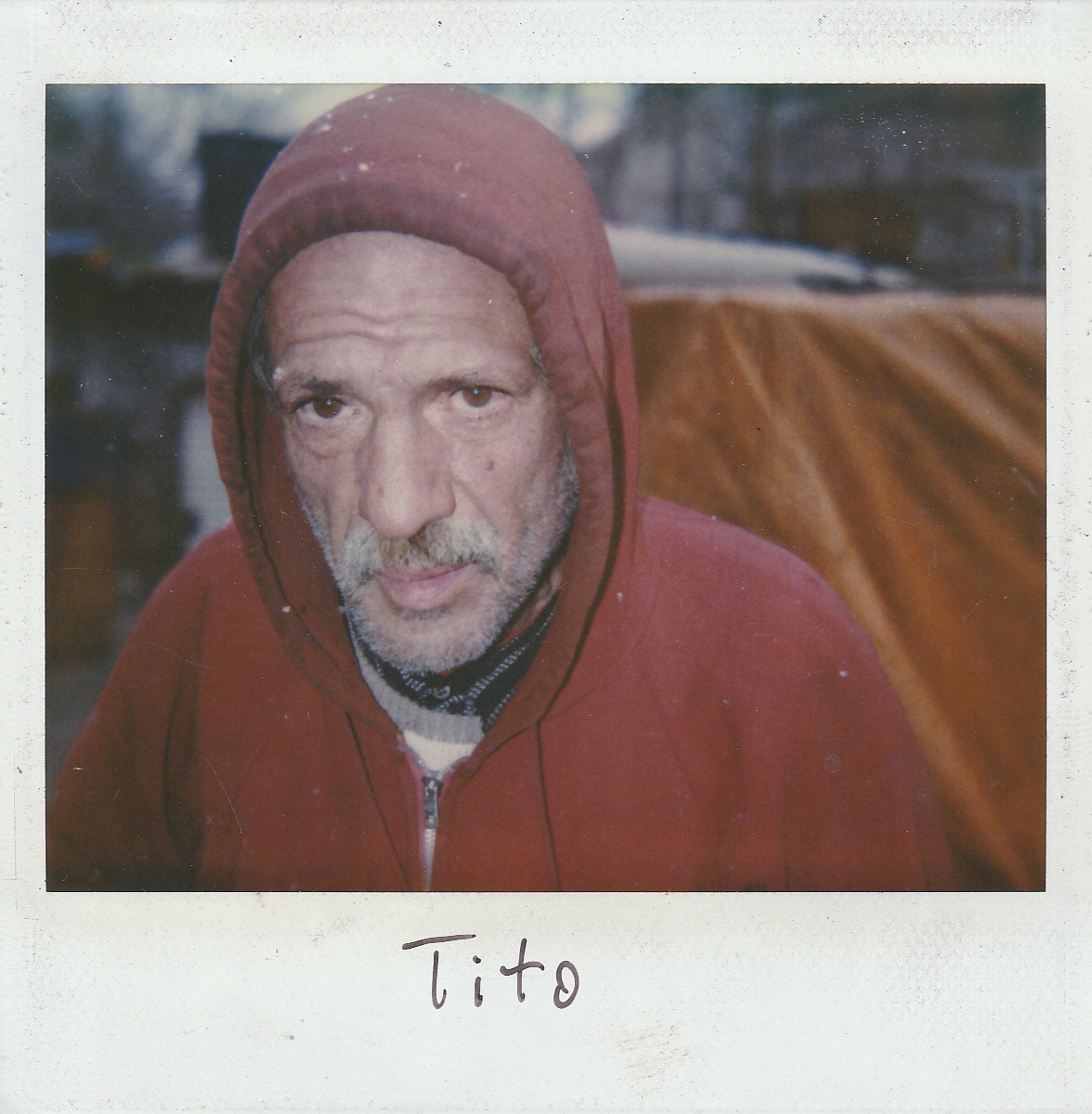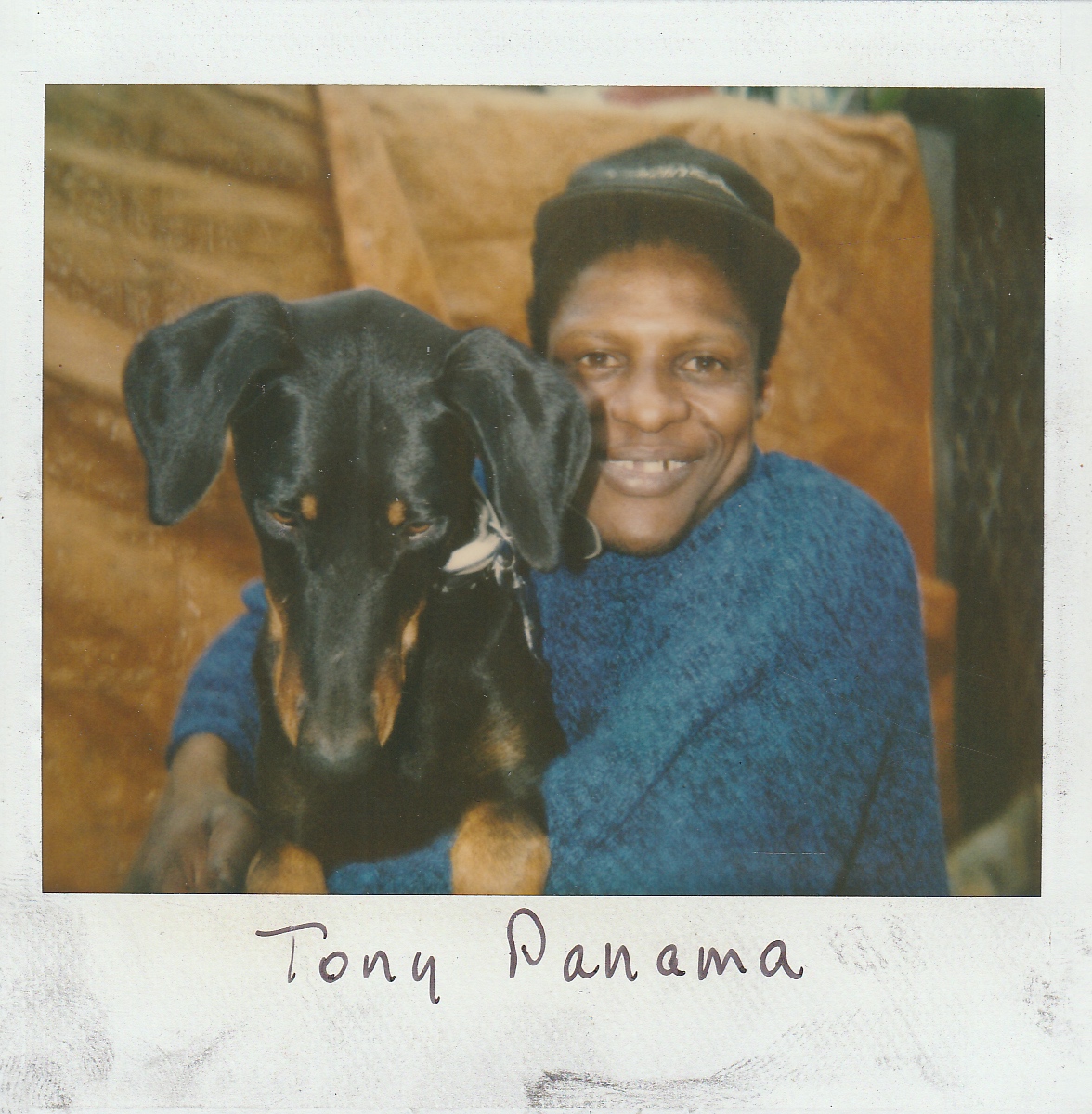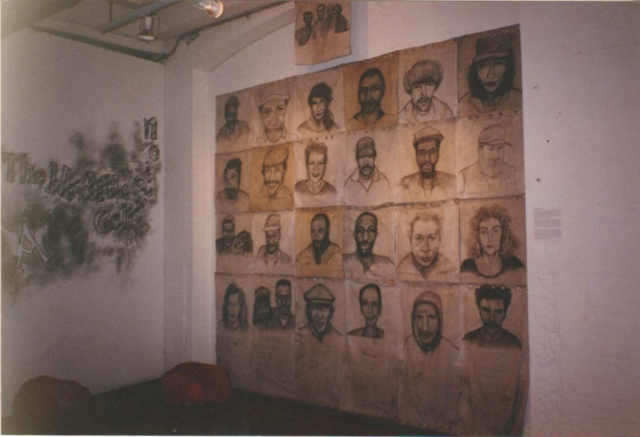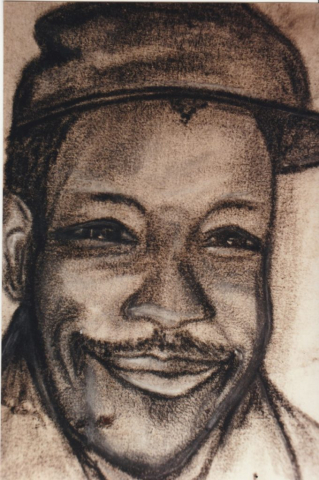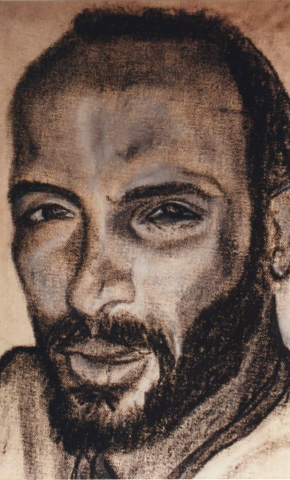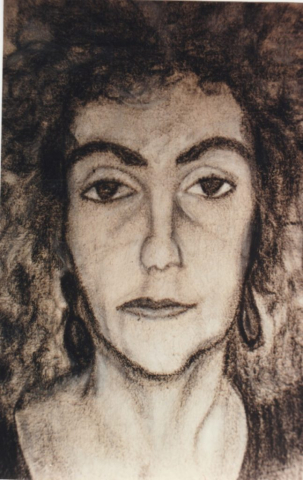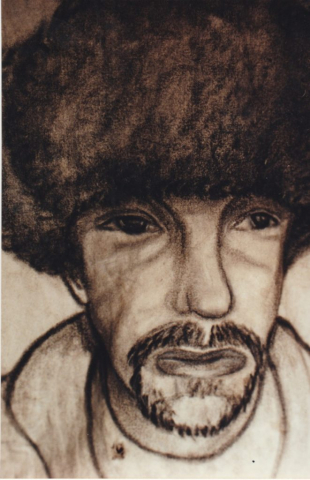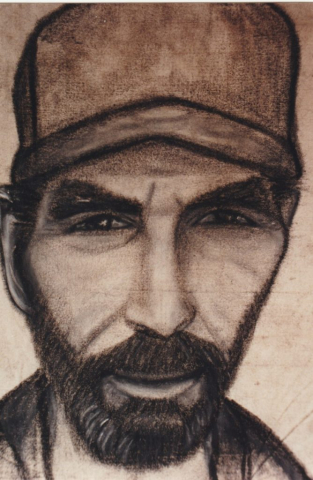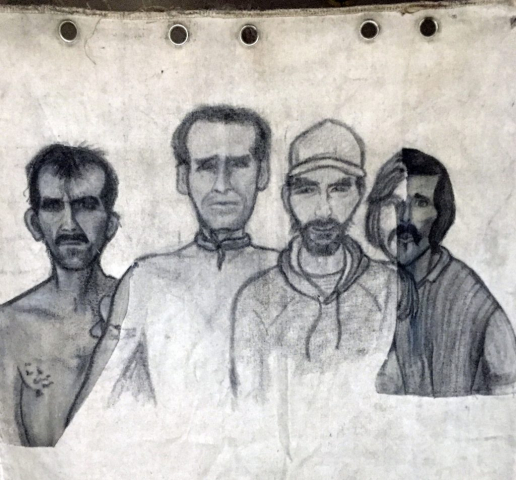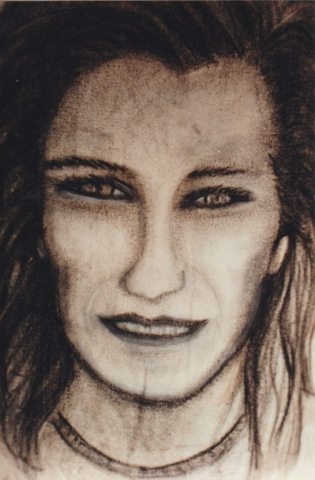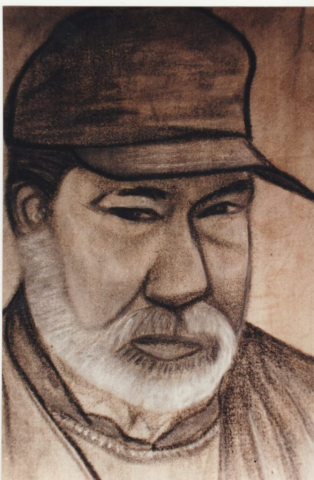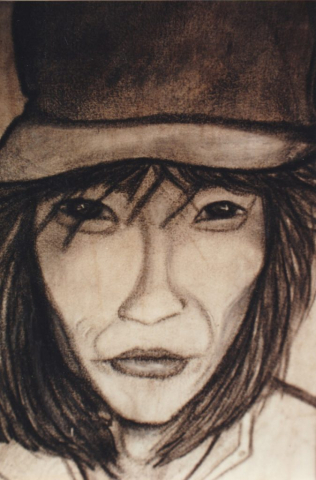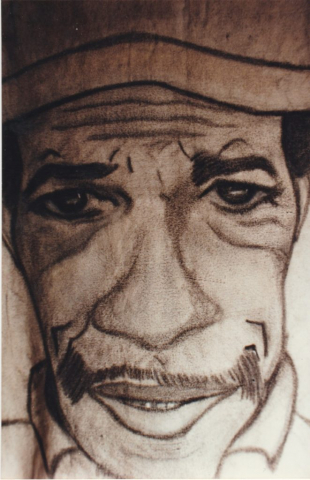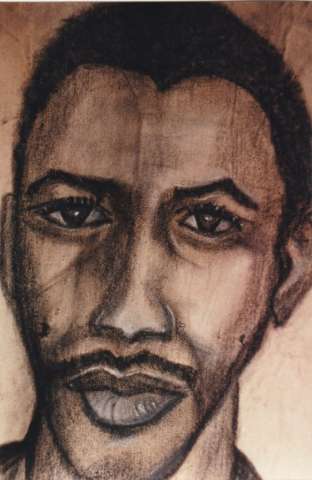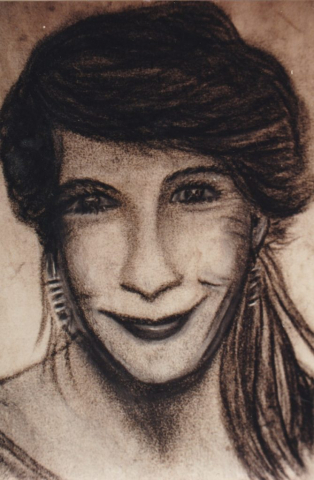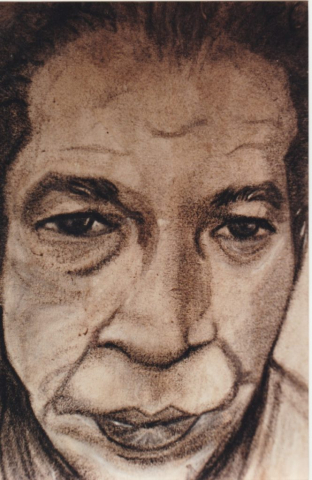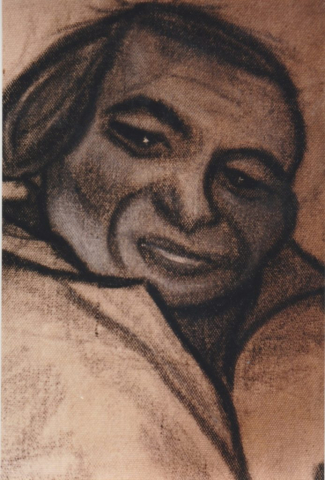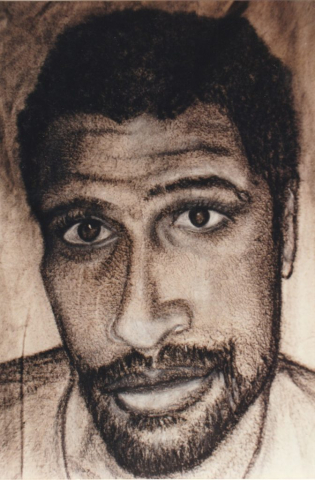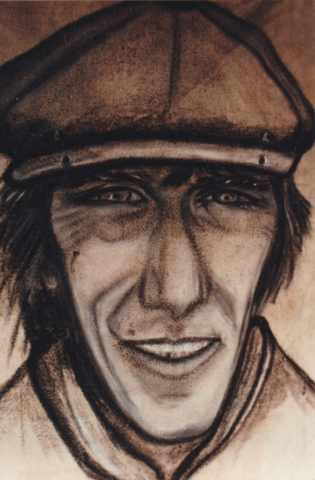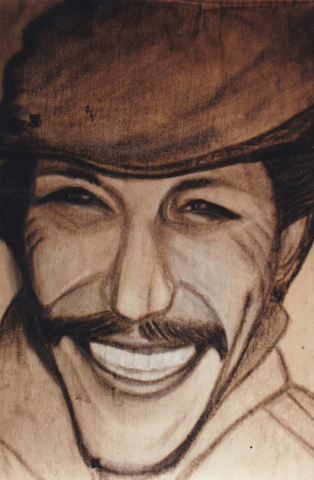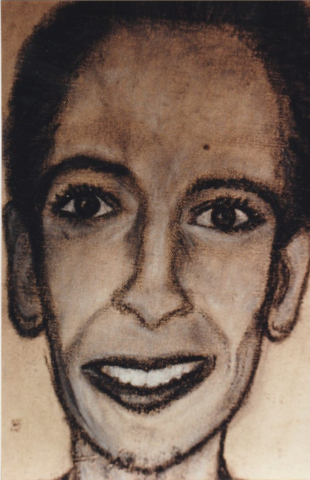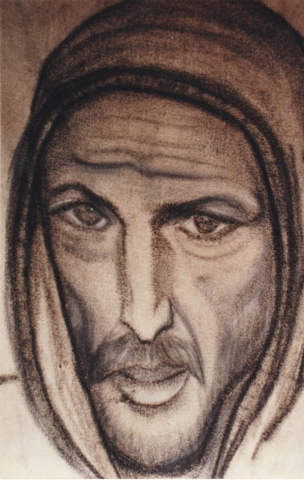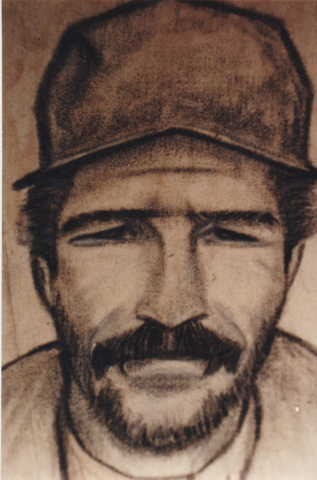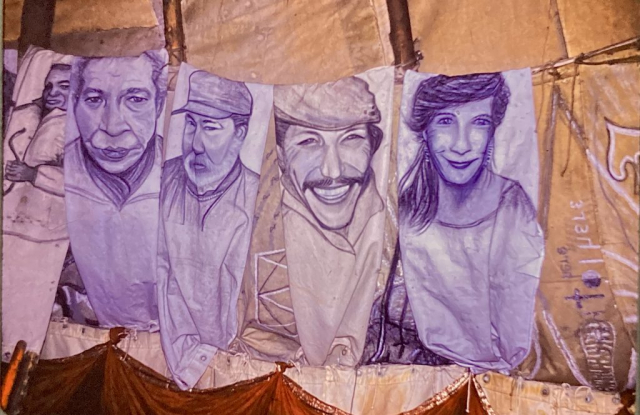The Making Of the Tipi
Many factors in our life converged to make it possible to build the tipi. We had an idea, a concept, of how to both highlight the state of homelessness in the city — all the many shantytowns, especially the one at the foot of the Manhattan Bridge that had existed for at least five years — as well as to draw attention to the centenary of the Wounded Knee Massacre. But it’s a long way from a concept to reality.
First the cover needed to be made. Nick’s job at Pacific Studios, a photographic backdrop rental company whose NYC branch he ran by himself, had a big warehouse and allowed us almost unlimited free time to work on the project. Gabriele bought a used industrial Pfaff sewing machine from a theatrical costumer friend of ours, and Nick, who occasionally worked as “Man with Van,” picked up U.S. Domestic #3 mailbags from the post office in his van — a hundred to start with. The post office gave them to you without question when you told them you had a large bulk mailing to get out.
The (no small) task was to cut their seams, open them into rectangles, and lay them out into the configuration of the tipi as prescribed by the Laubins’ book, The Indian Tipi, pin them together, sew them into small sections, and then finally, sew those sections together.
Initially, Gabriele had begun the project by illustrating with oil sticks her version of the Tarot’s Minor Arcana onto the mailbag rectangles. A Tarot deck has 78 cards. Our first idea was to make the tipi out of those 78 painted cards once they were finished. [The originals of these drawings don’t exist anymore and these are the only photos of them.]
Our designer friend Valerie from Coney Island USA said what Gabriele already knew was true, that those cards would take her forever to paint. She suggested that the two of us were procrastinating, not really sure we wanted to actually “erect a tipi in a shantytown,” but instead to allow it to be complete as a piece of concept art, a thought experiment. After talking it over, we agreed Valerie was at least half right and took her suggestion that Gabriele make the tipi out of plain mailbags and then finish the drawings after the tipi was erected, using them as its inner lining. So Gabriele finished sewing the cover together and we took the next step: getting the tipi poles.
We were lucky because many of our artistic peers at the time often gathered as a group upstate in the Catskills, where friends Portia and Jared had inherited a family home on fifty acres of forest. Portia was visual installation artist who embellished the interior of their county home with all manner of art. Jared made land art, leading visitors on tours of his nature projects scattered throughout the forested acreage. One art piece was the huge shell and rotting carcass of an African Spurred Tortoise, the largest species of mainland tortoise. He dragged the corpse from the “animal graveyard” in the adjacent zoo property, the Catskill Game Farm, and hoisted it up into the branch crotch in a young oak tree. He also built a large art studio using hand-hewn beams fitted together with mortise and tenon joints as it was done in antique New York buildings. Our friend Tom was creating “living lawn chairs” by growing and pruning hedge trees into furniture. Nick’s brother Tom has always been a wonderfully crazy folk artist, so the notion of building a replica of Lakota tipi fit naturally into the aesthetics being discussed by our Catskill peer group.
Most of the forest was oak trees, but we found some scattered pines. In each of these dense groves, a few trees shot up toward the sun but then died mid growth. This made them both straight, dried out, and lighter than live trees. We carried them one at a time, weaving circuitously through the thick woods, to the side of the road, picking them up in the van to carry to Portia and Jared’s front yard. There we erected the tipi in a cursory way — with a minimal number of trees — to see if the cover actually fit. Excitement by all when it did! We then loaded the trees in the van for the trip to Pacific Studios in Queens.
Leaving the Catskills like a trucker’s convoy, with a car always in front and behind the van, using as many country side roads as possible, we traveled the 125 miles back to the City, dropping the trees off at Pacific Studios. There we stripped off the bark, trimmed and hewed them into lodge poles.
All the prep work in the warehouse was complete now. Time to act. Time to erect the tipi…
Once living in our new home, Gabriele took Polaroids of each of the residents.
She used those to paint portraits of our neighbors as she got to know them, her version of the Tarot Court Cards.

